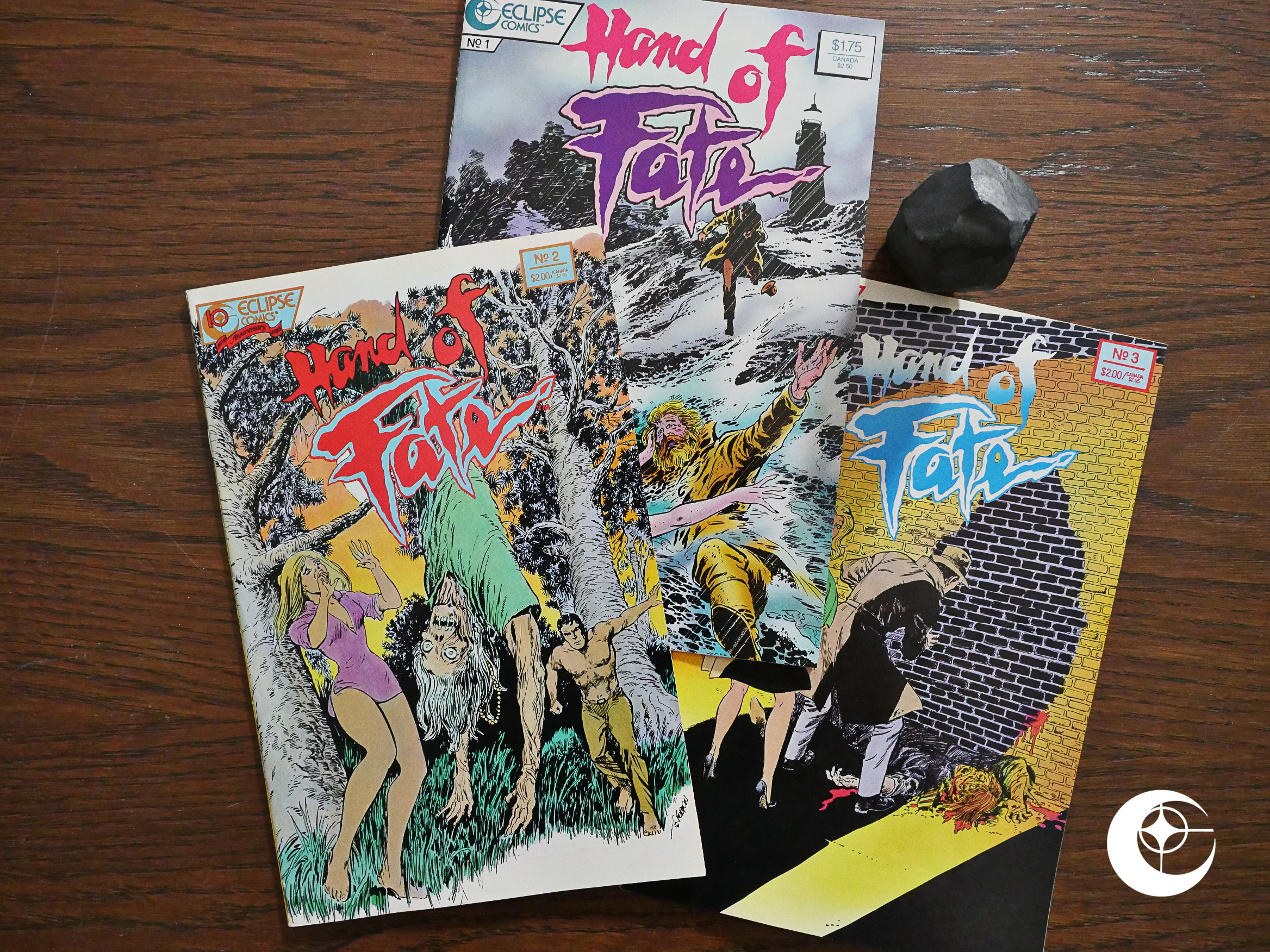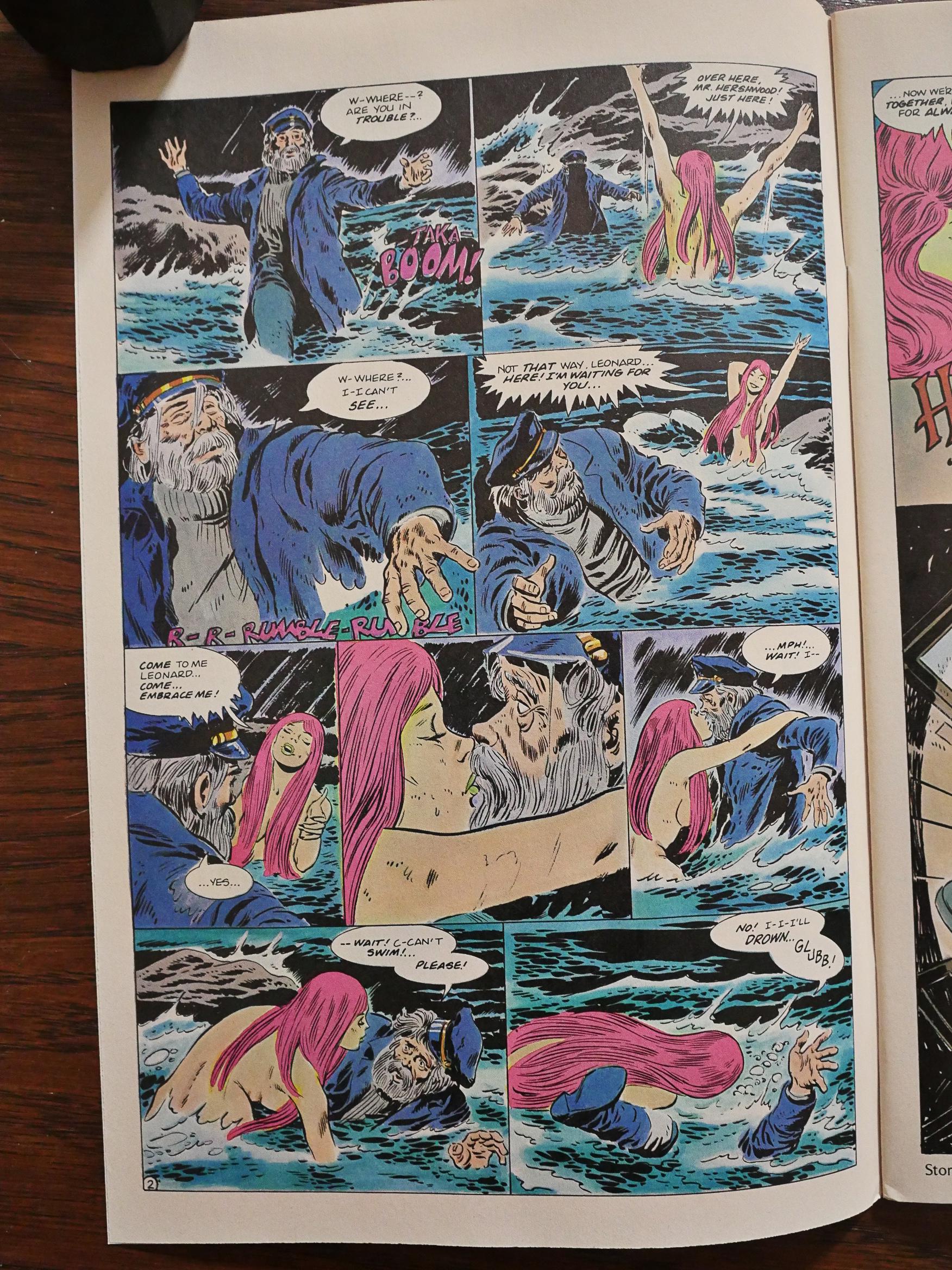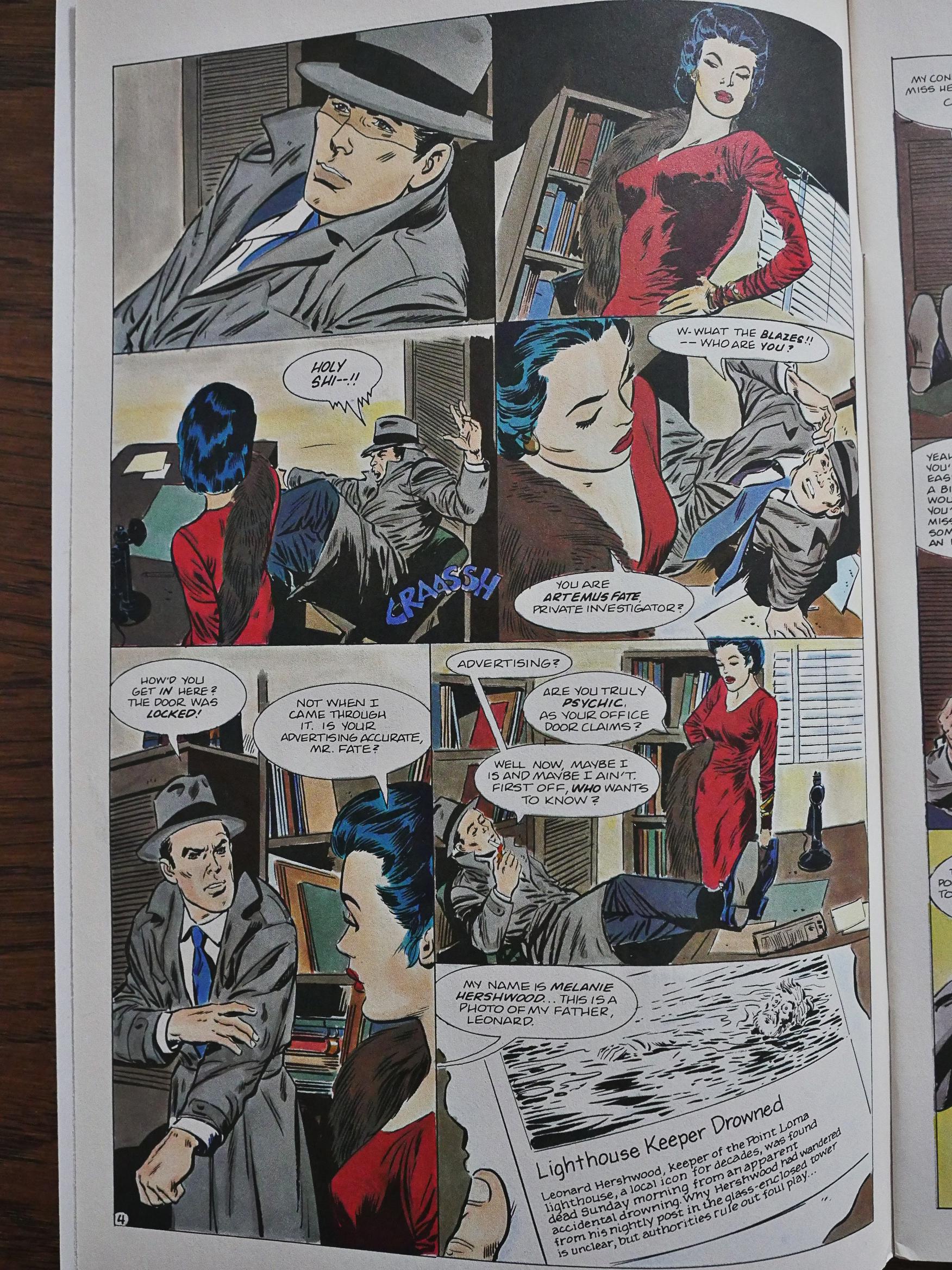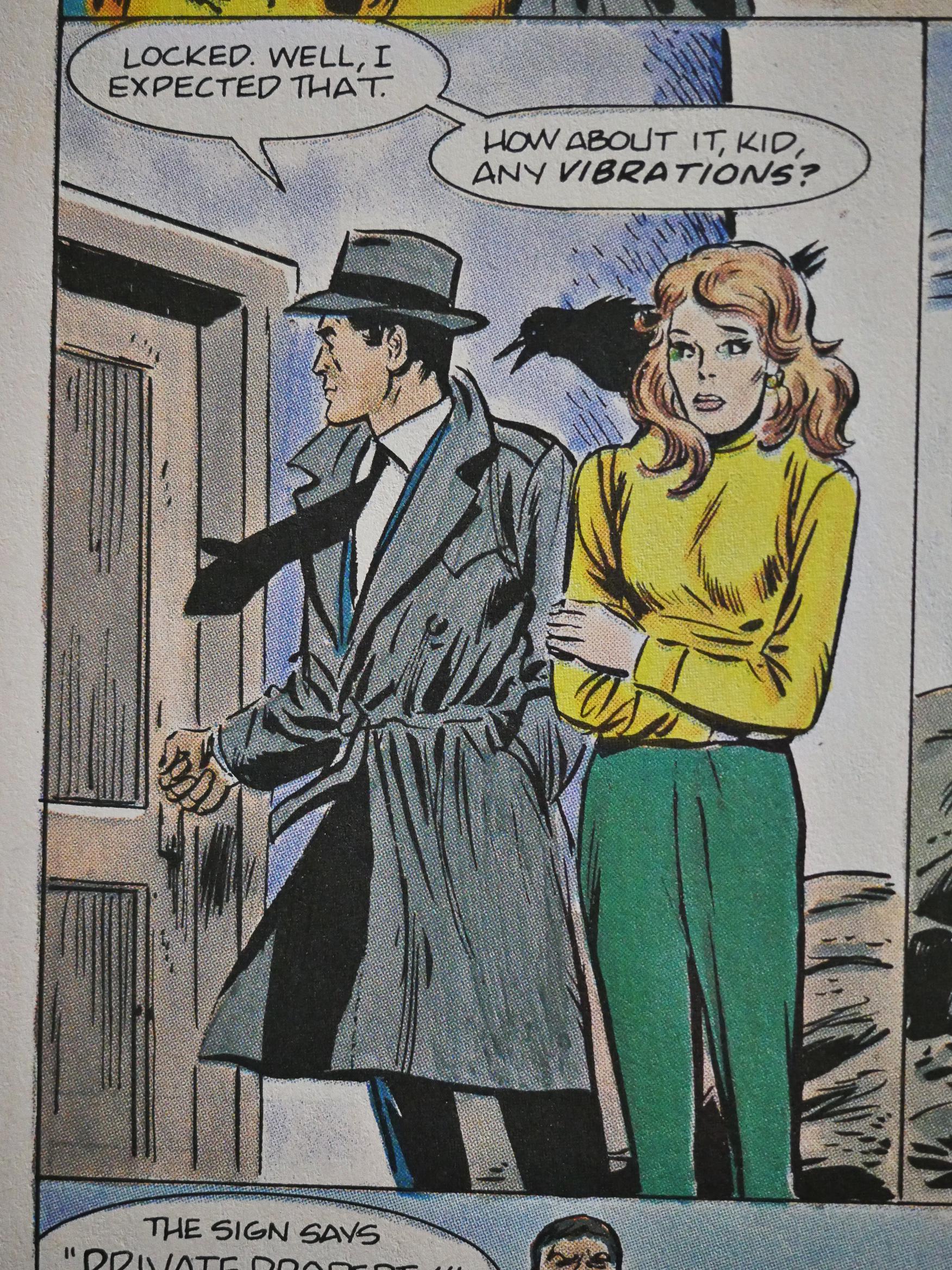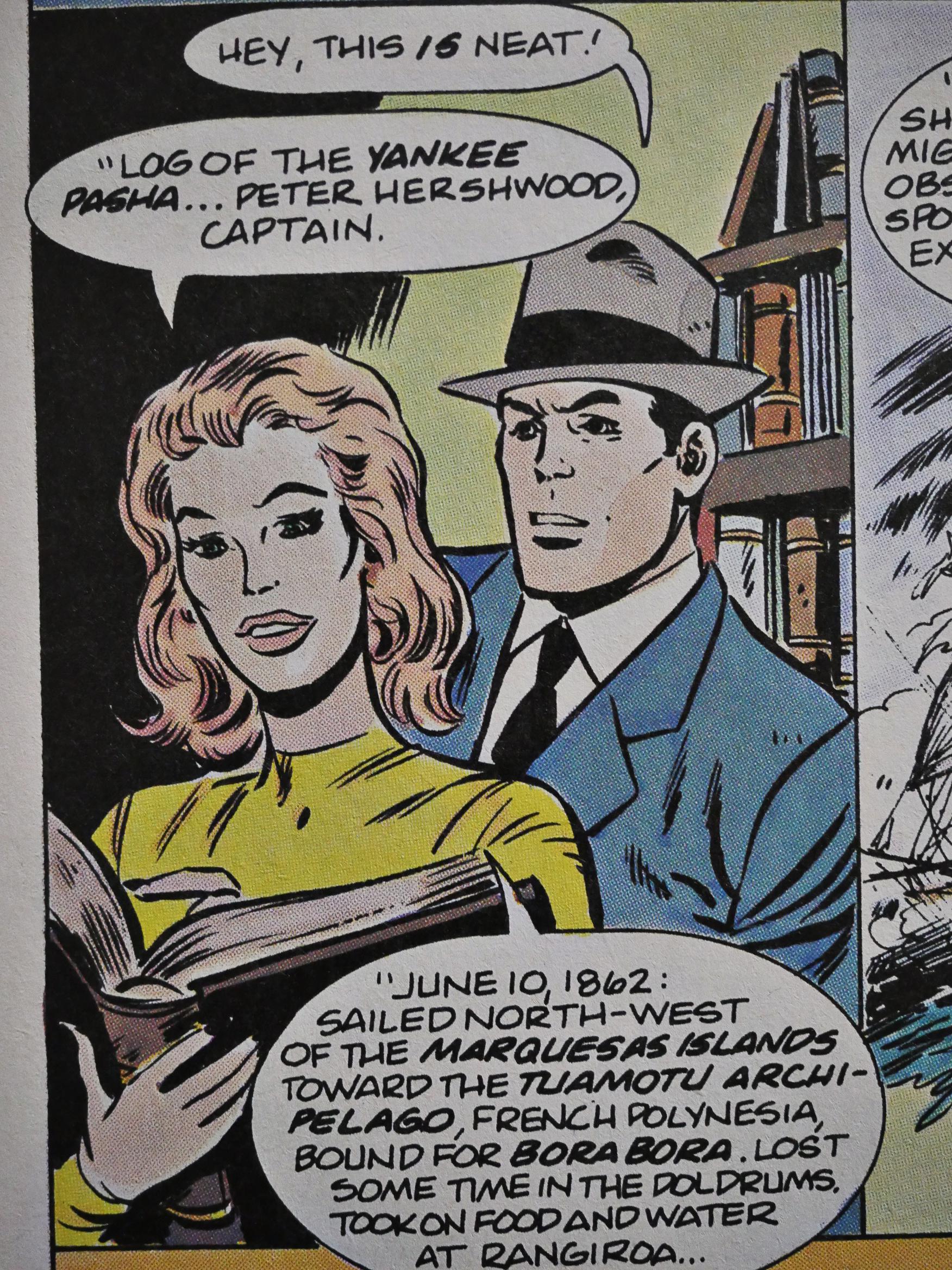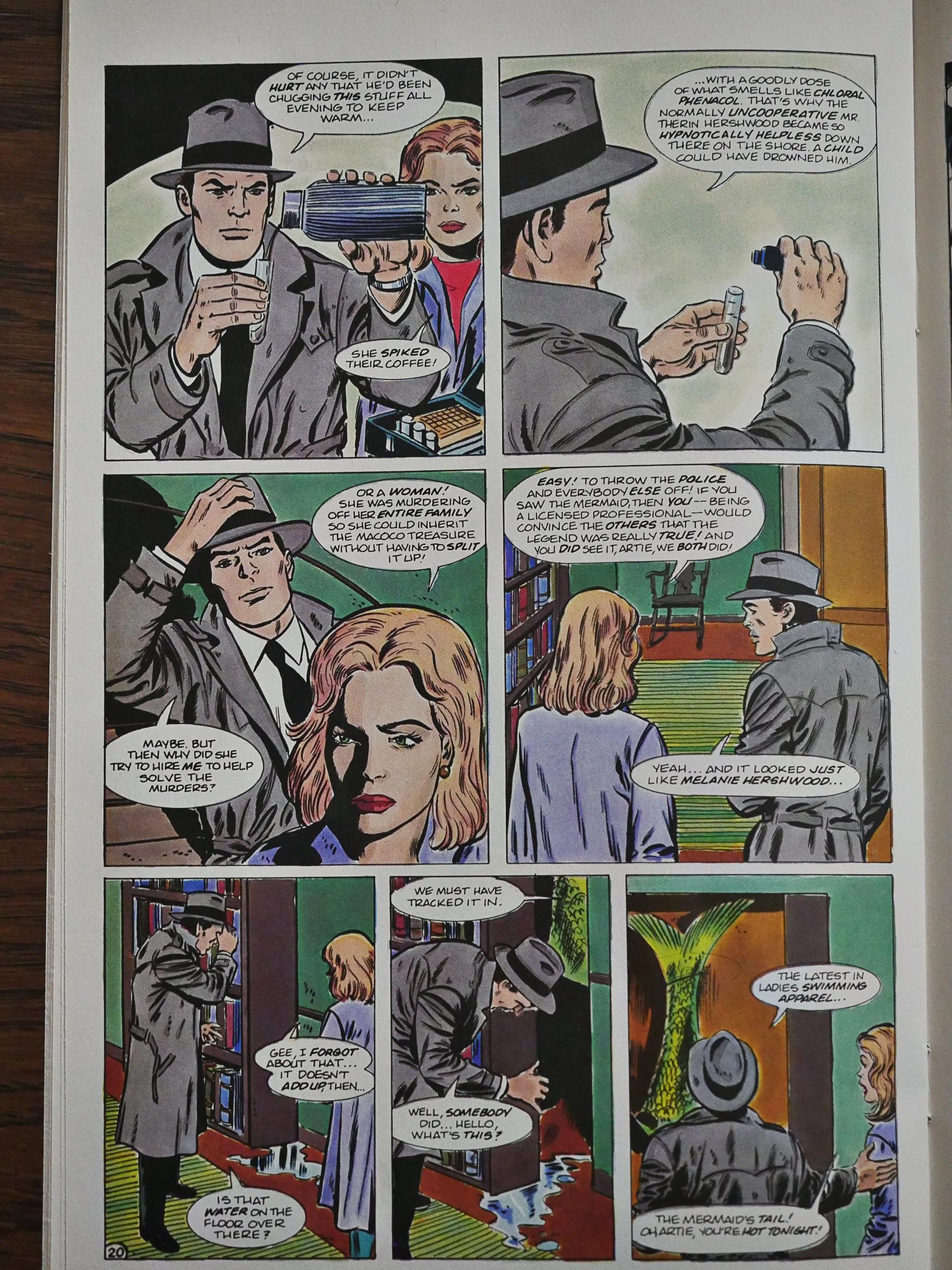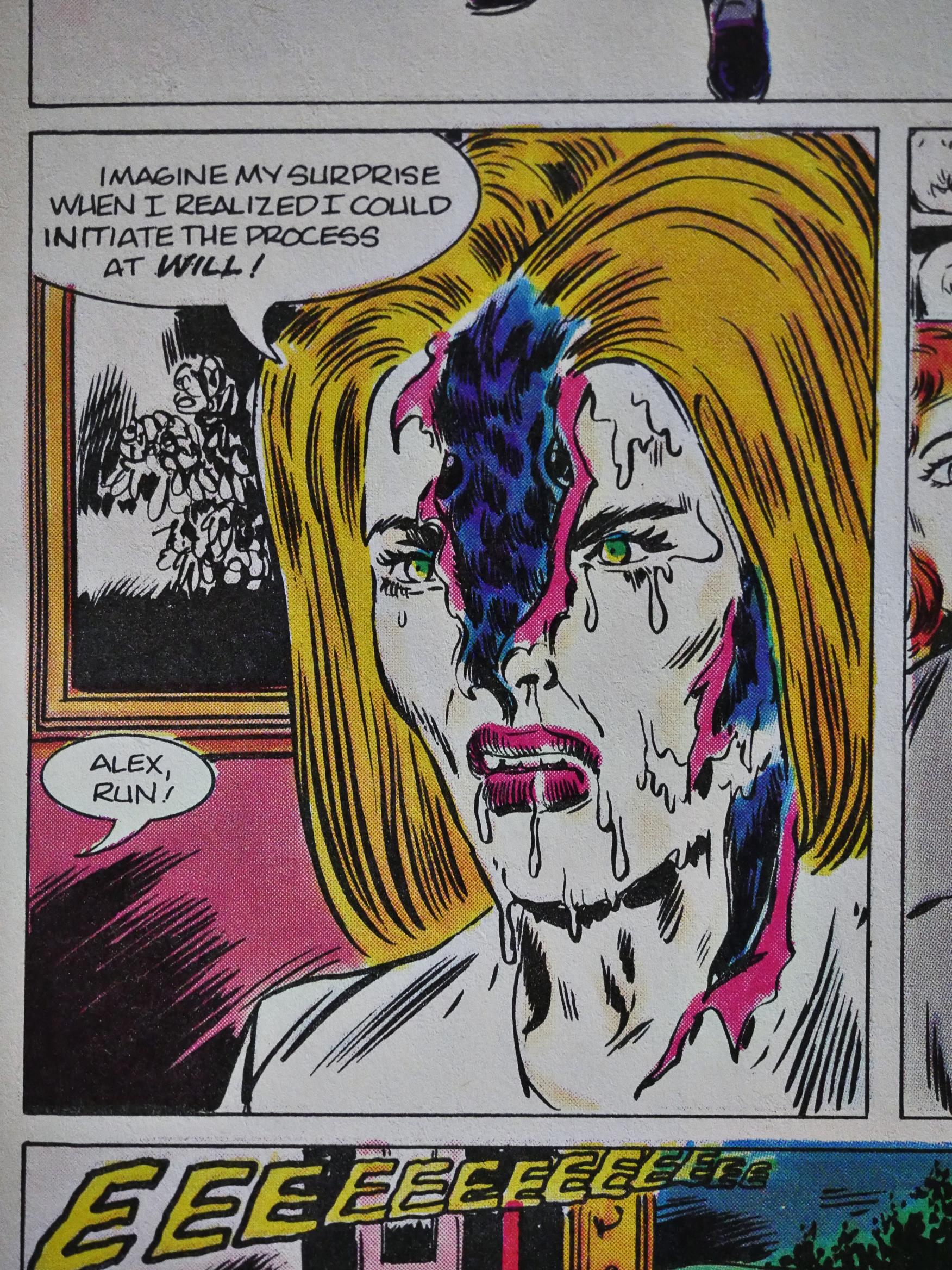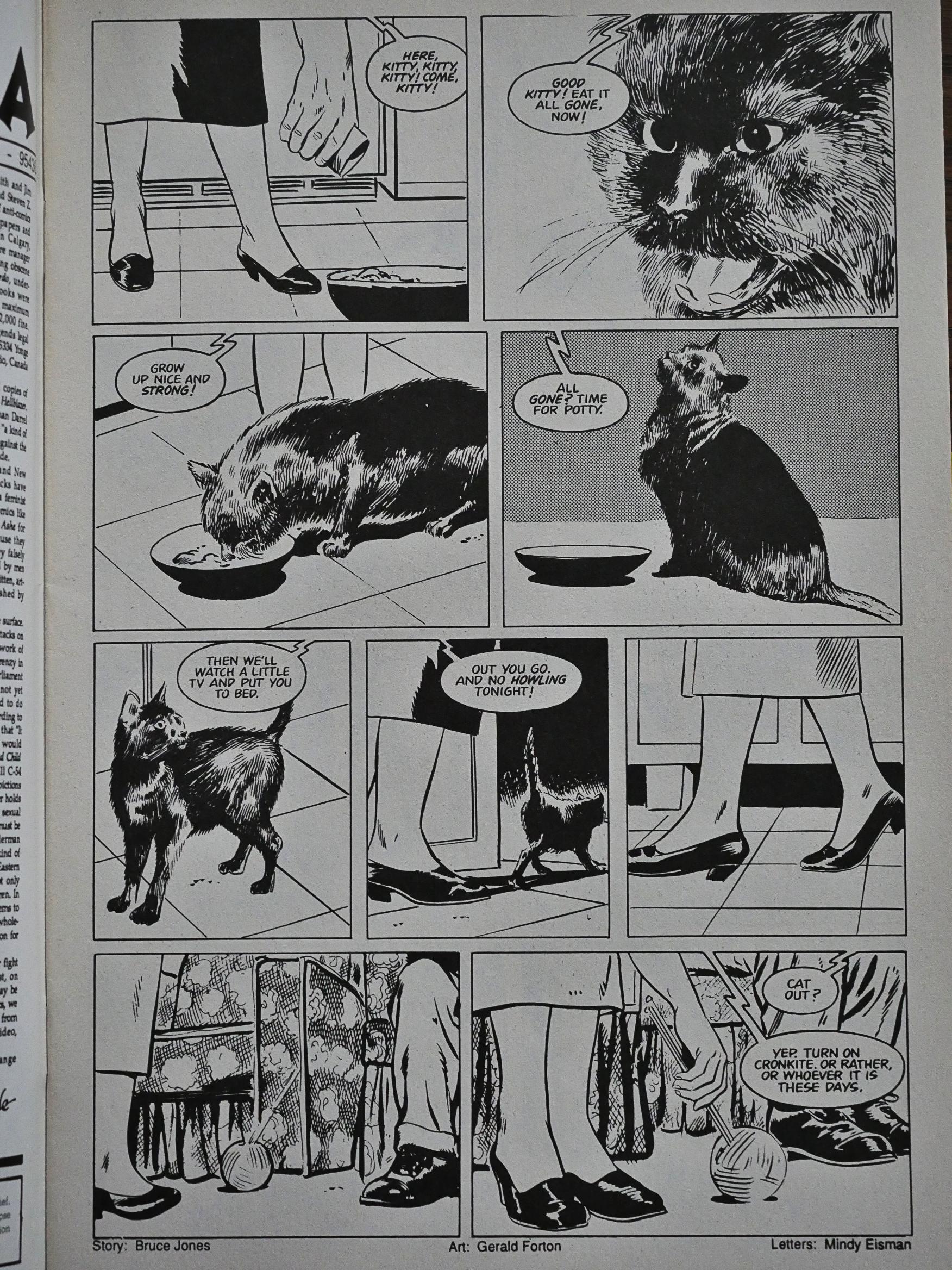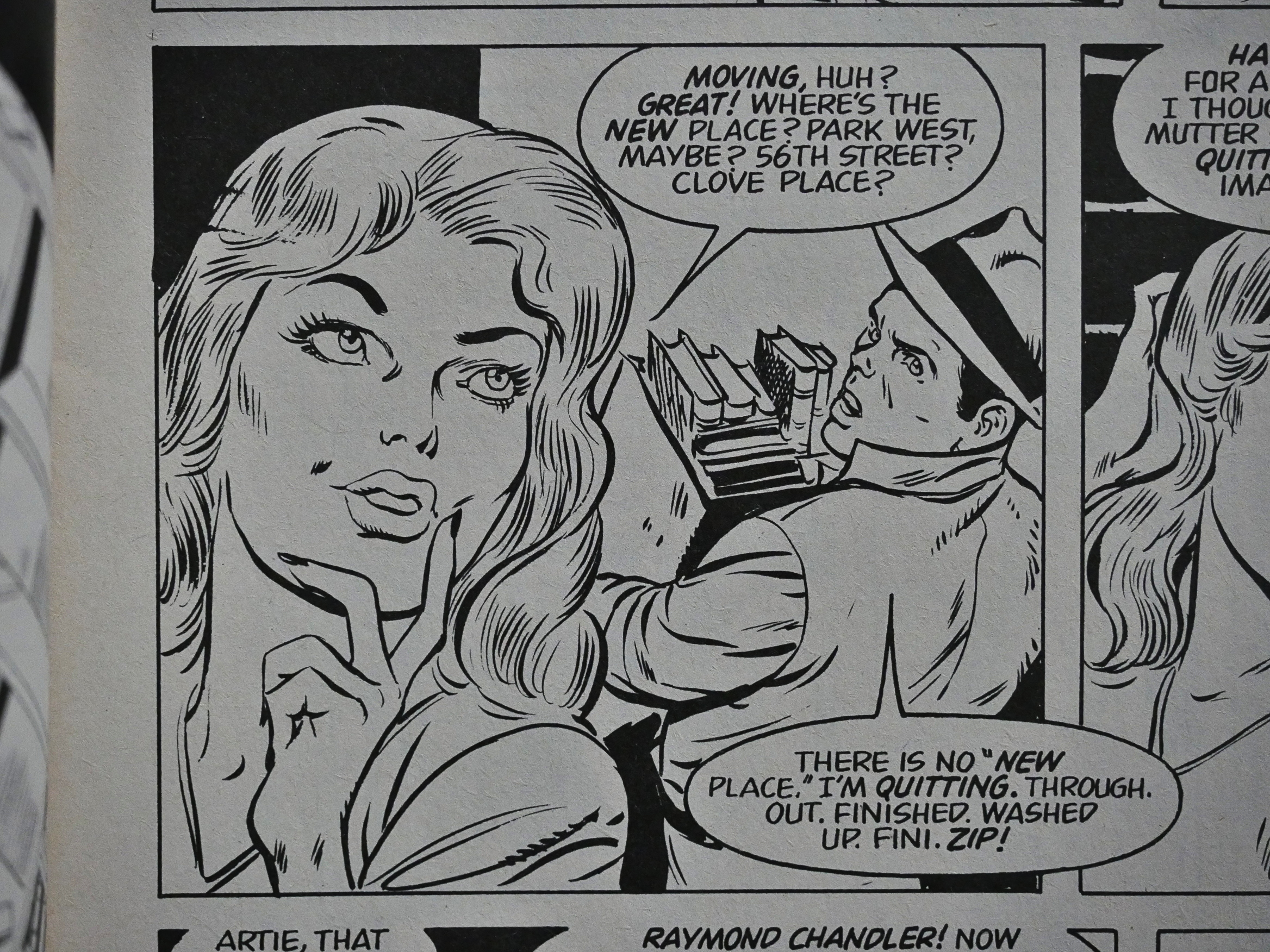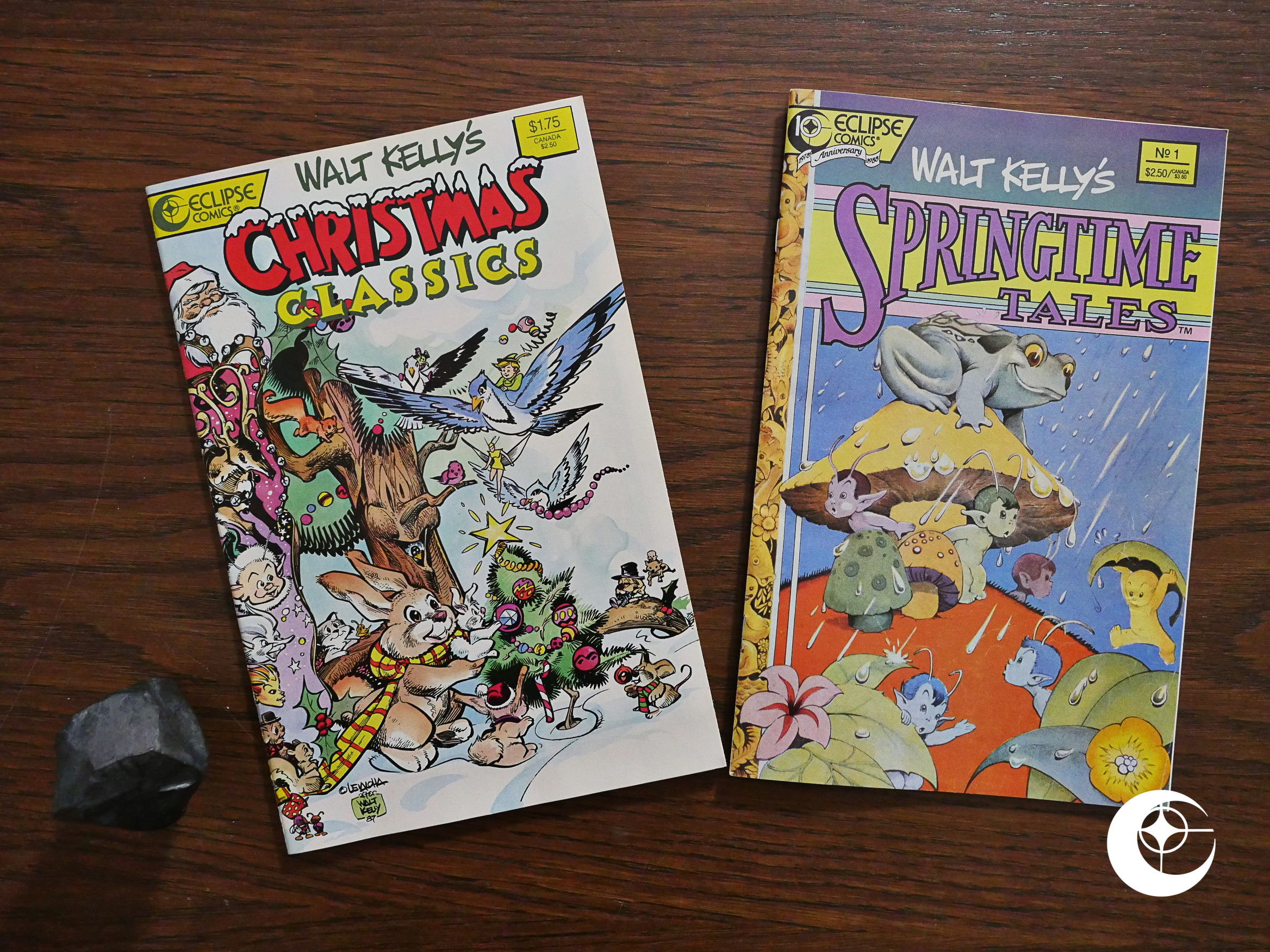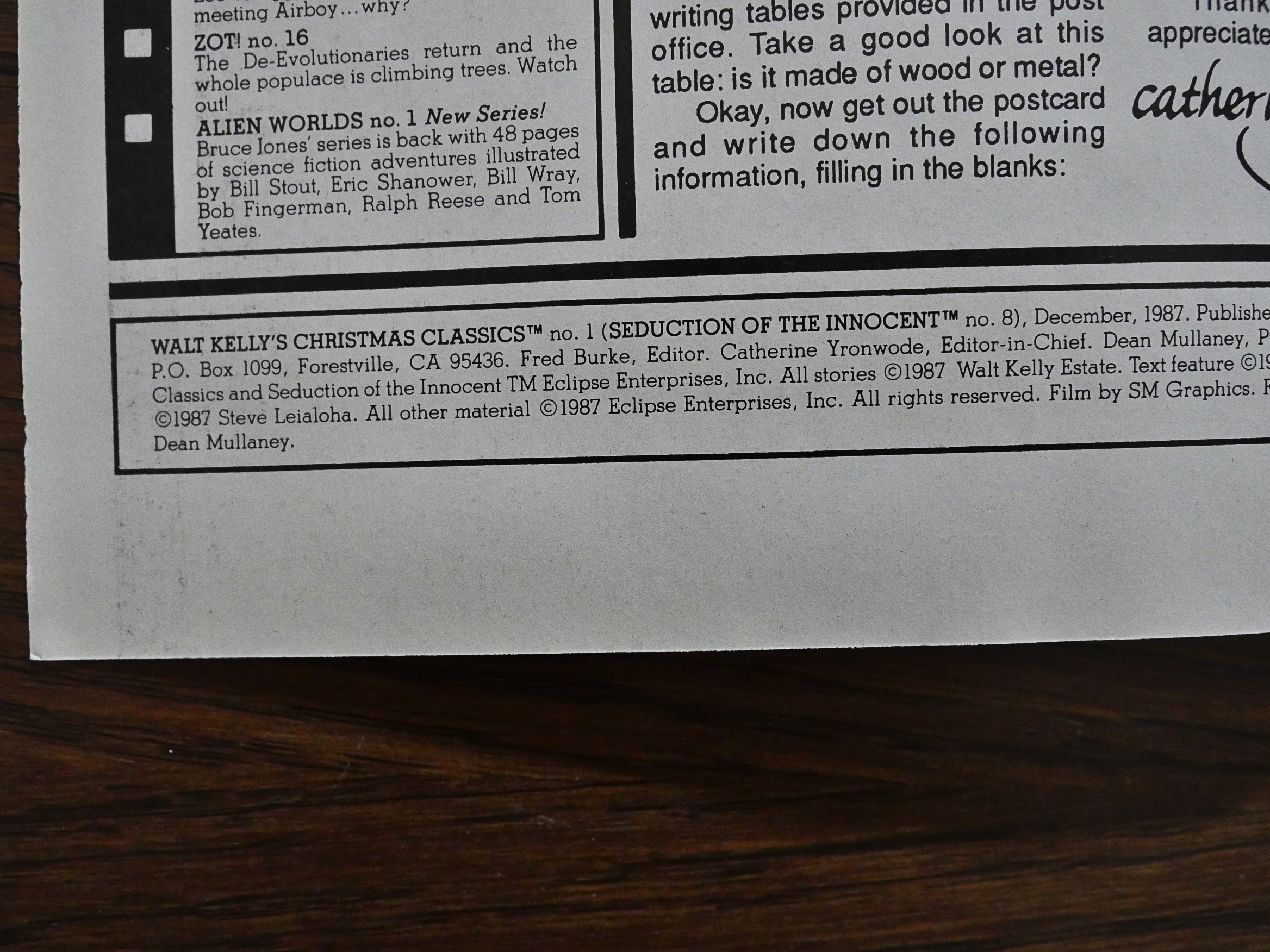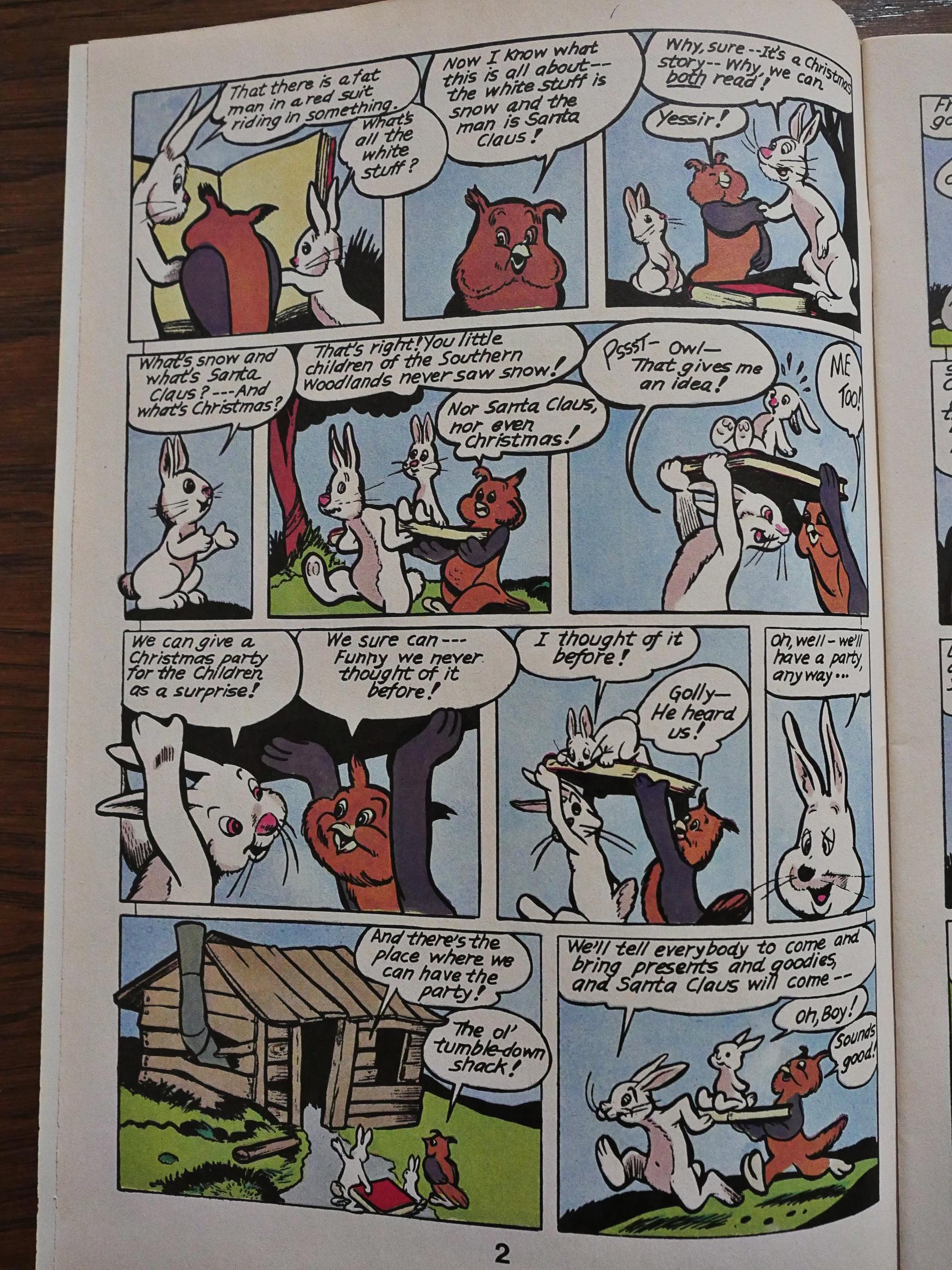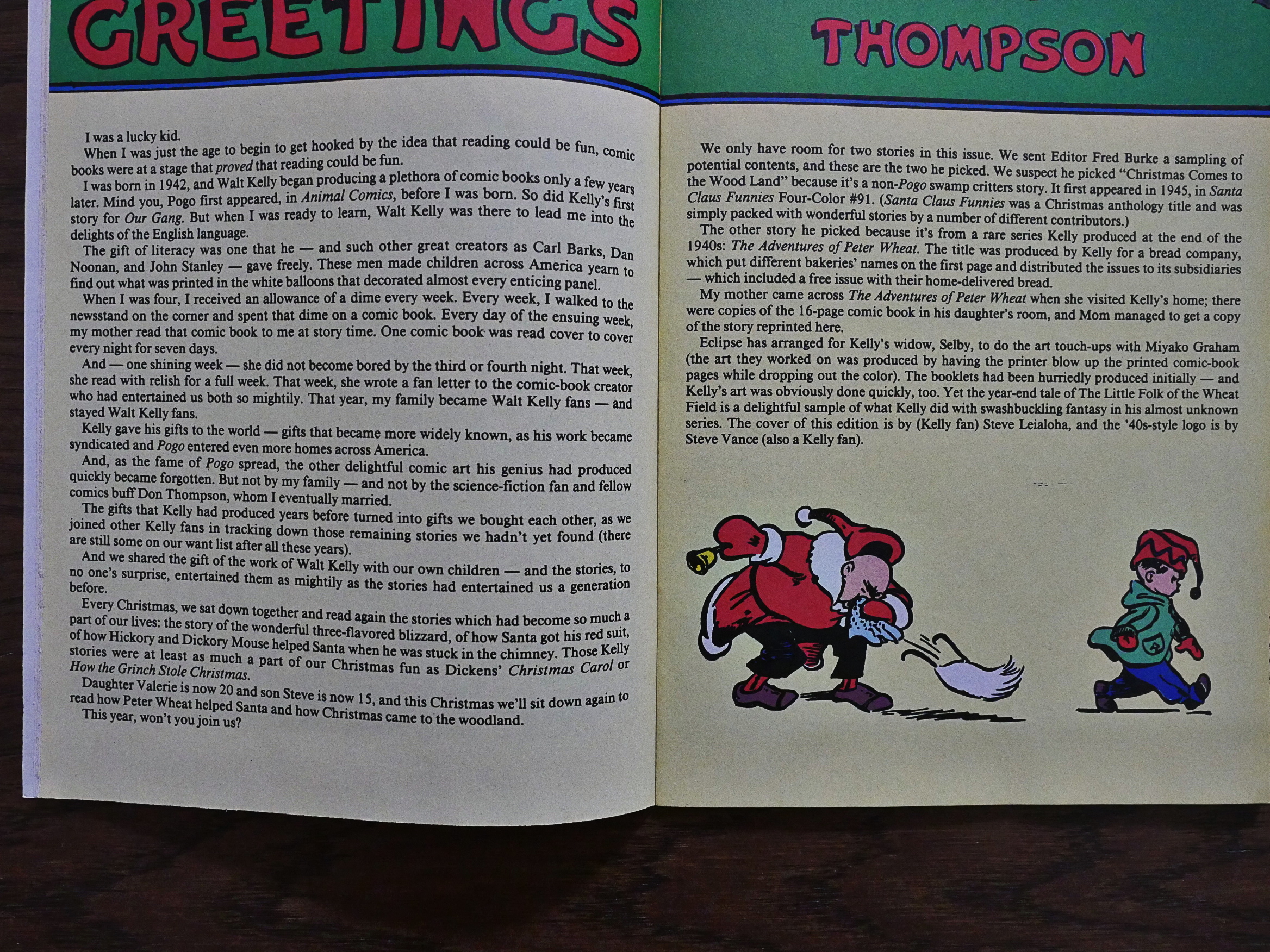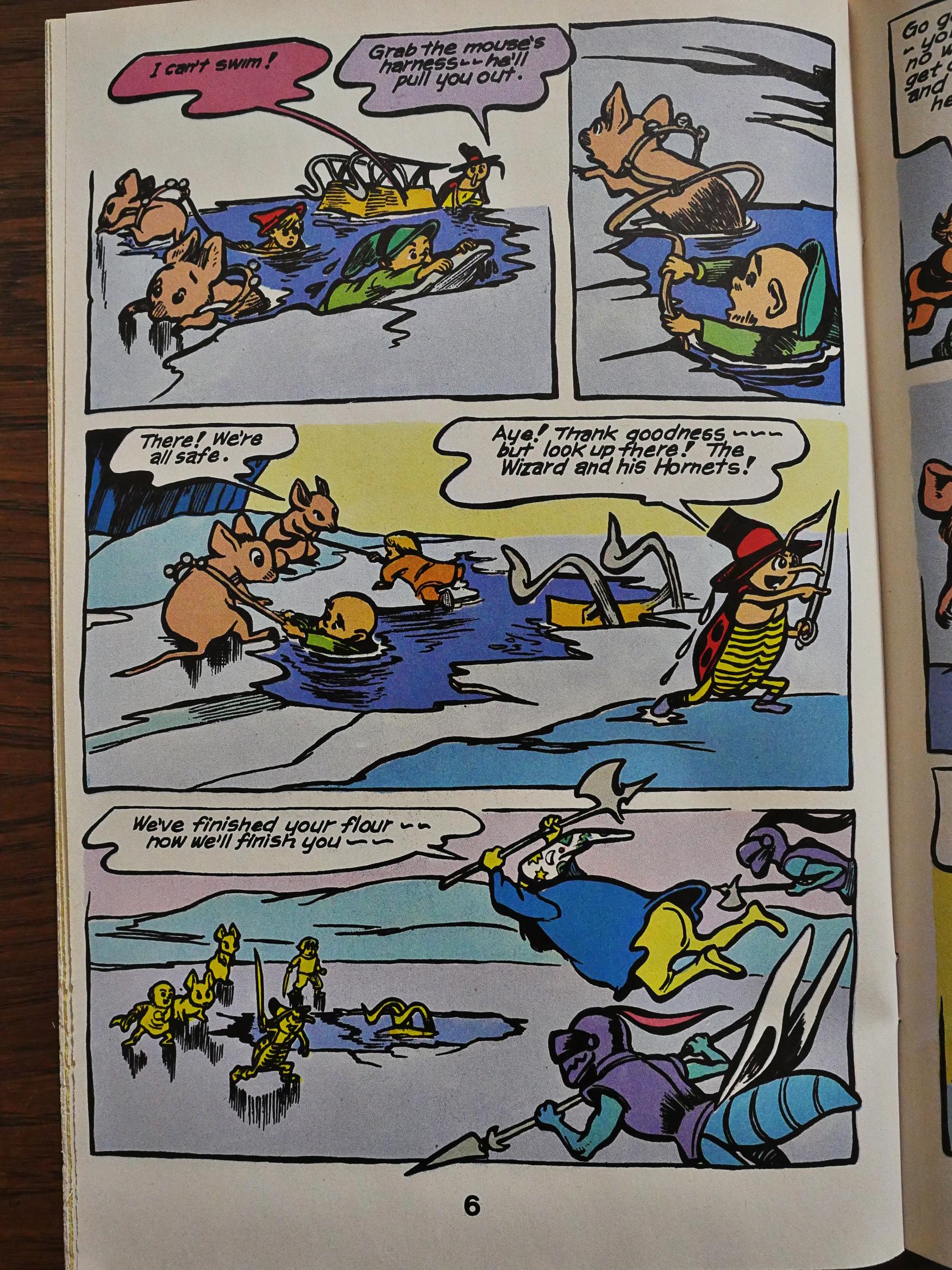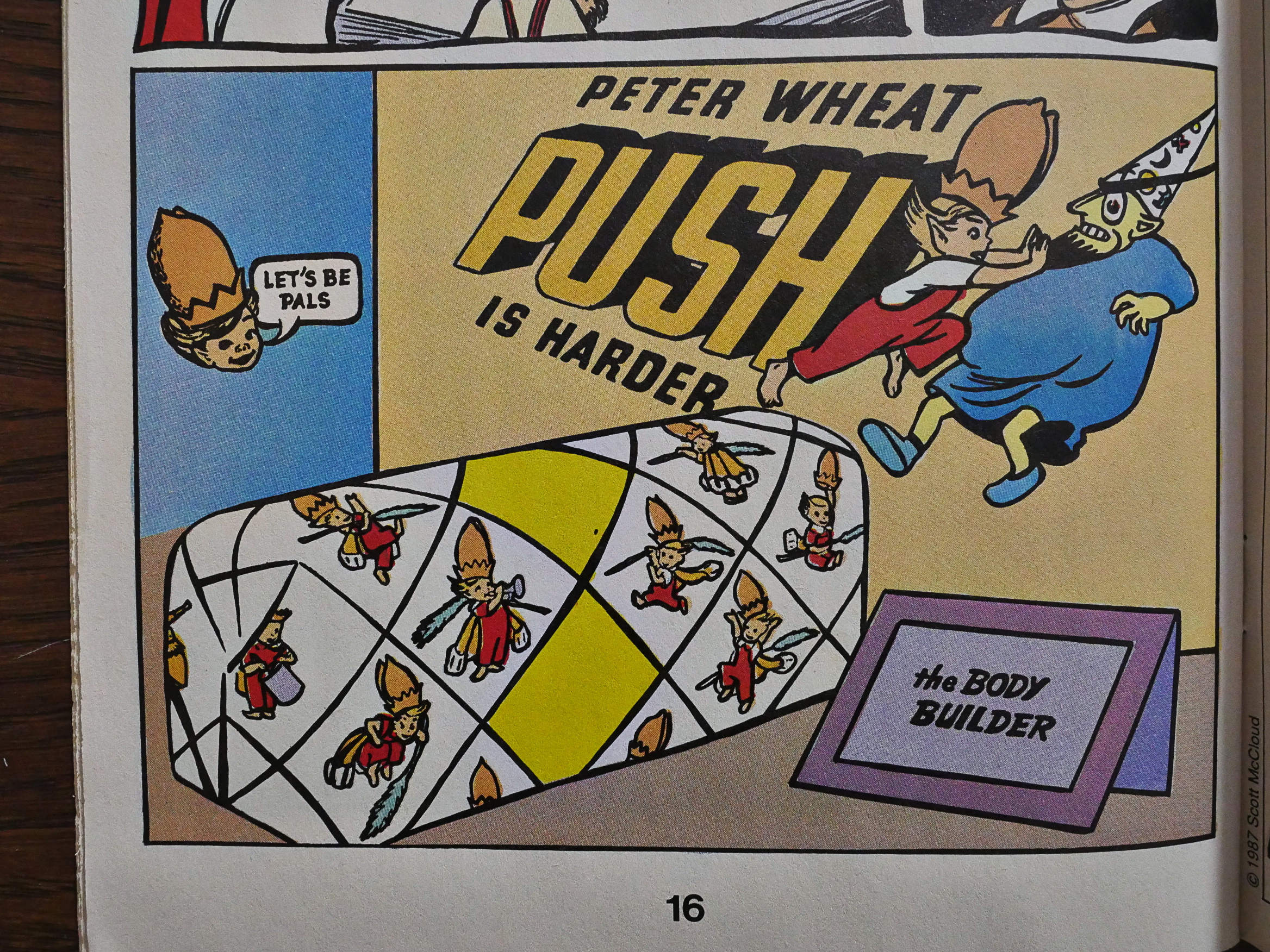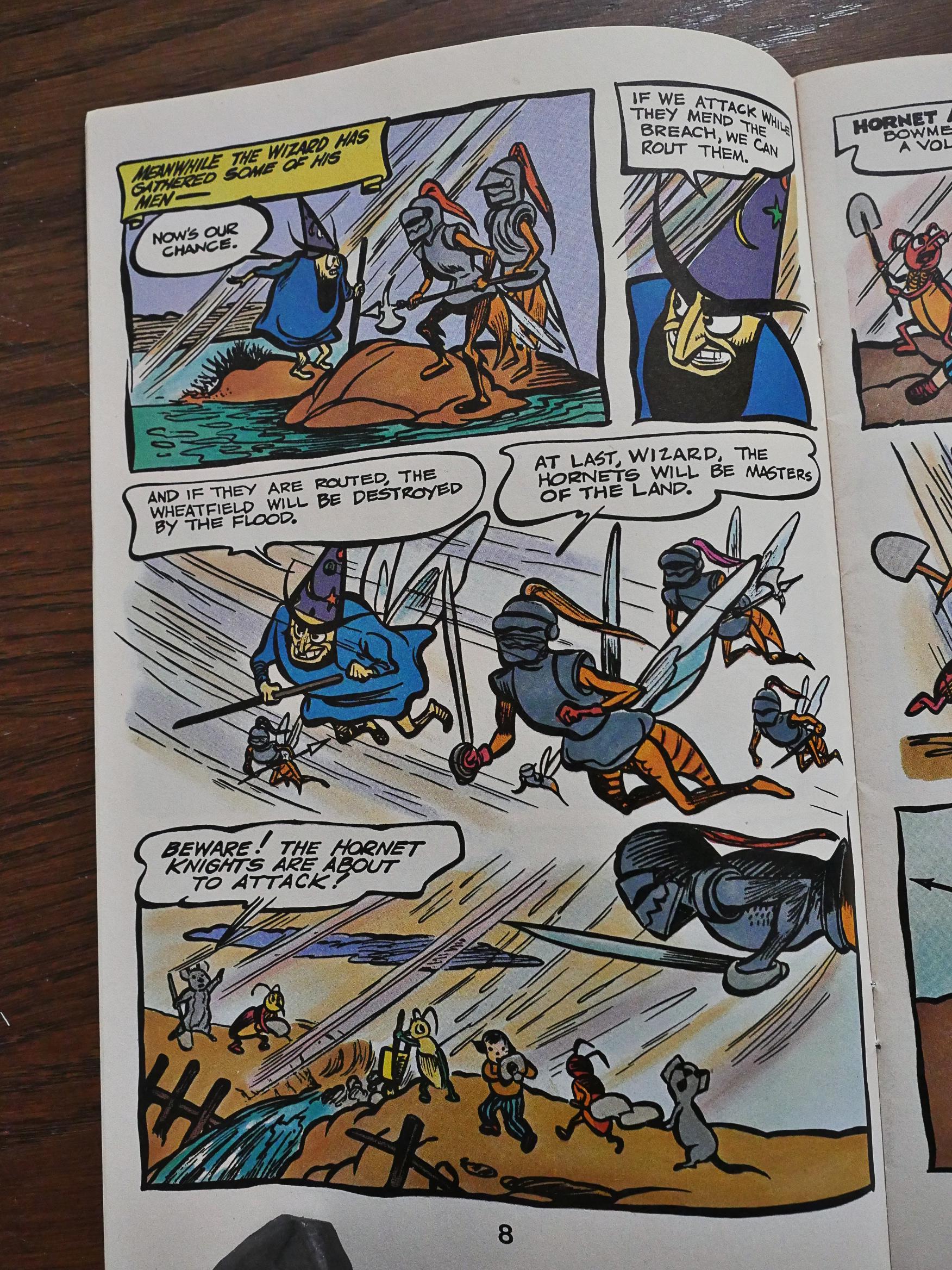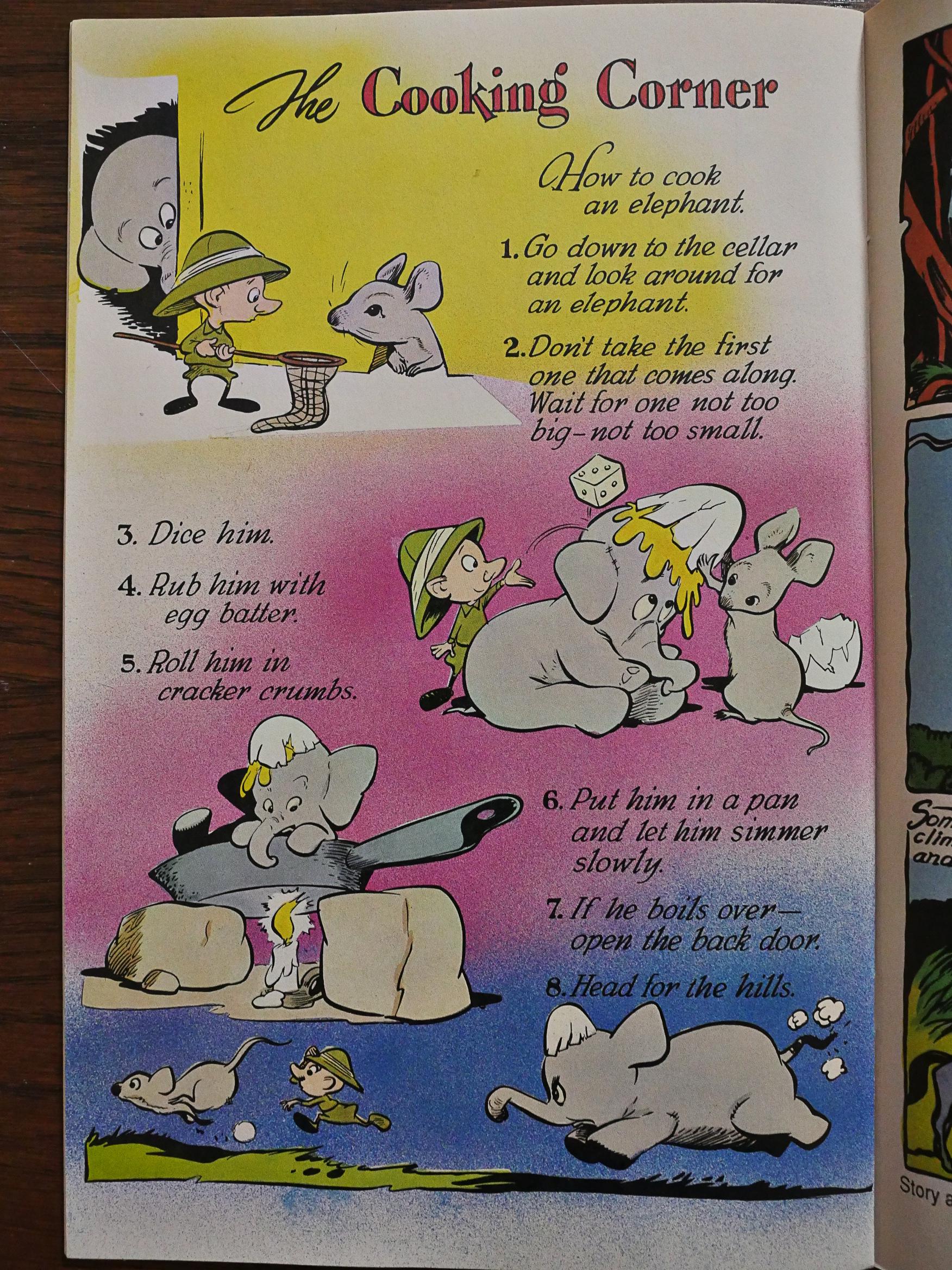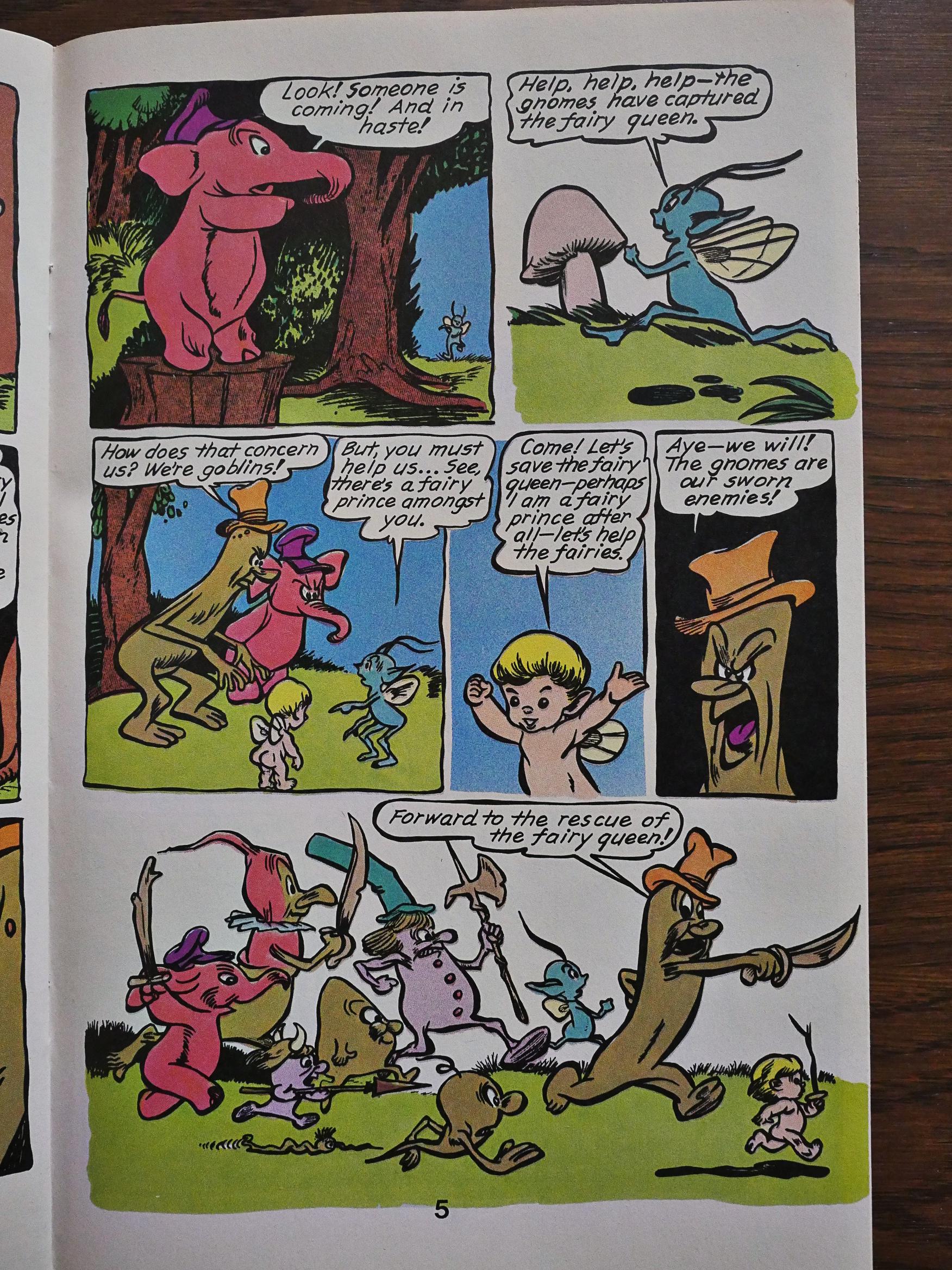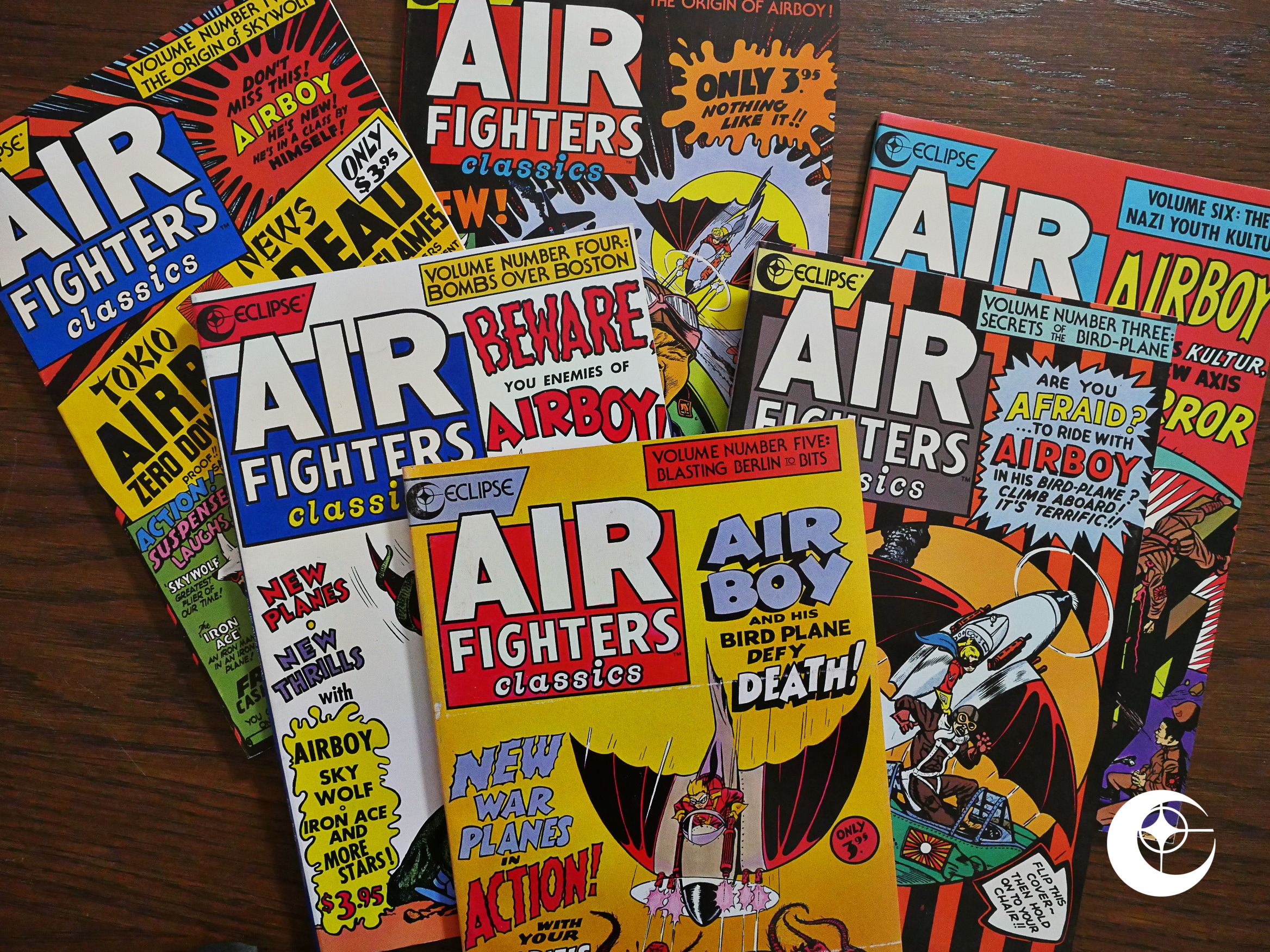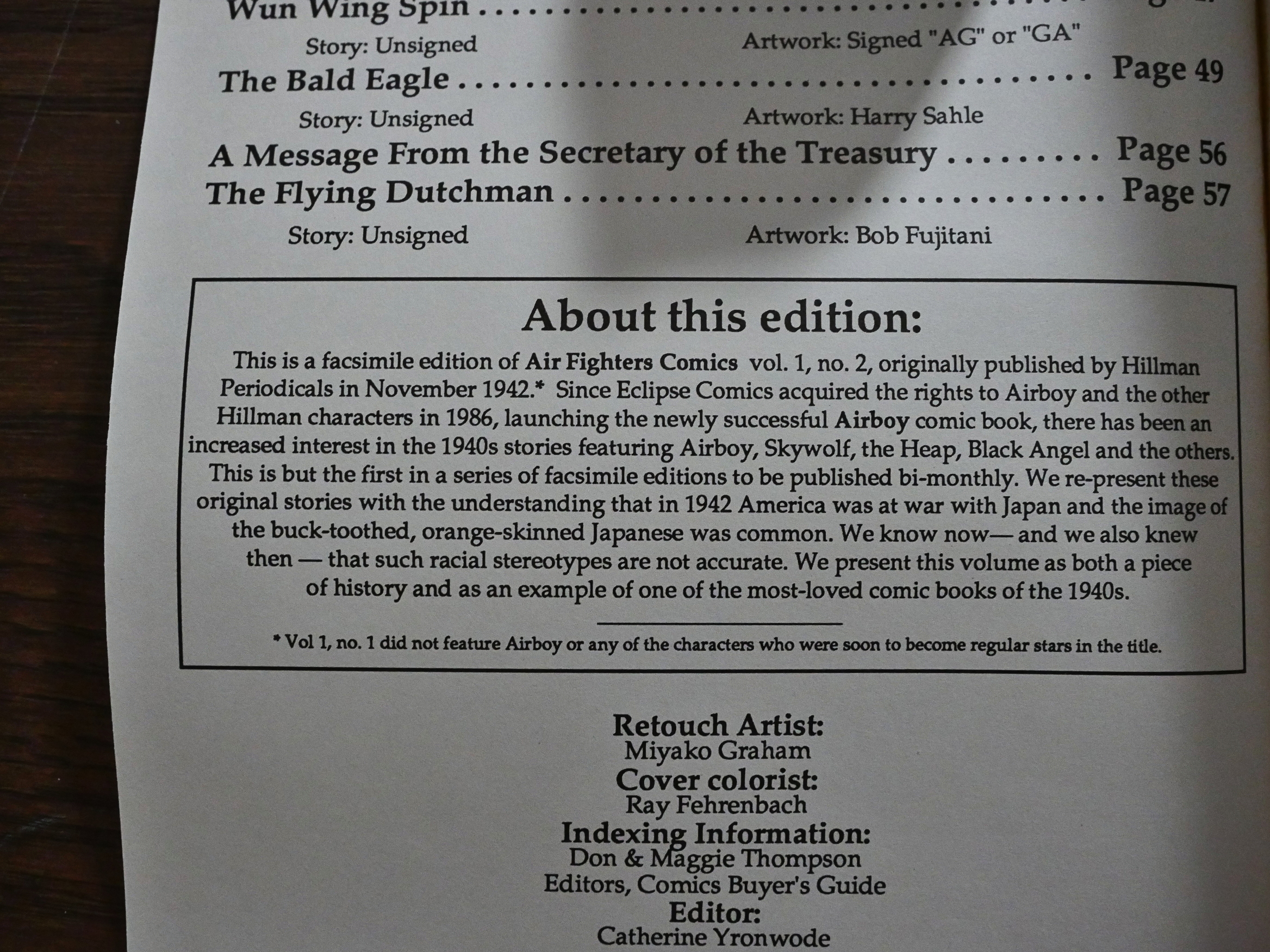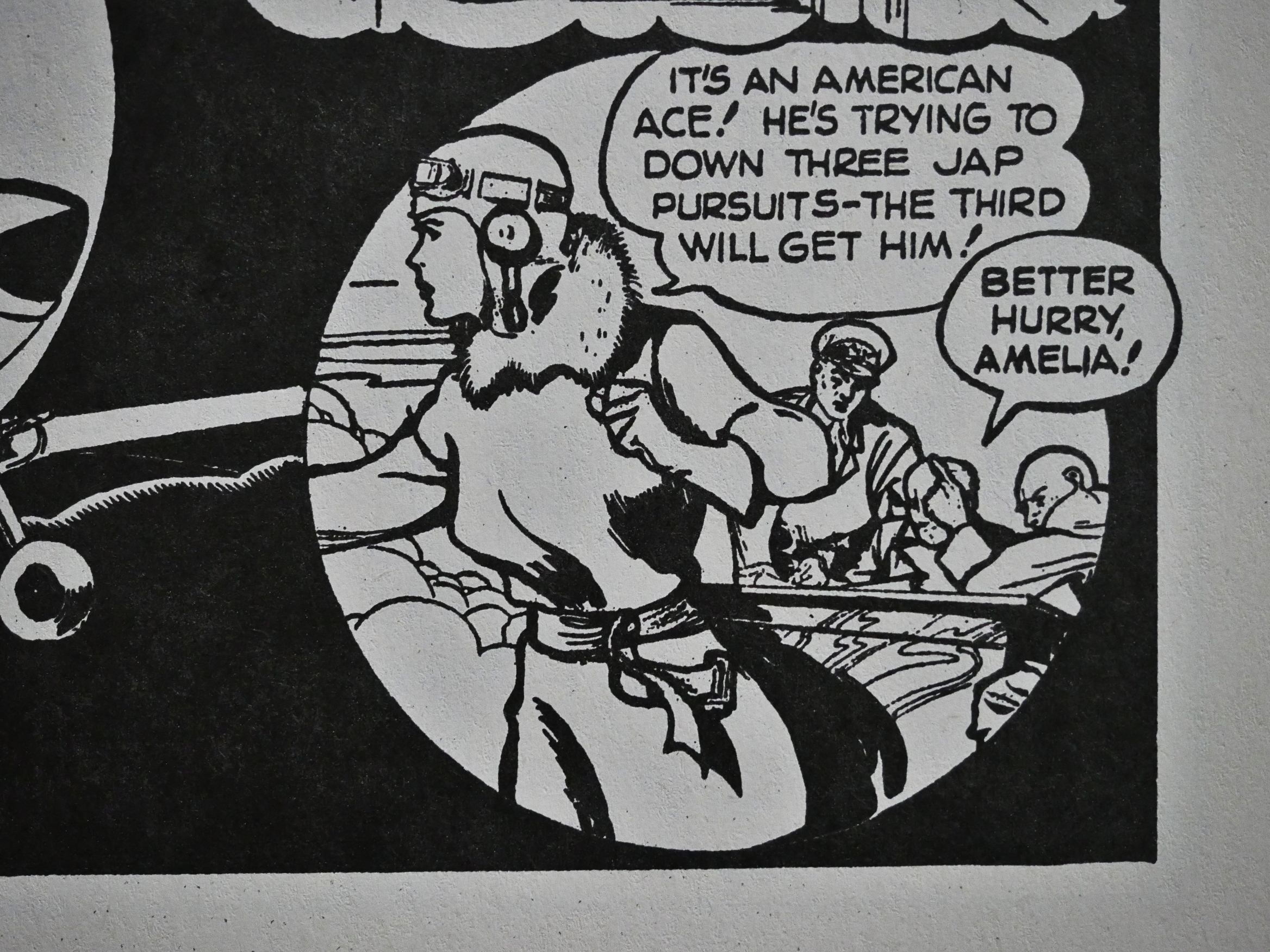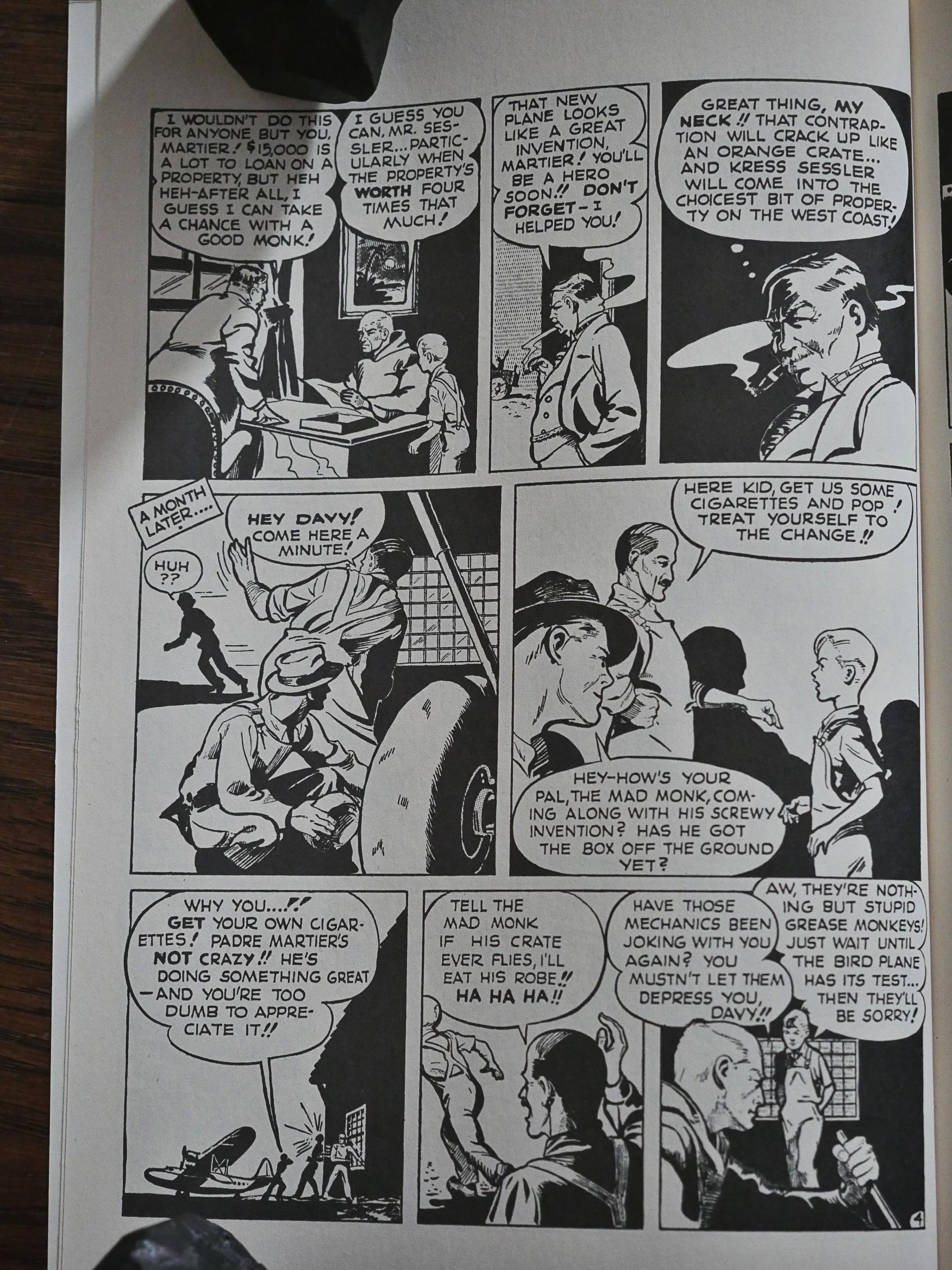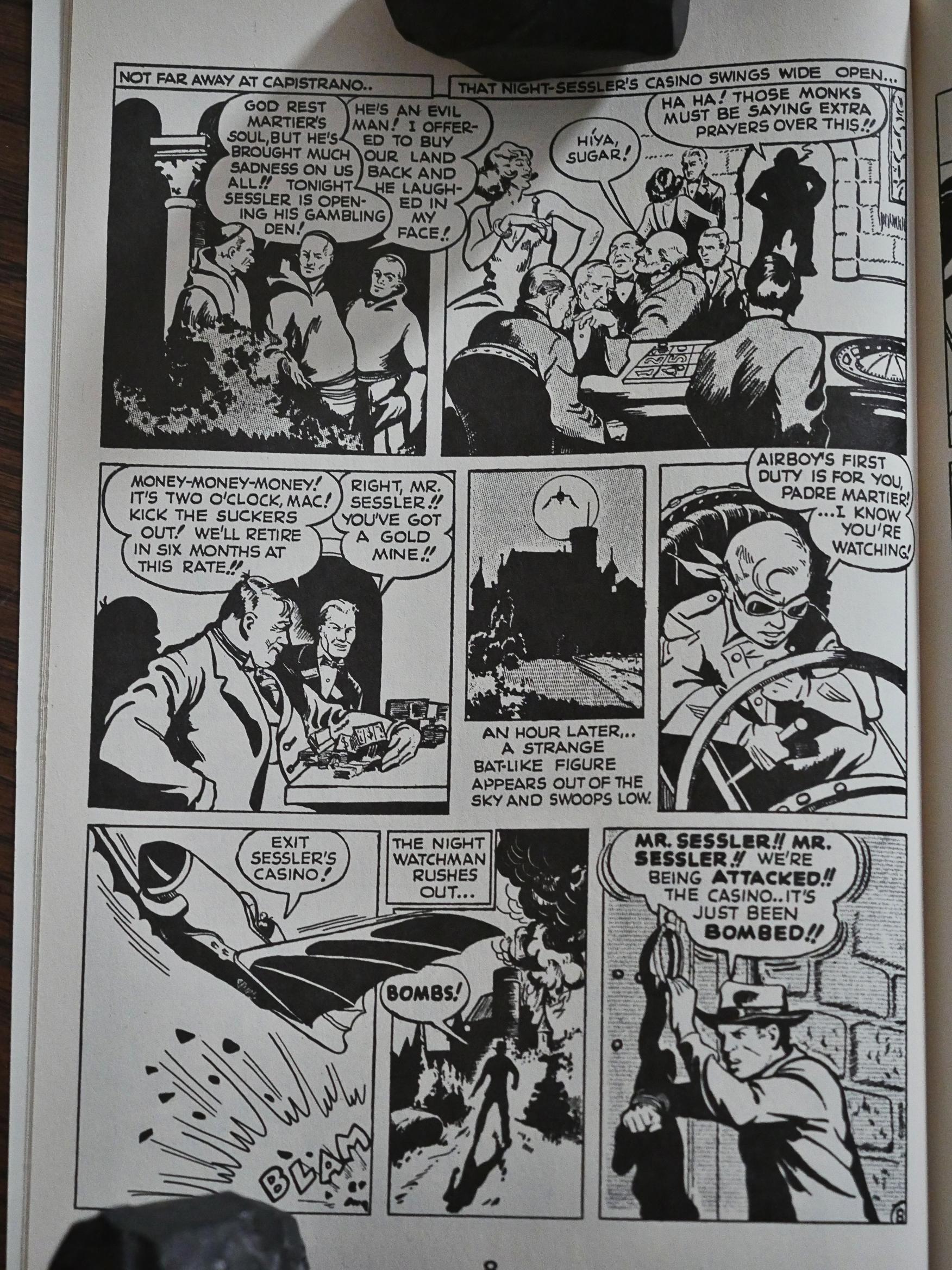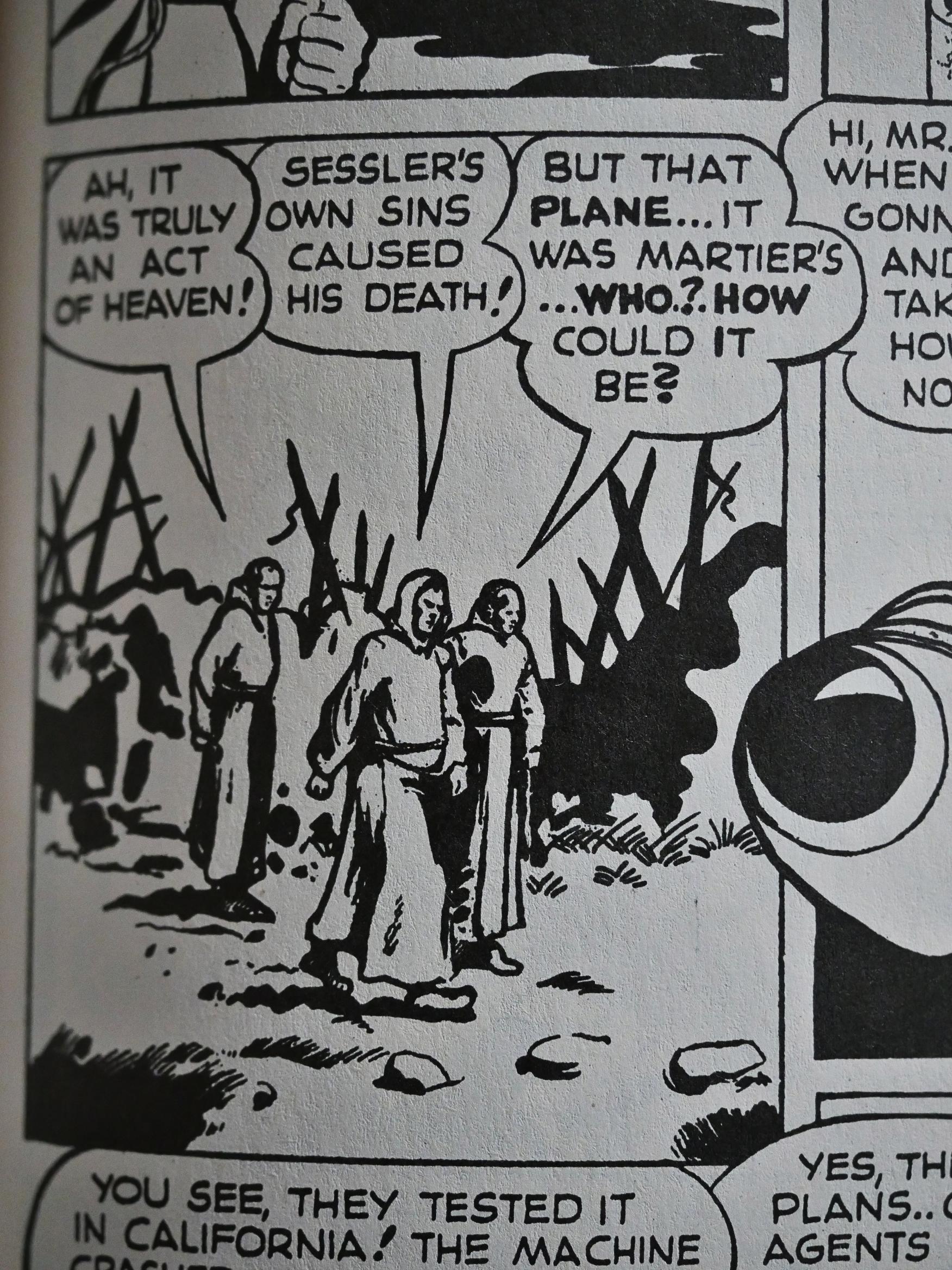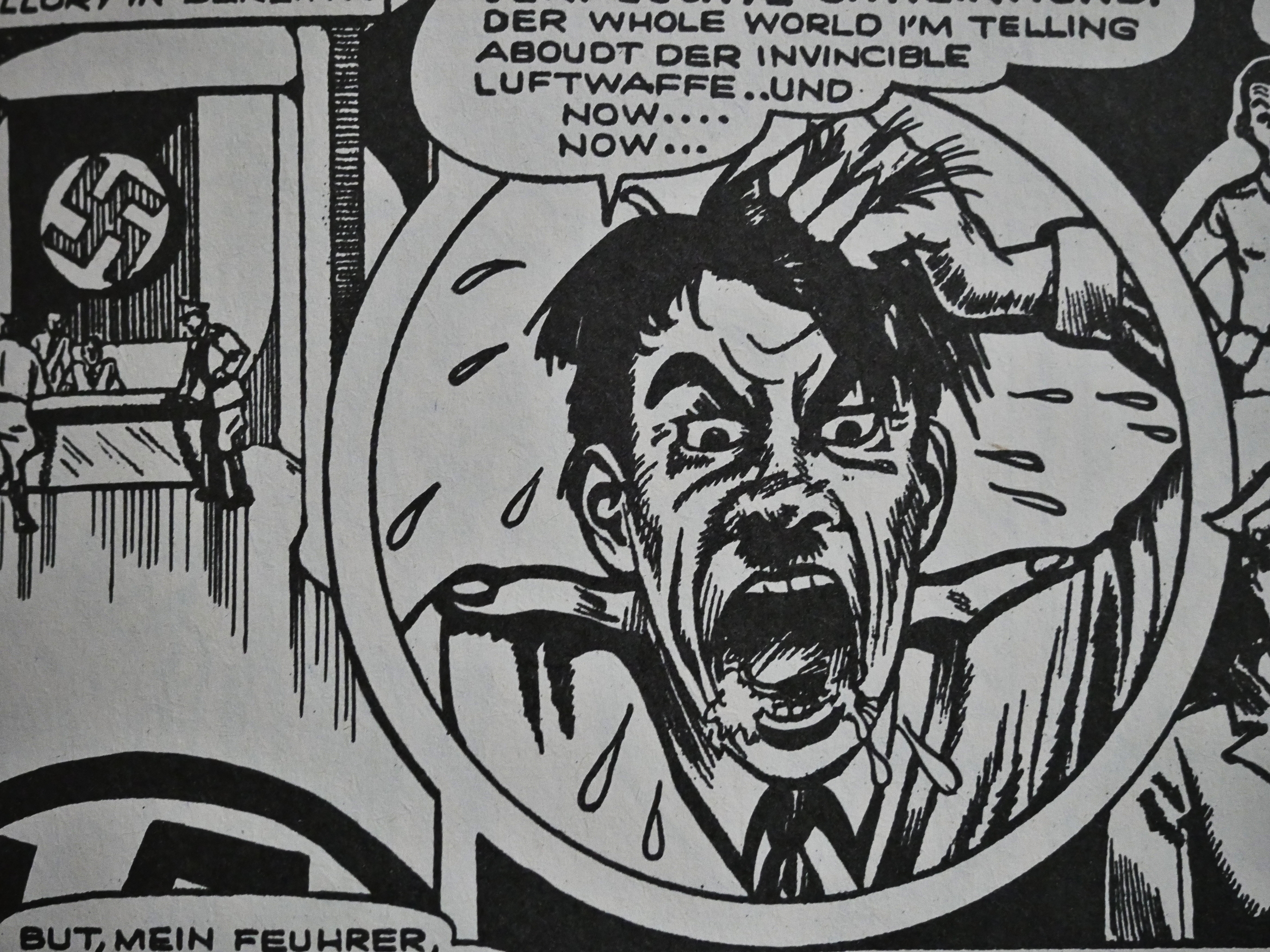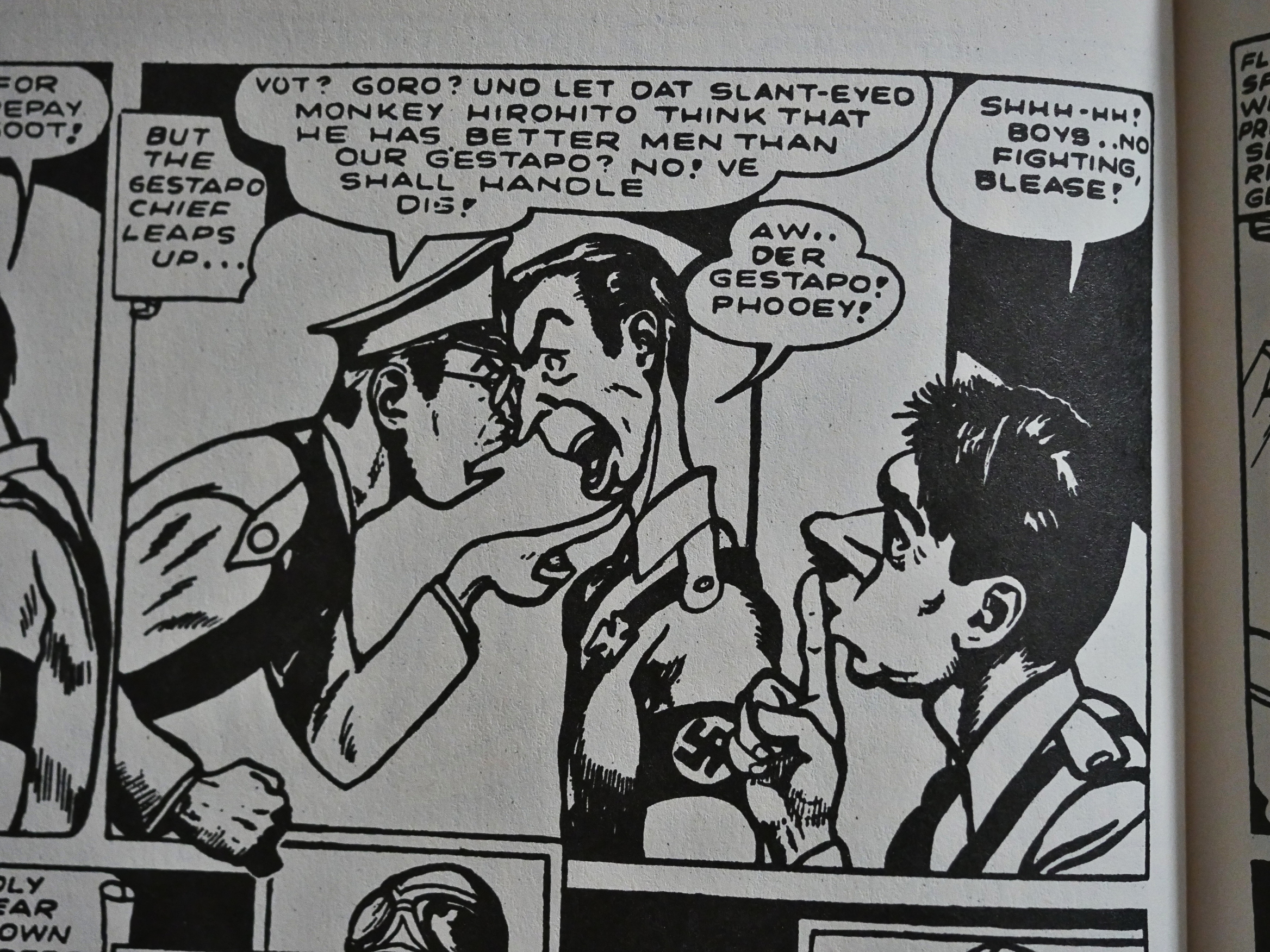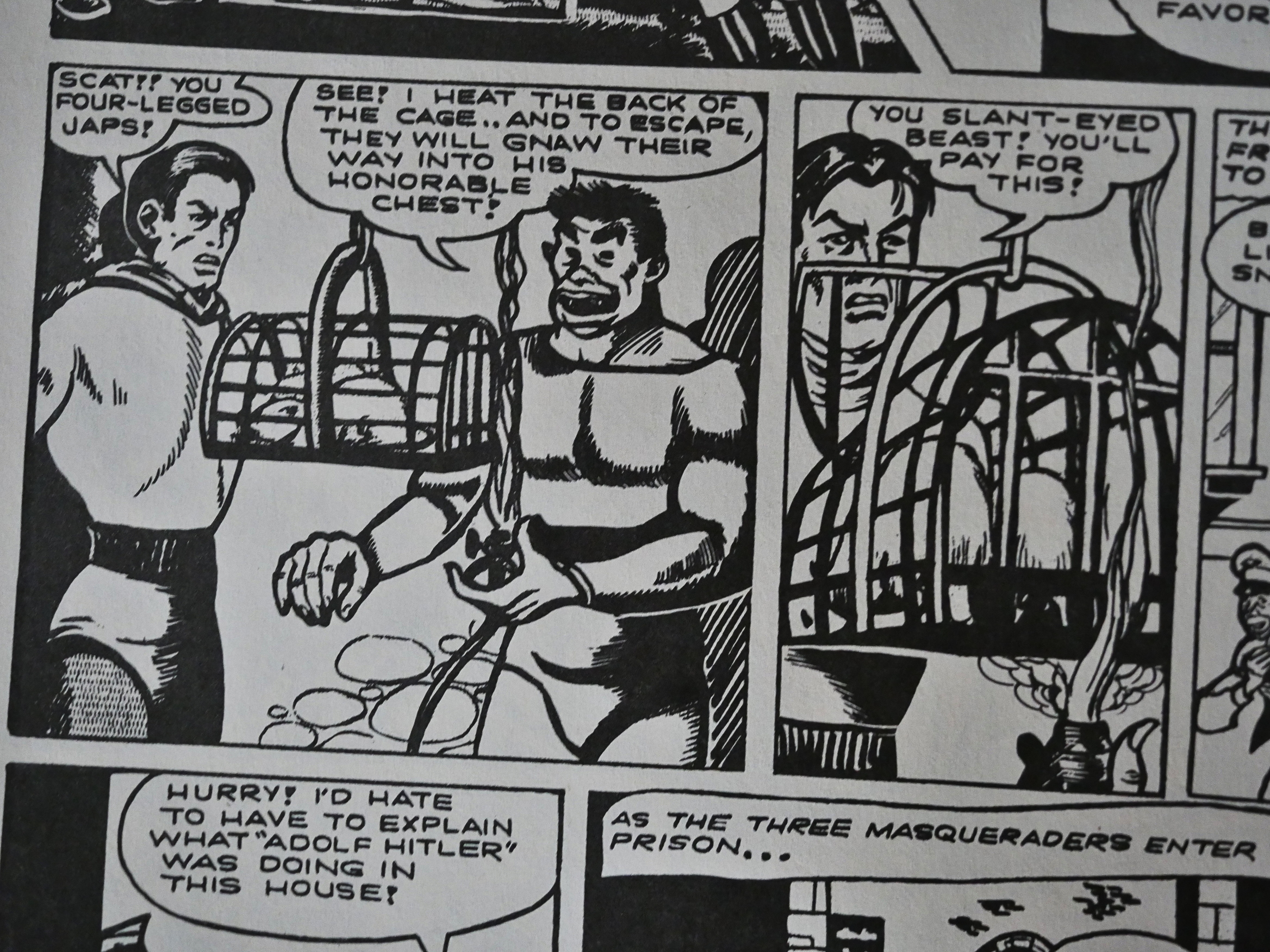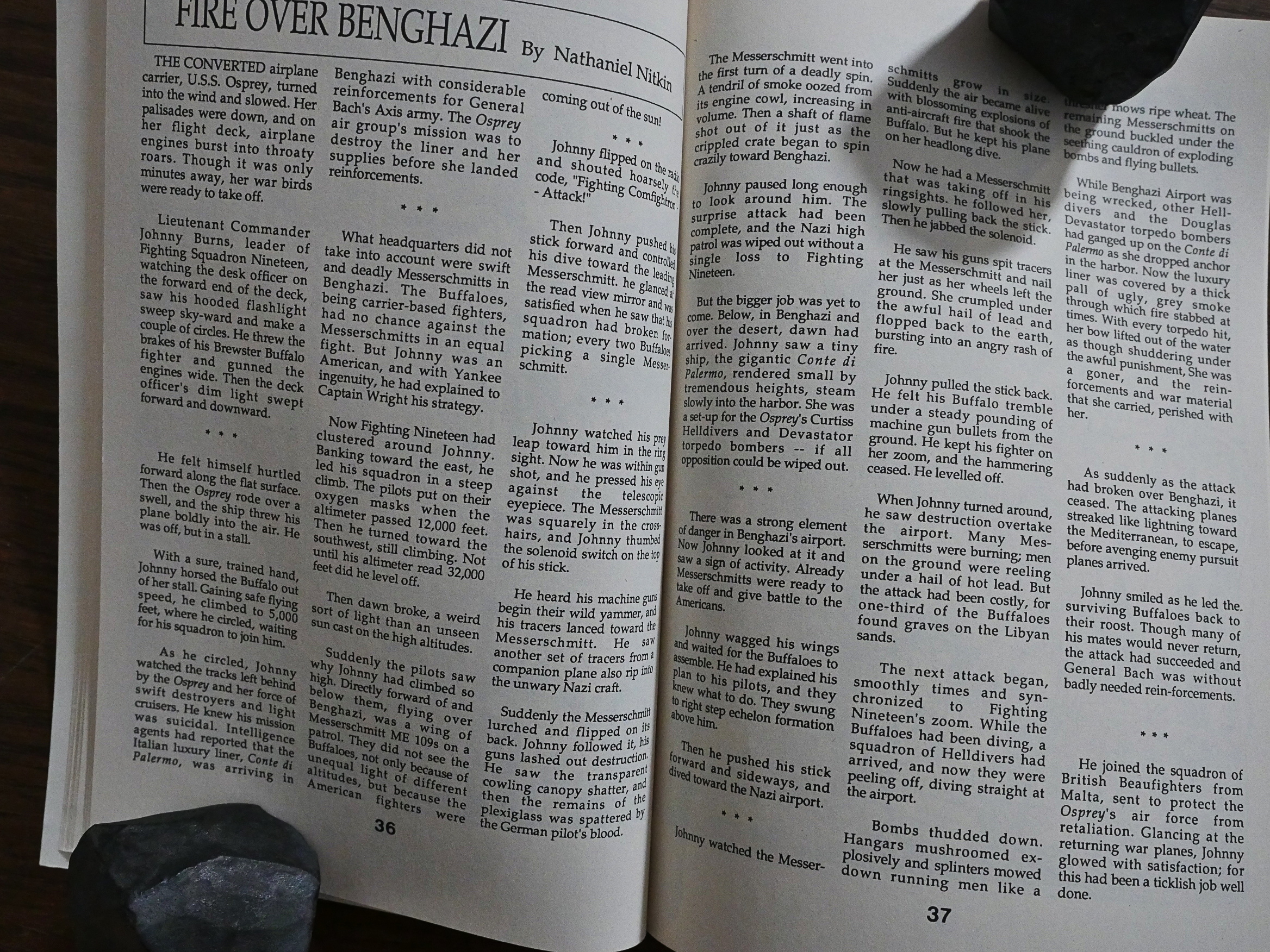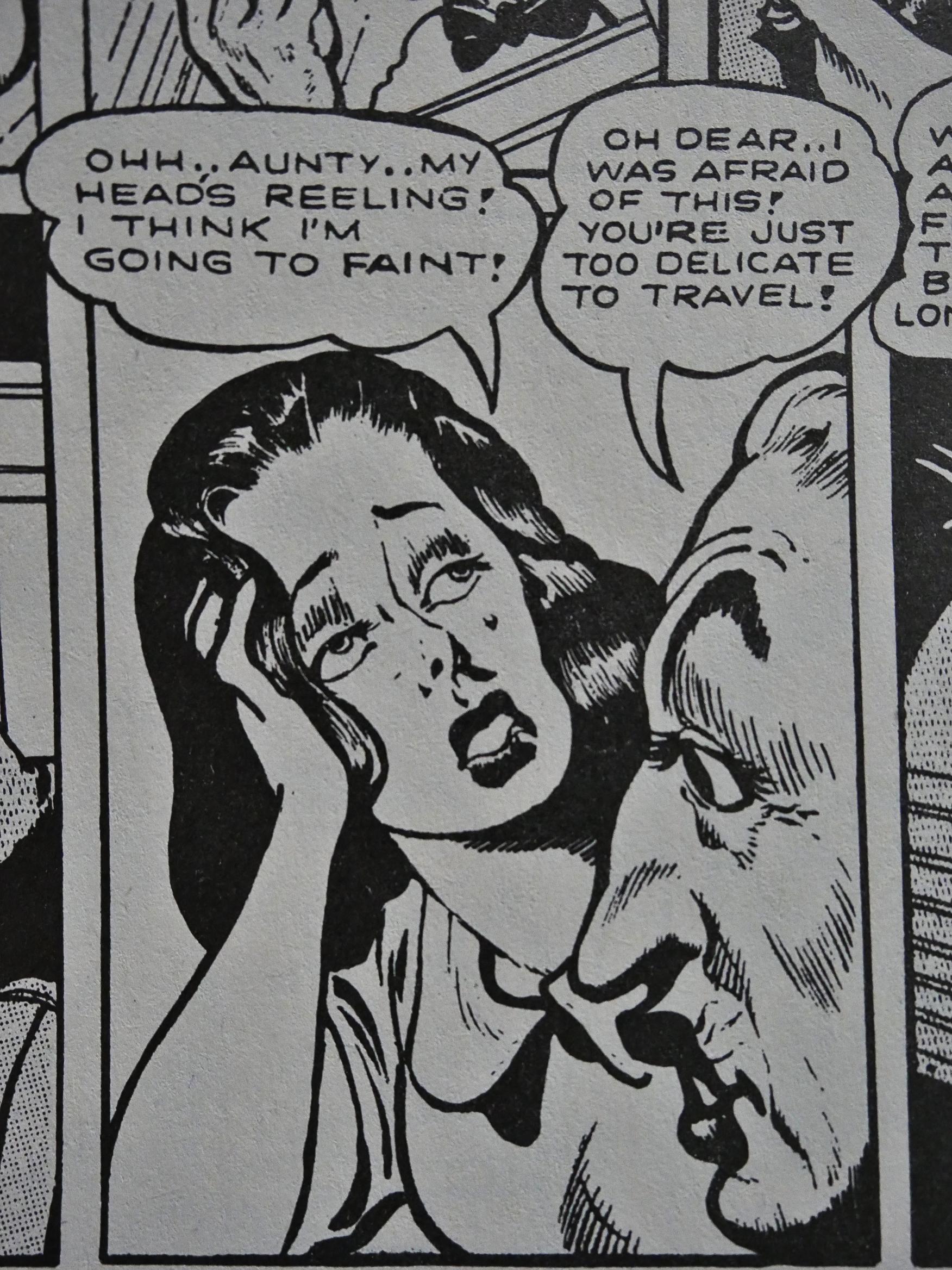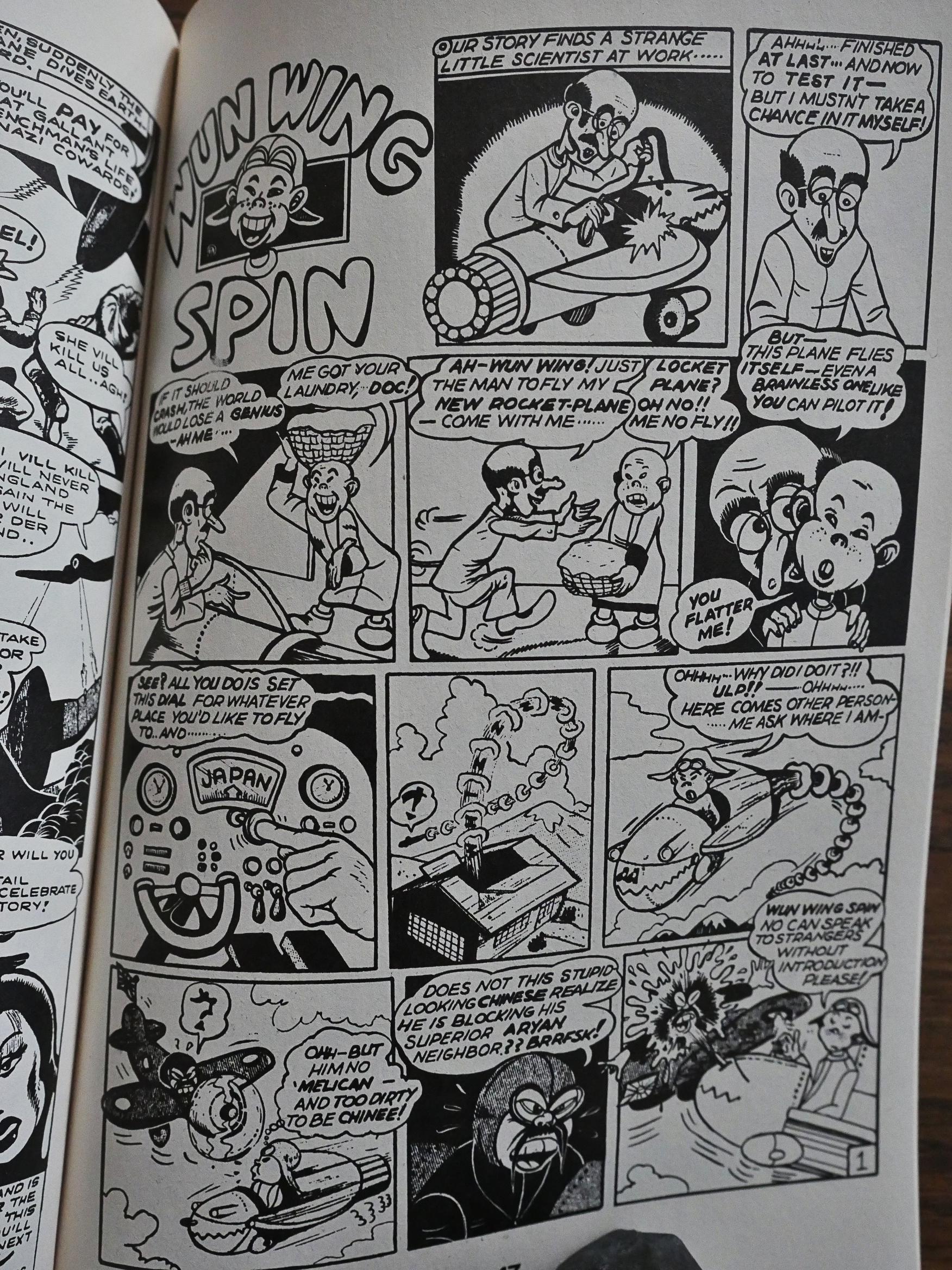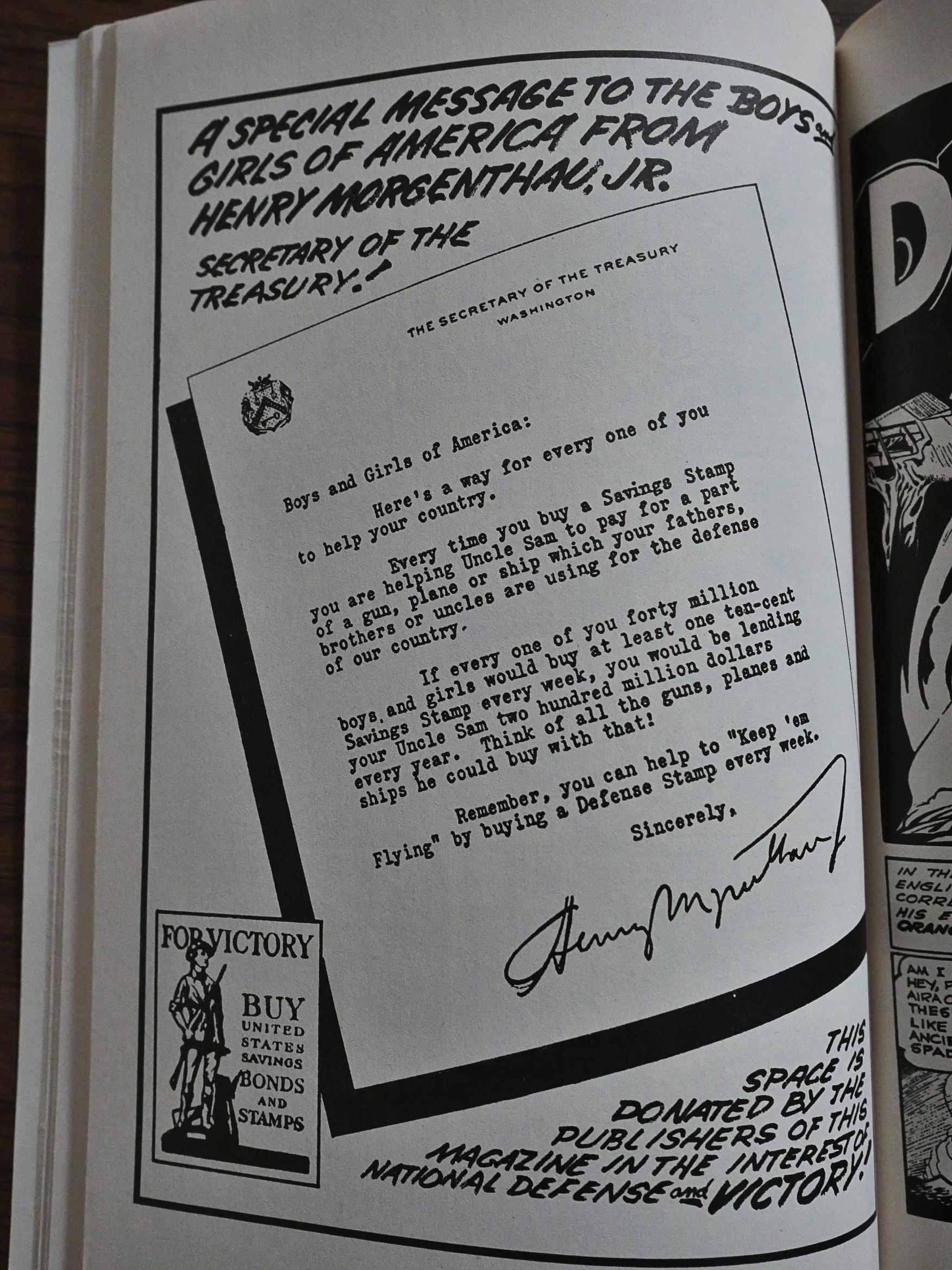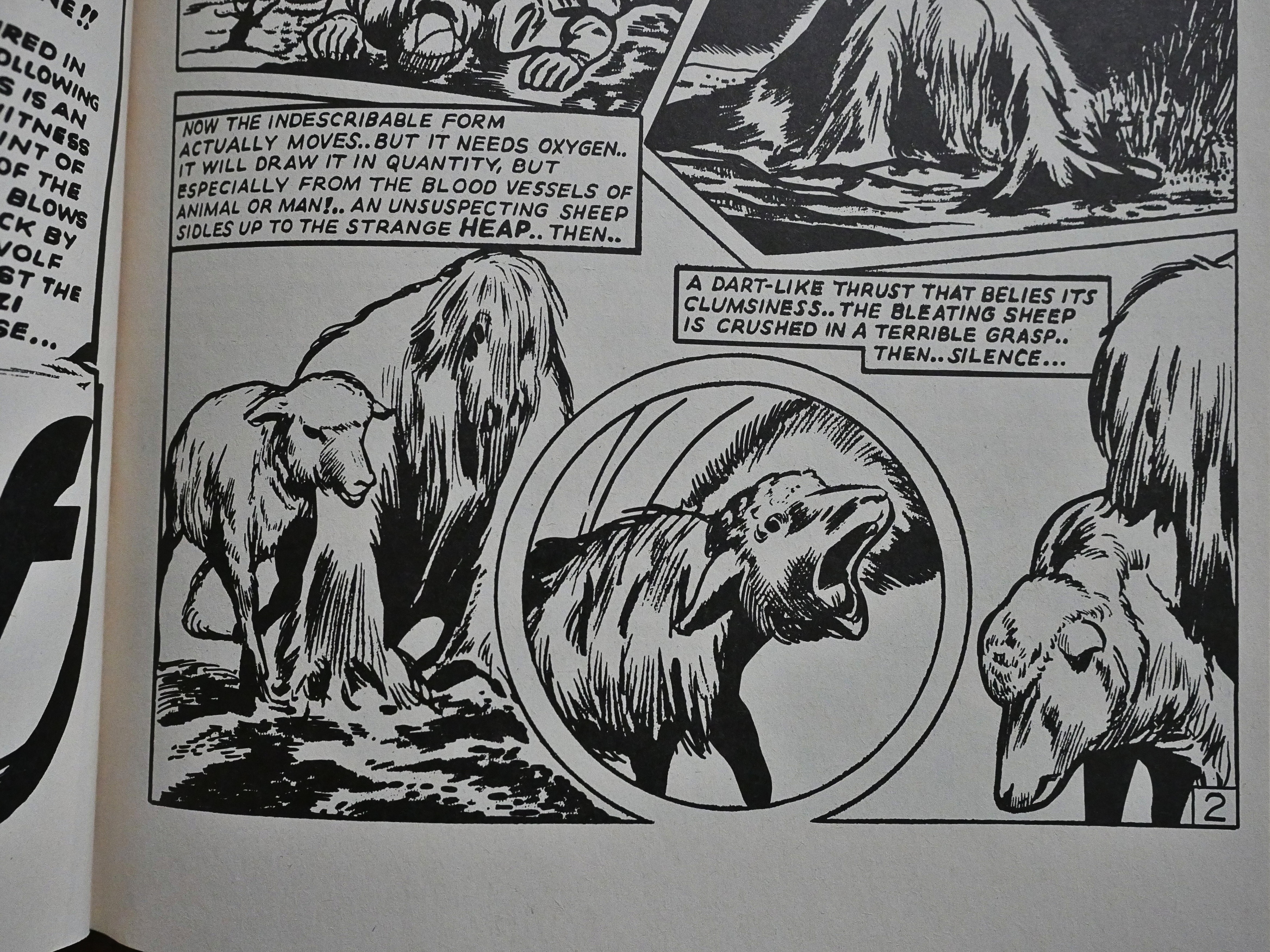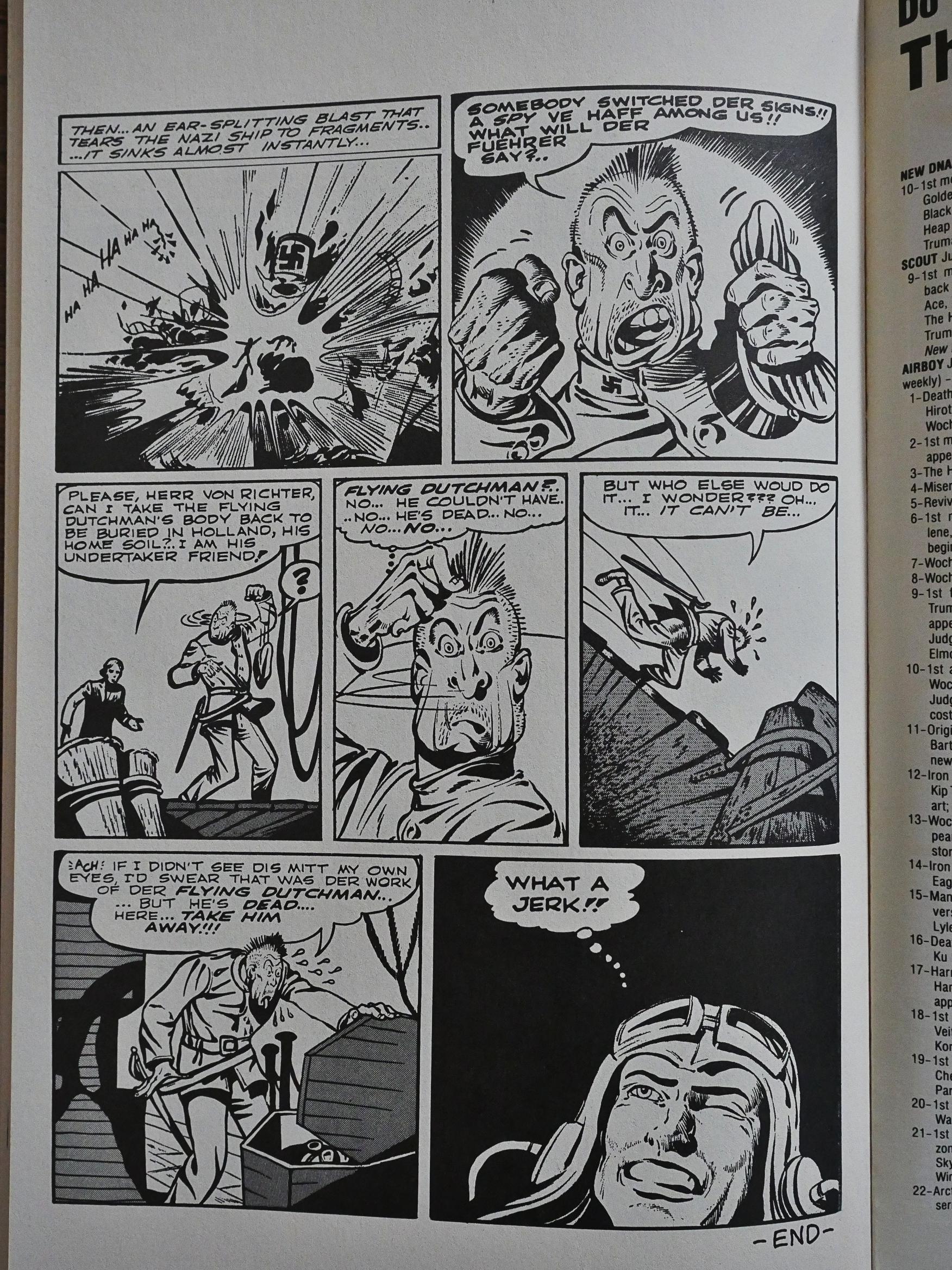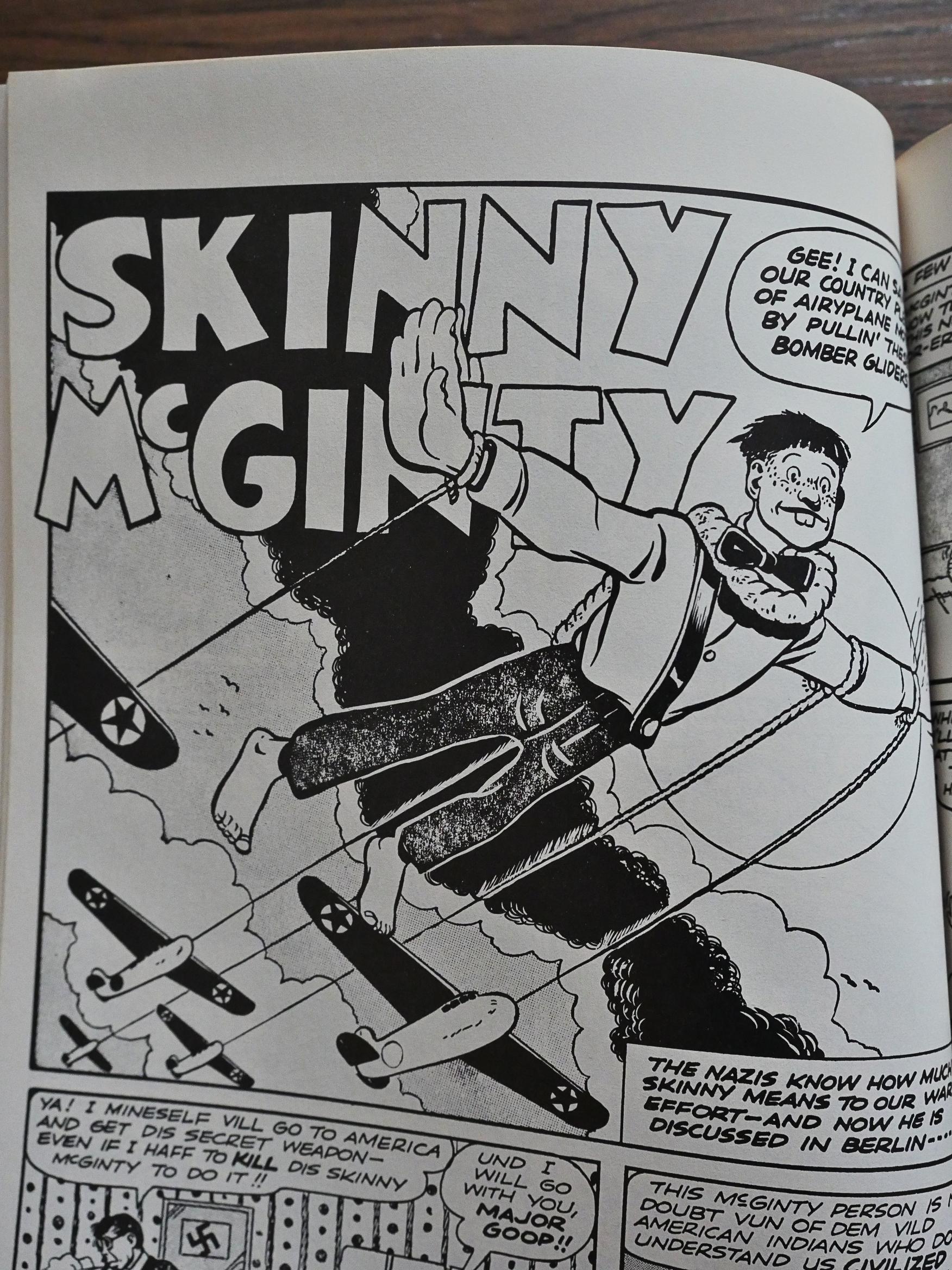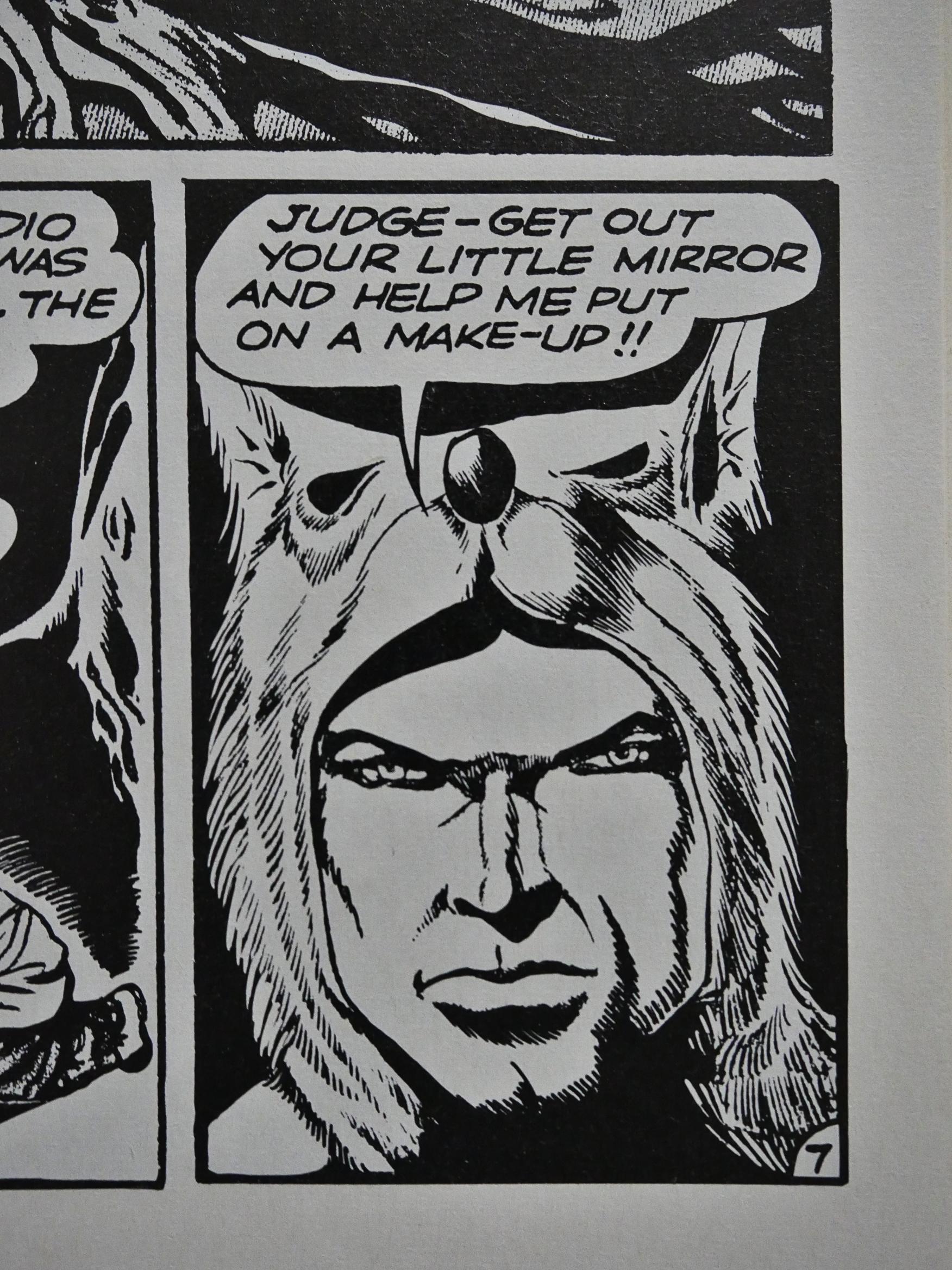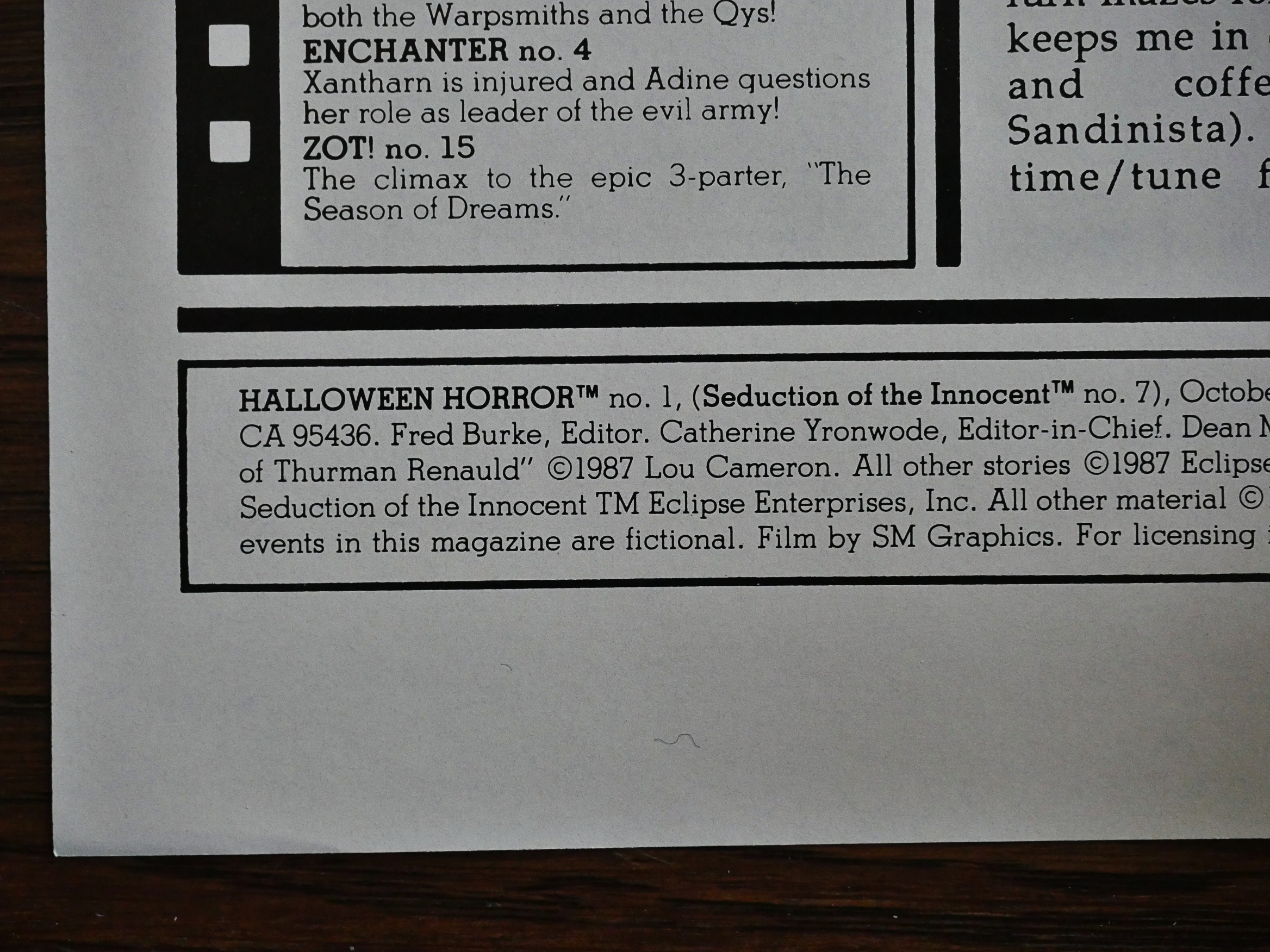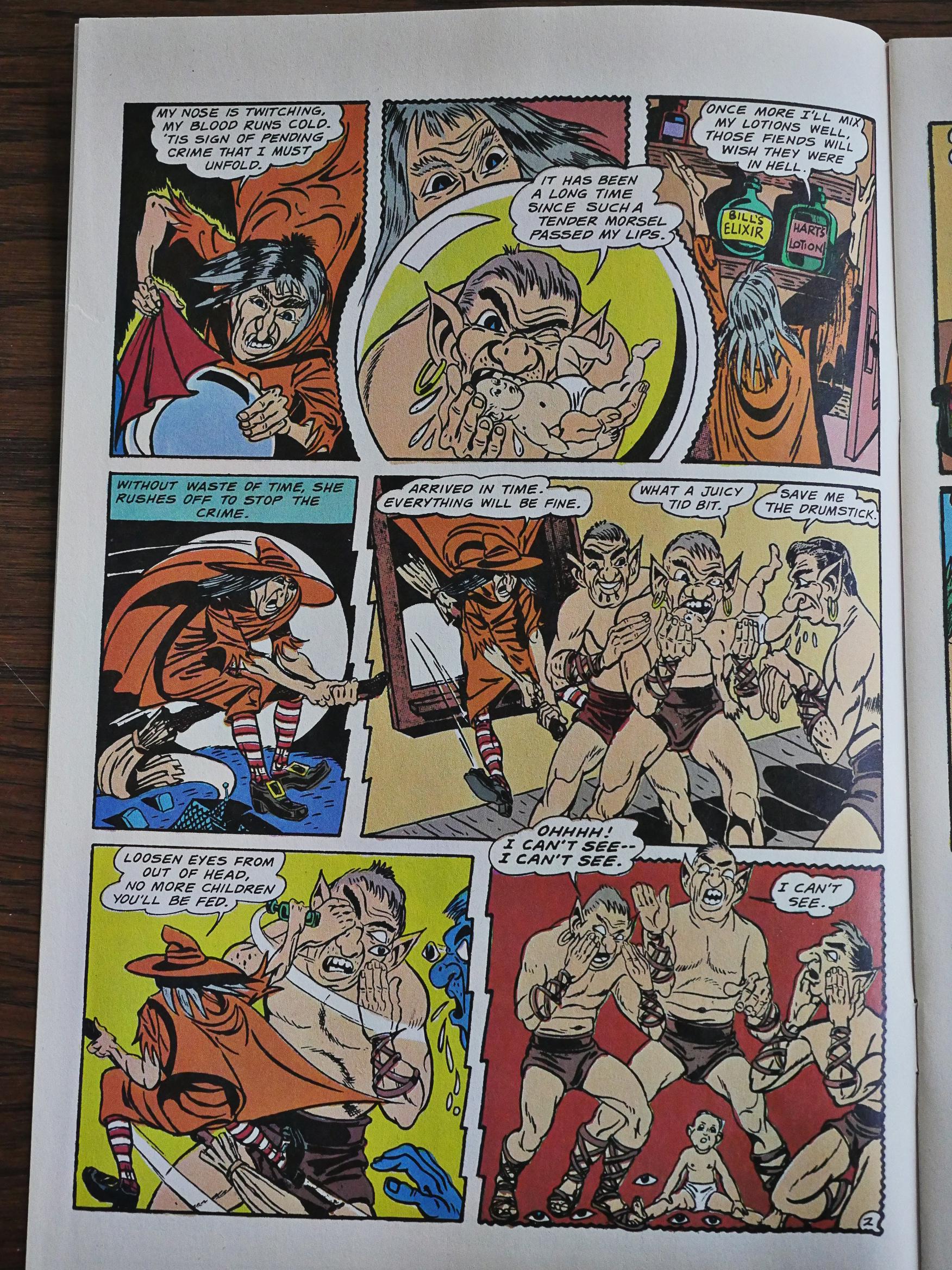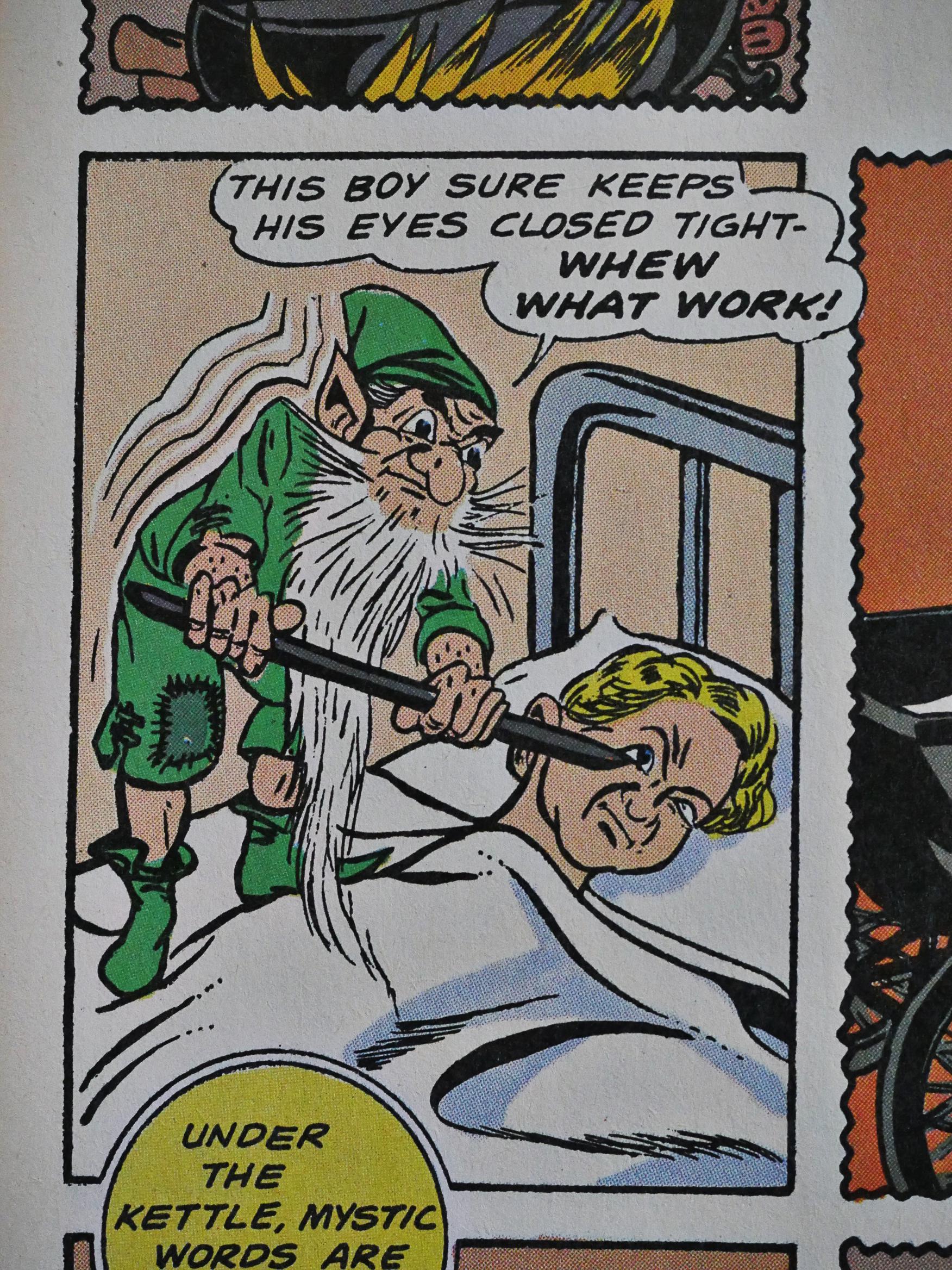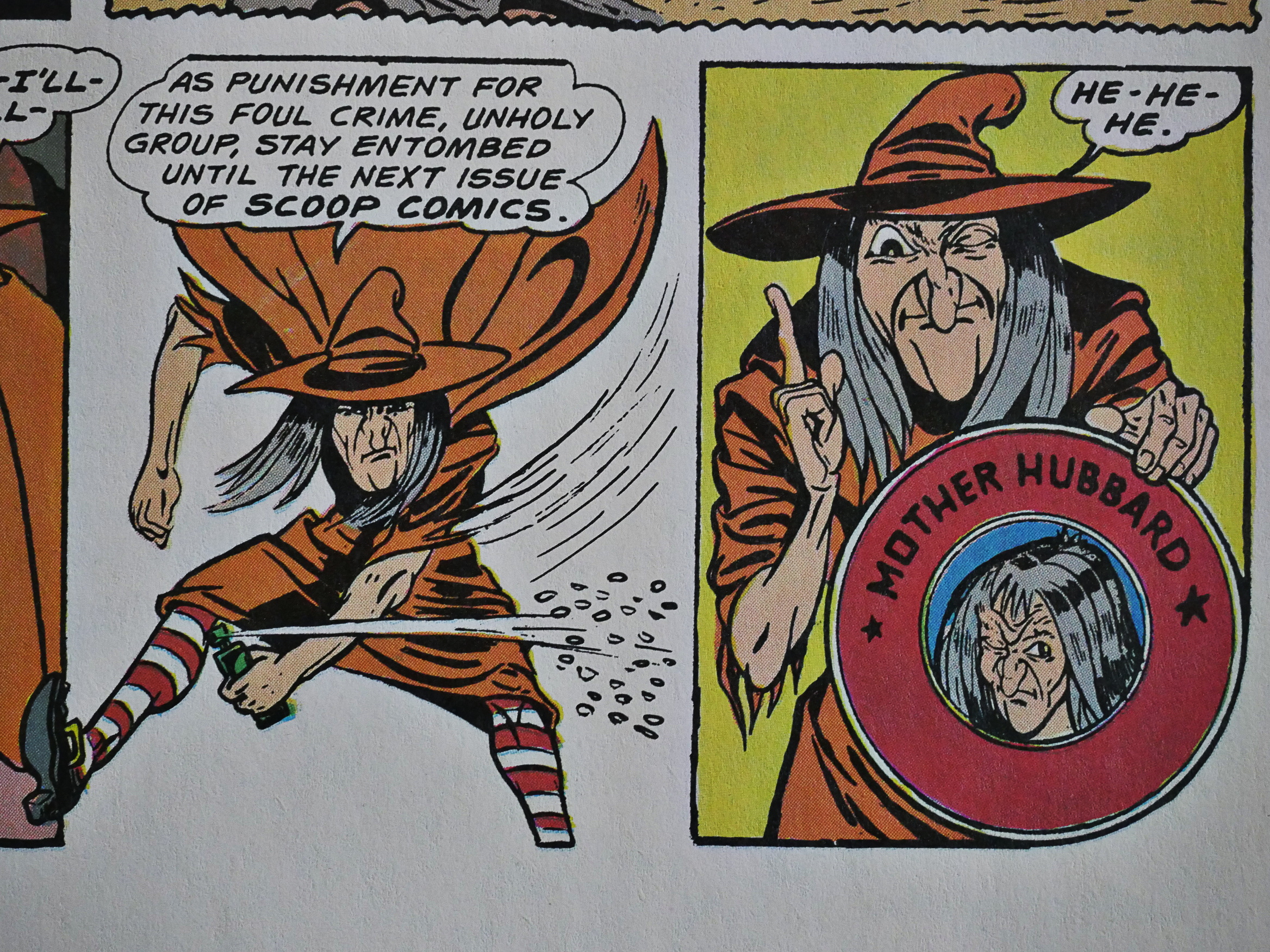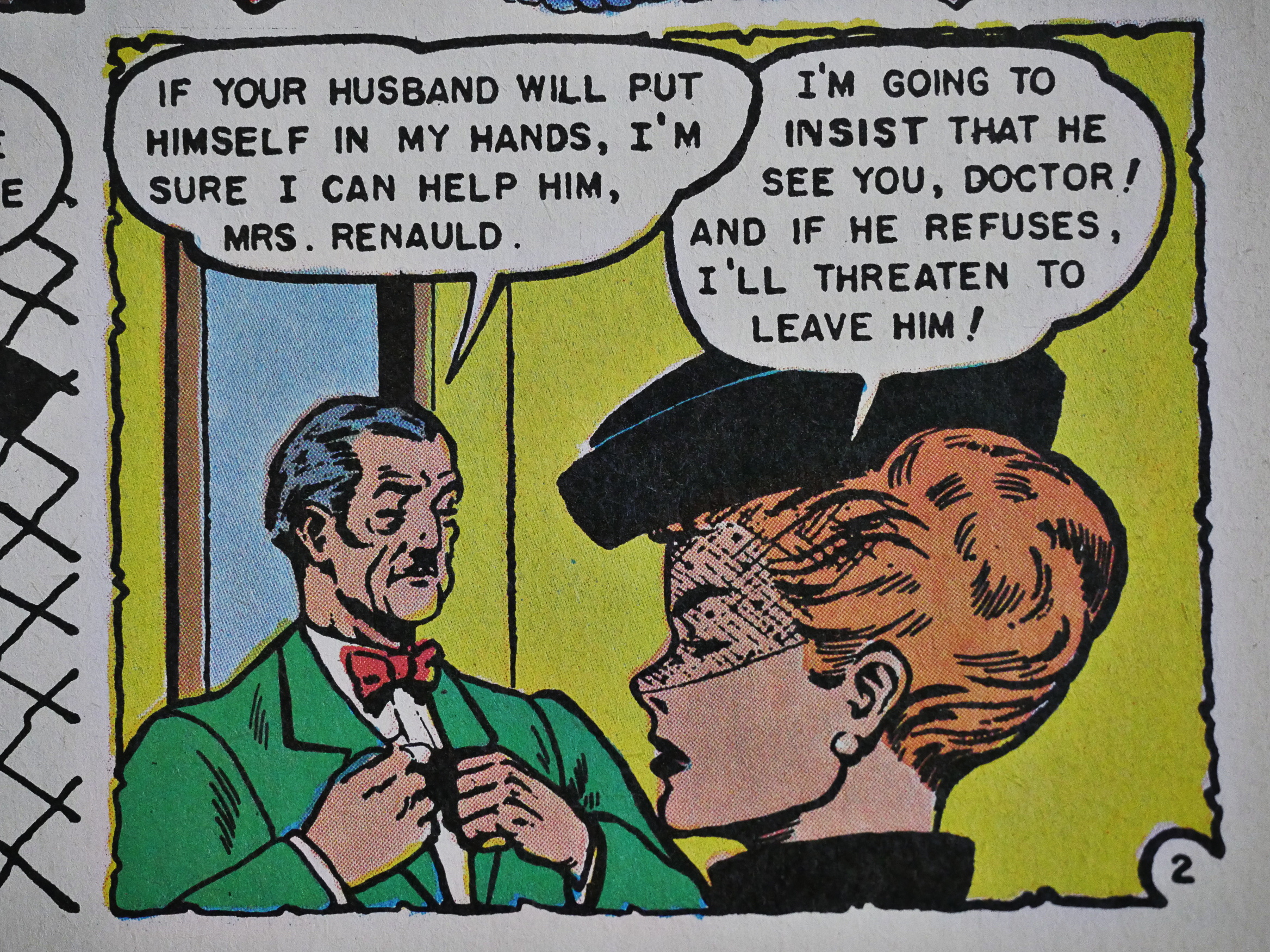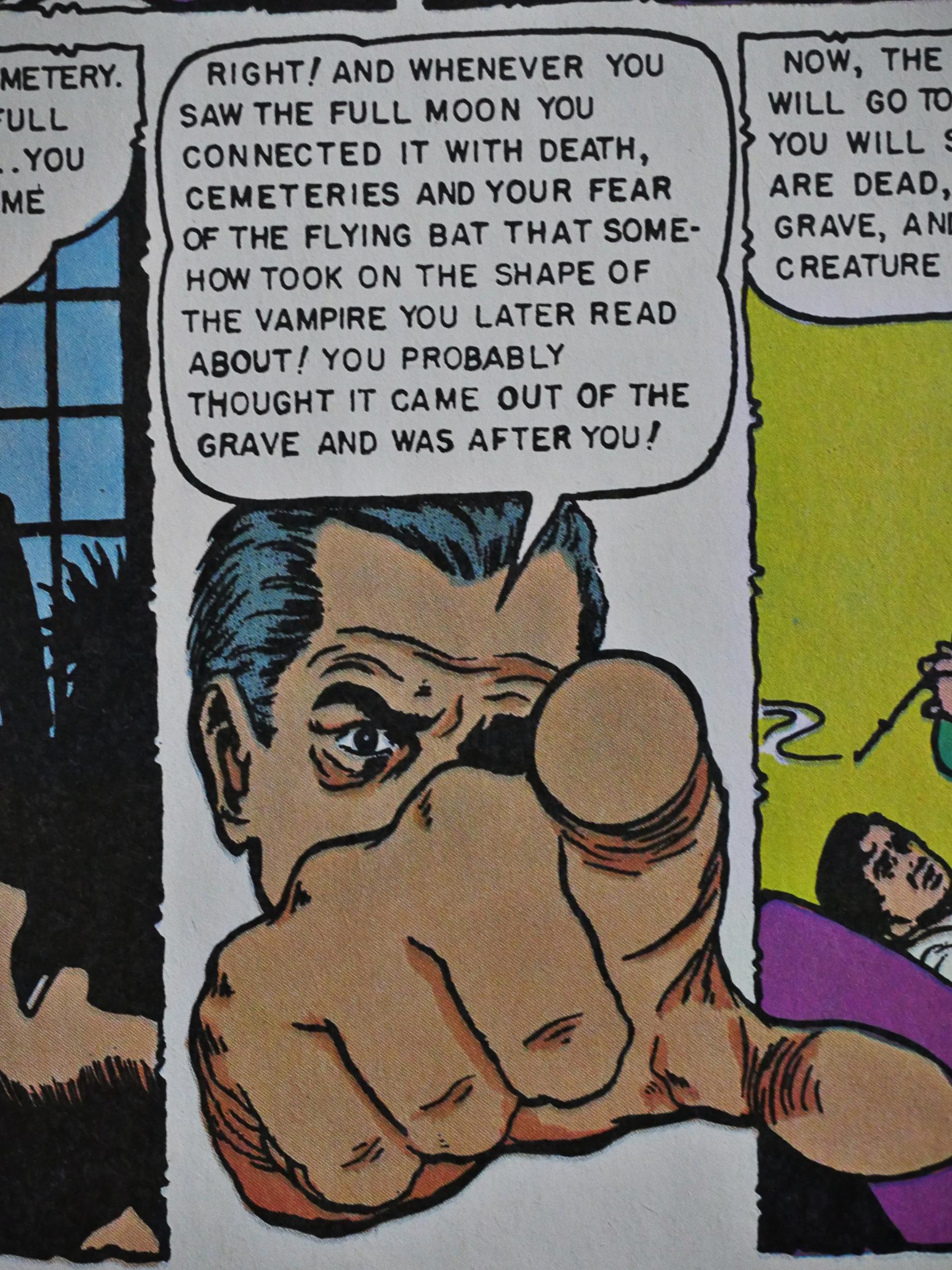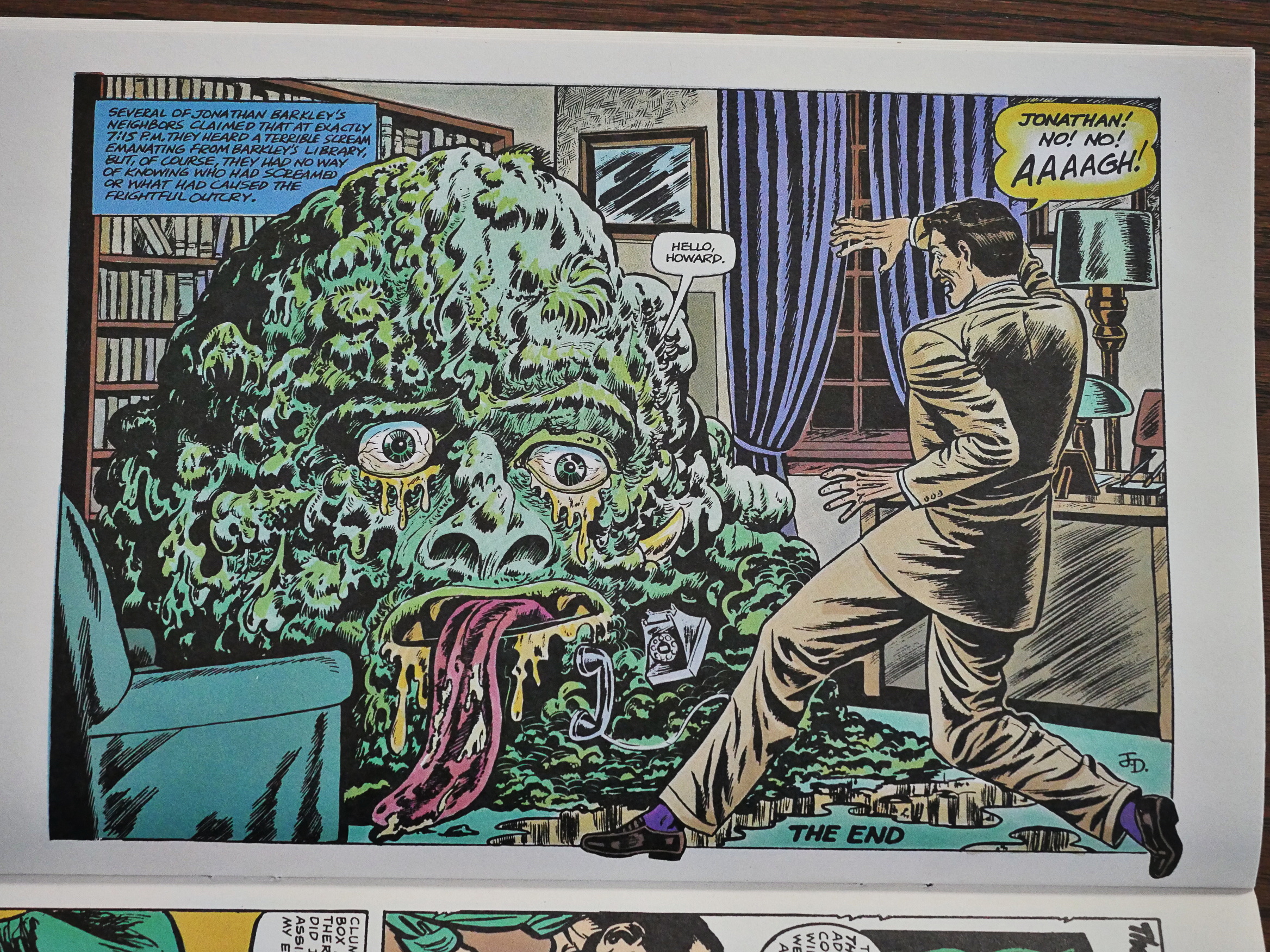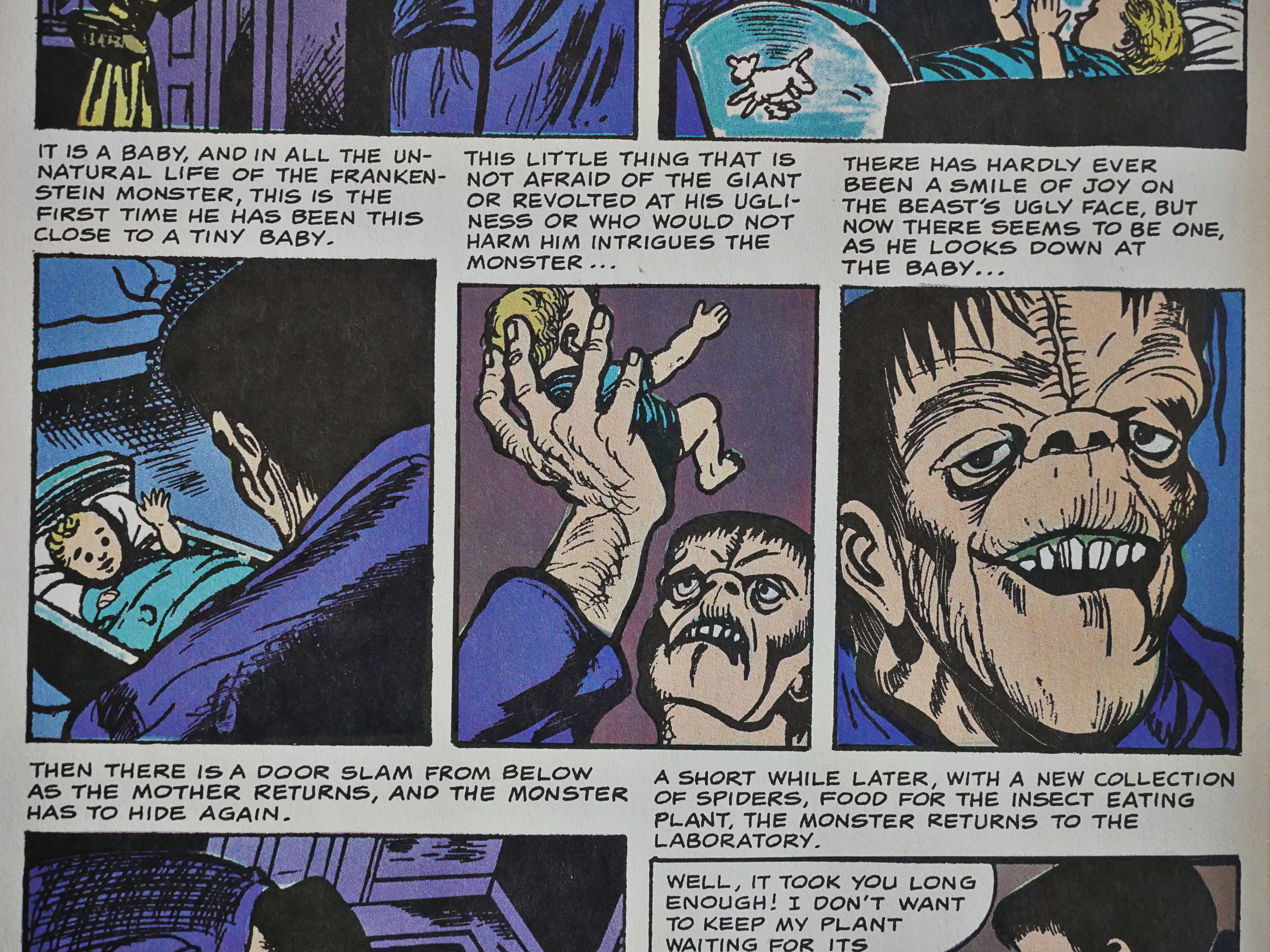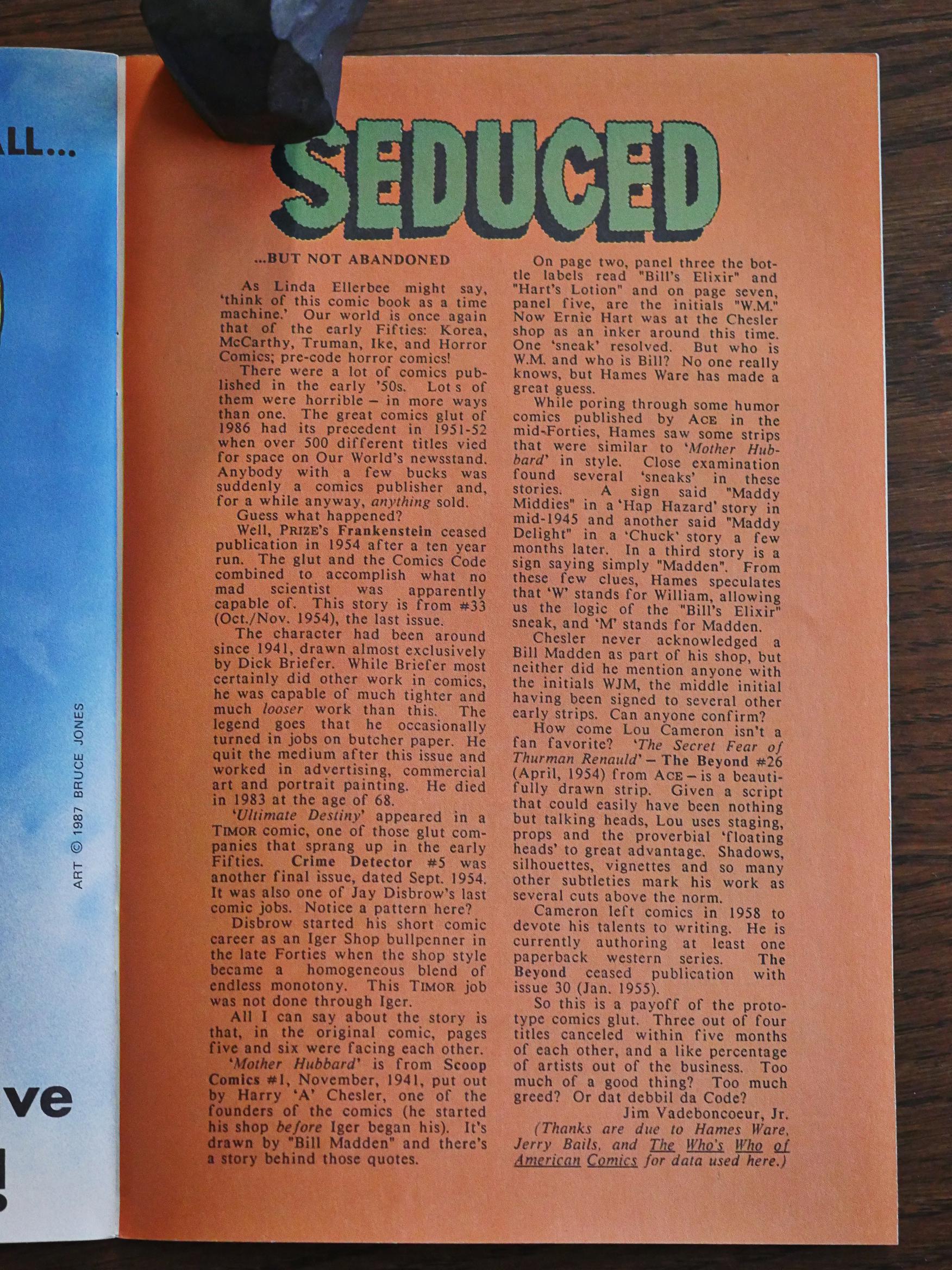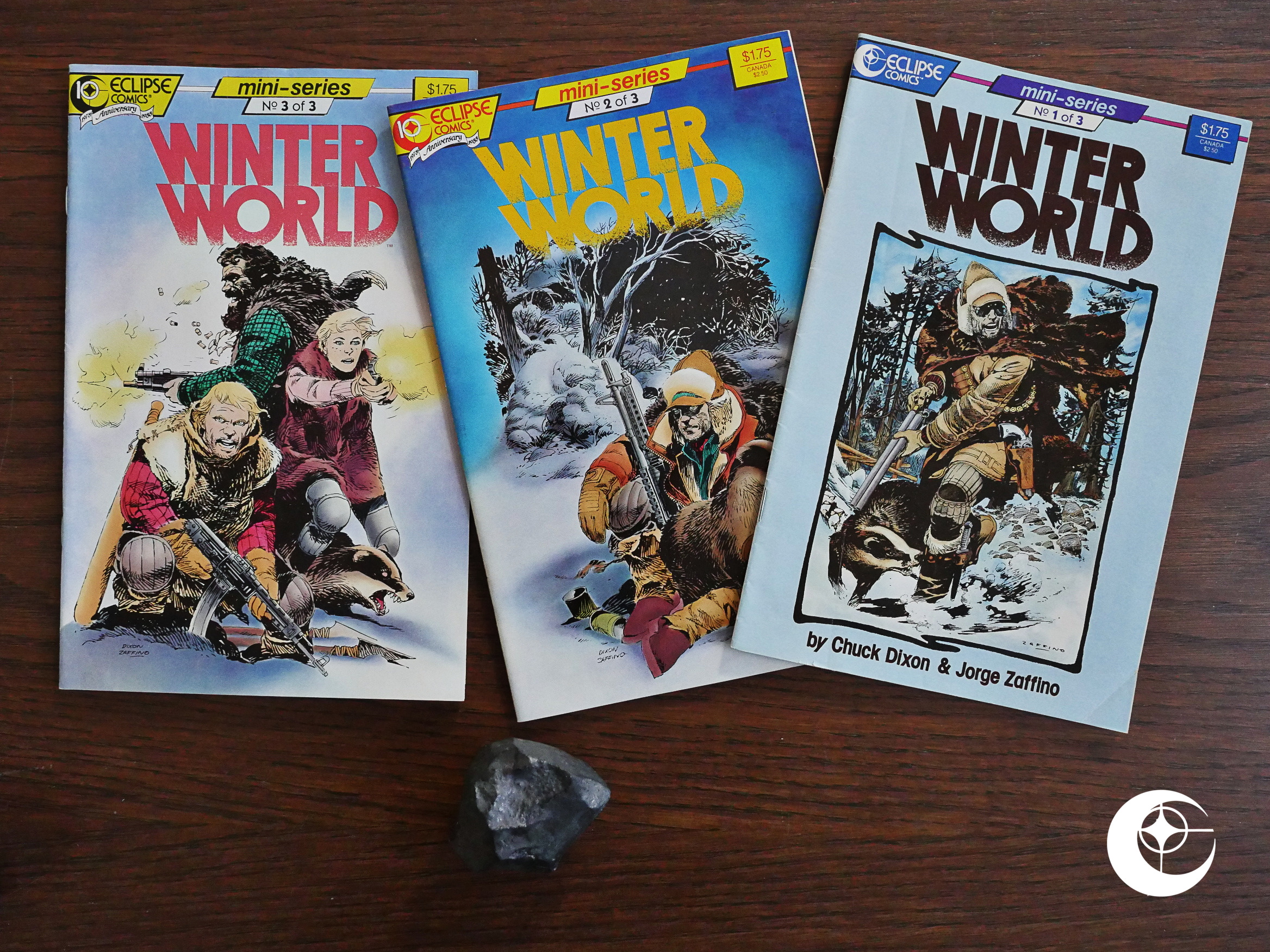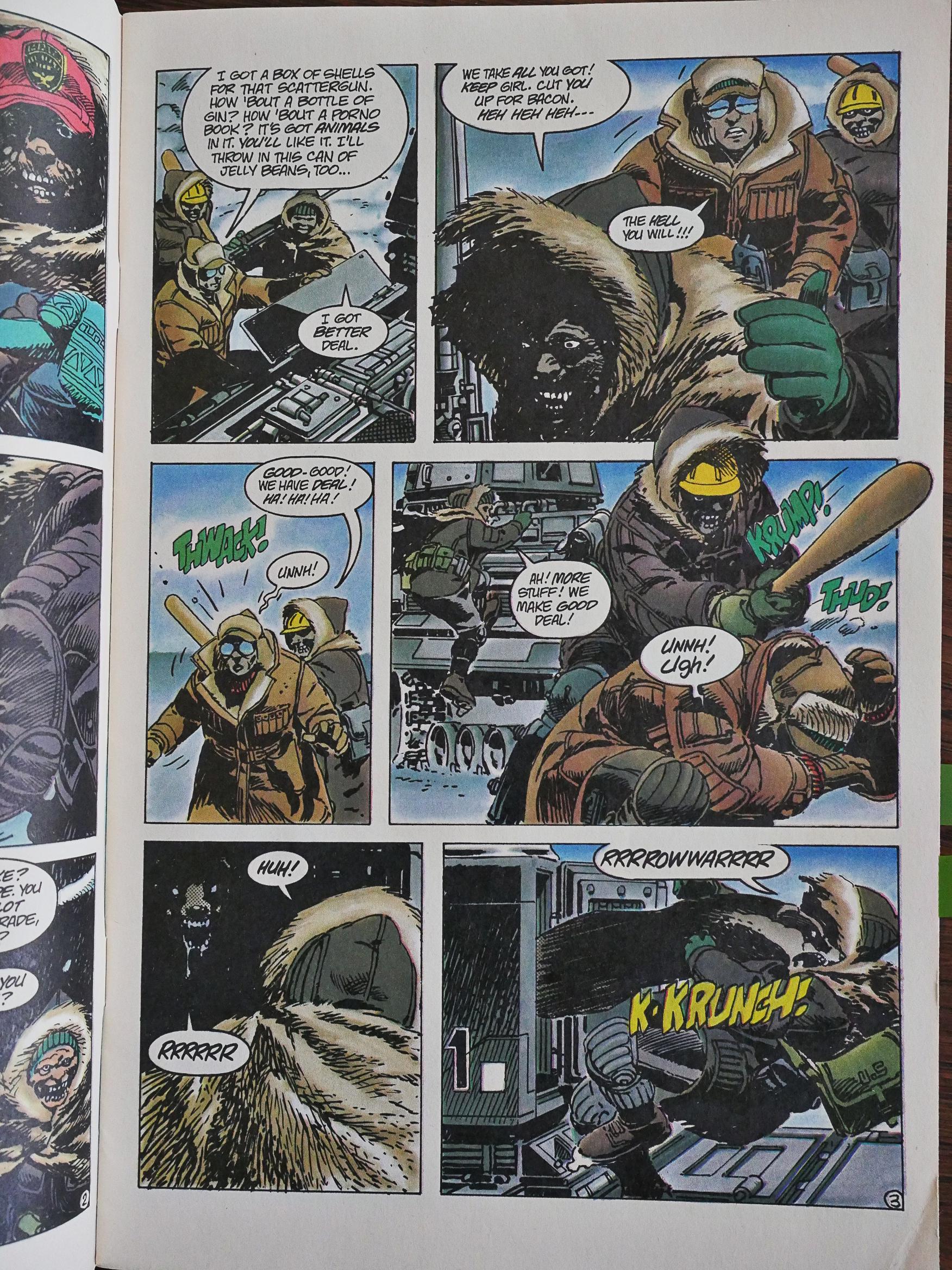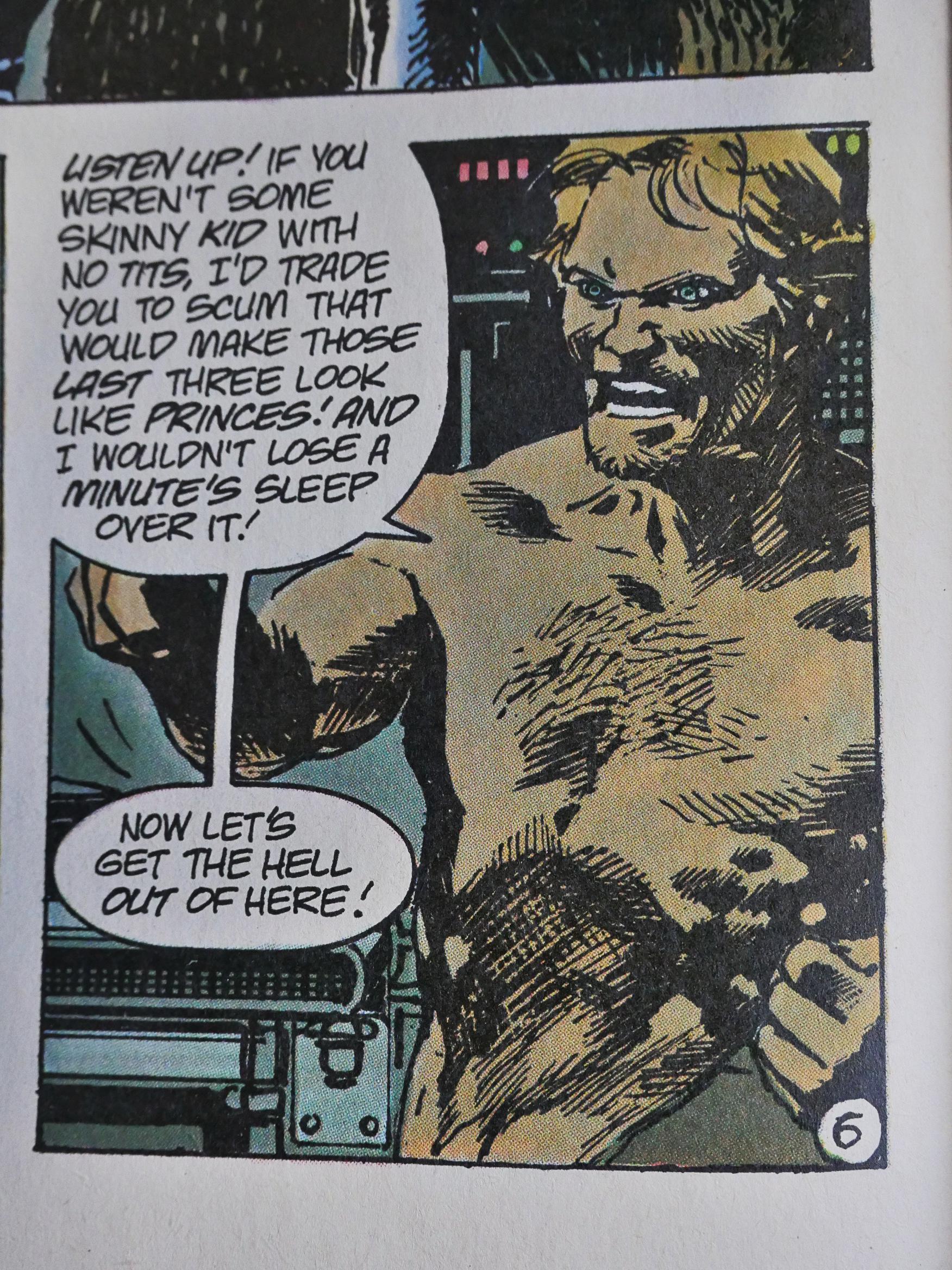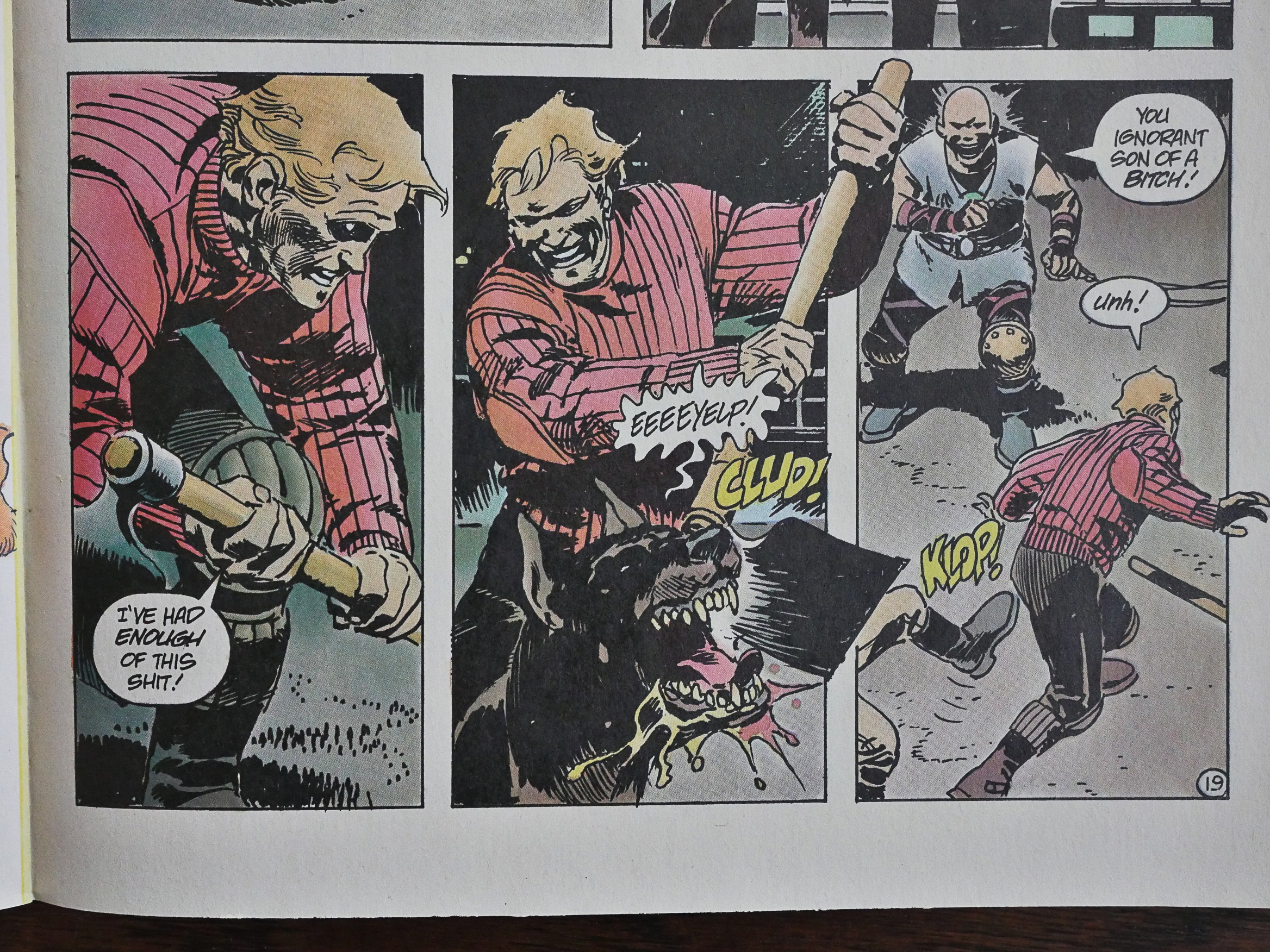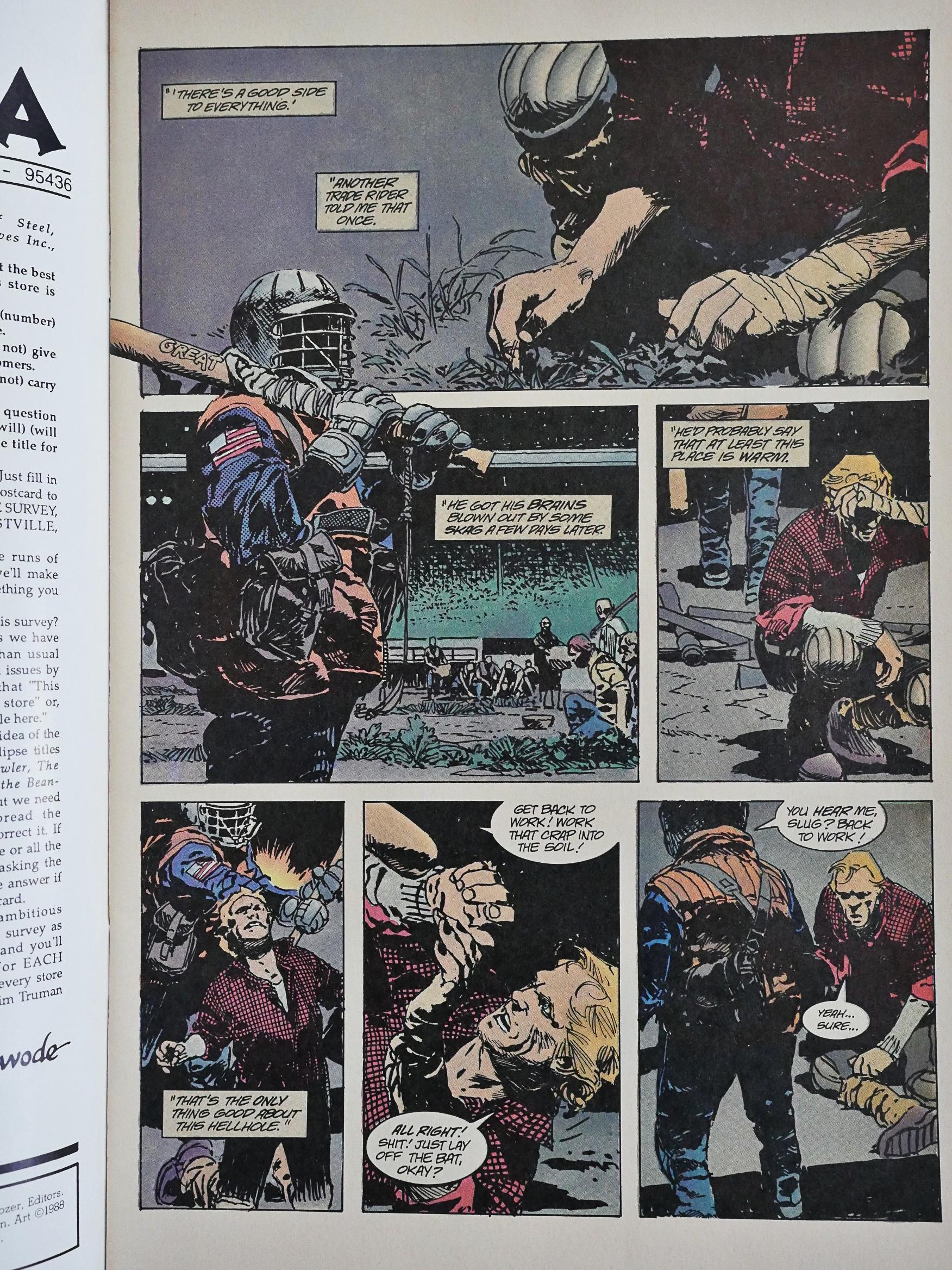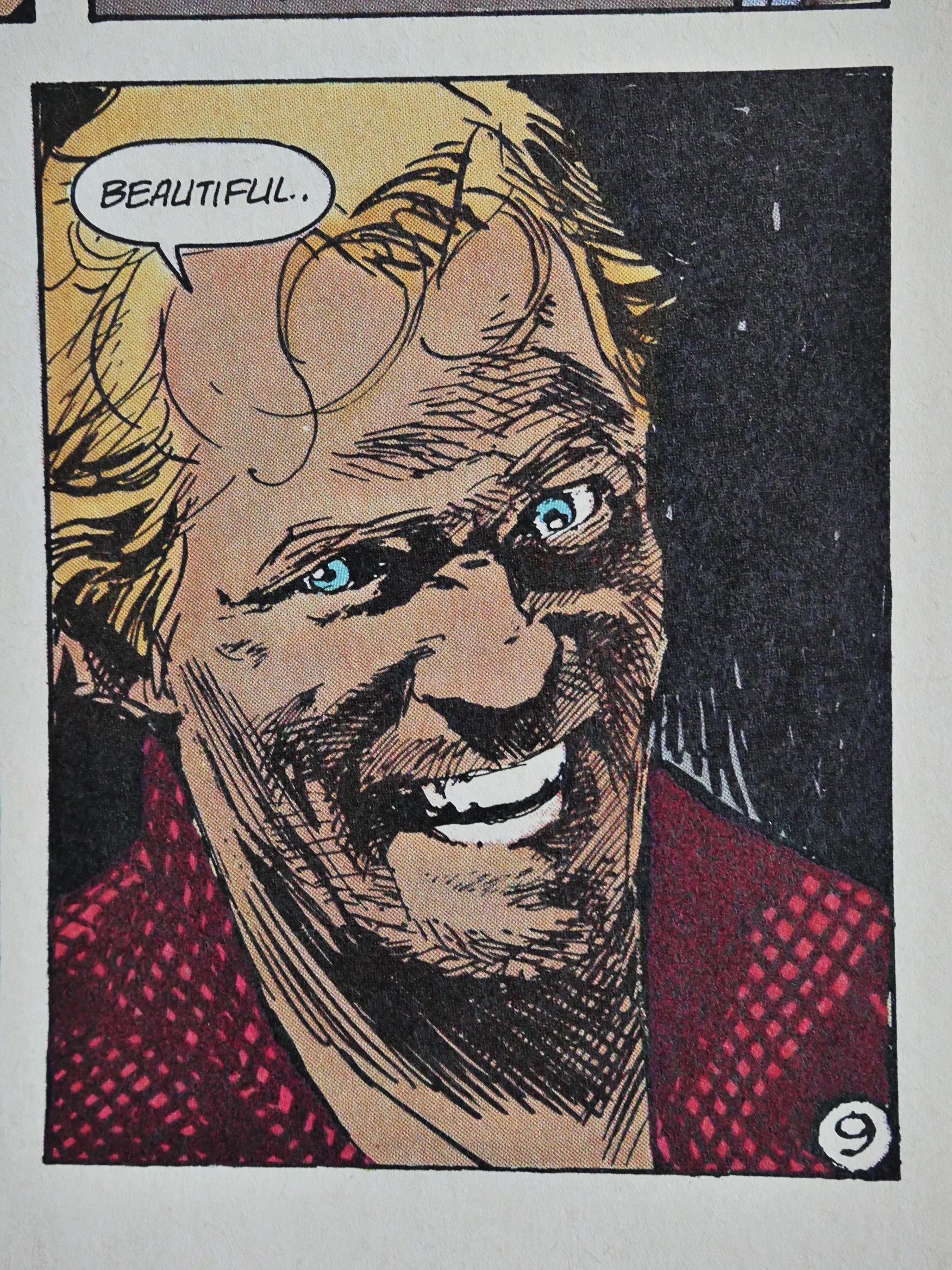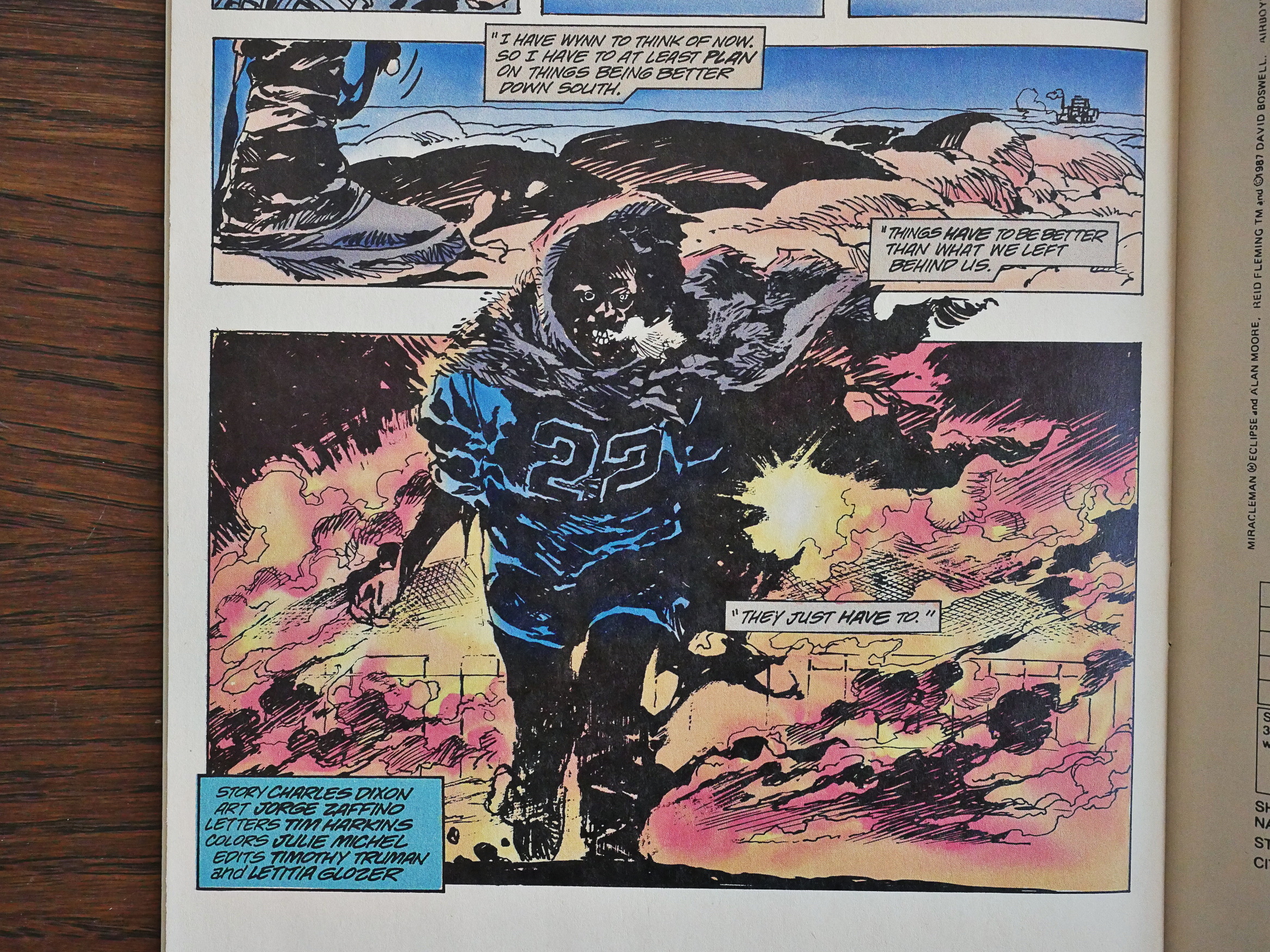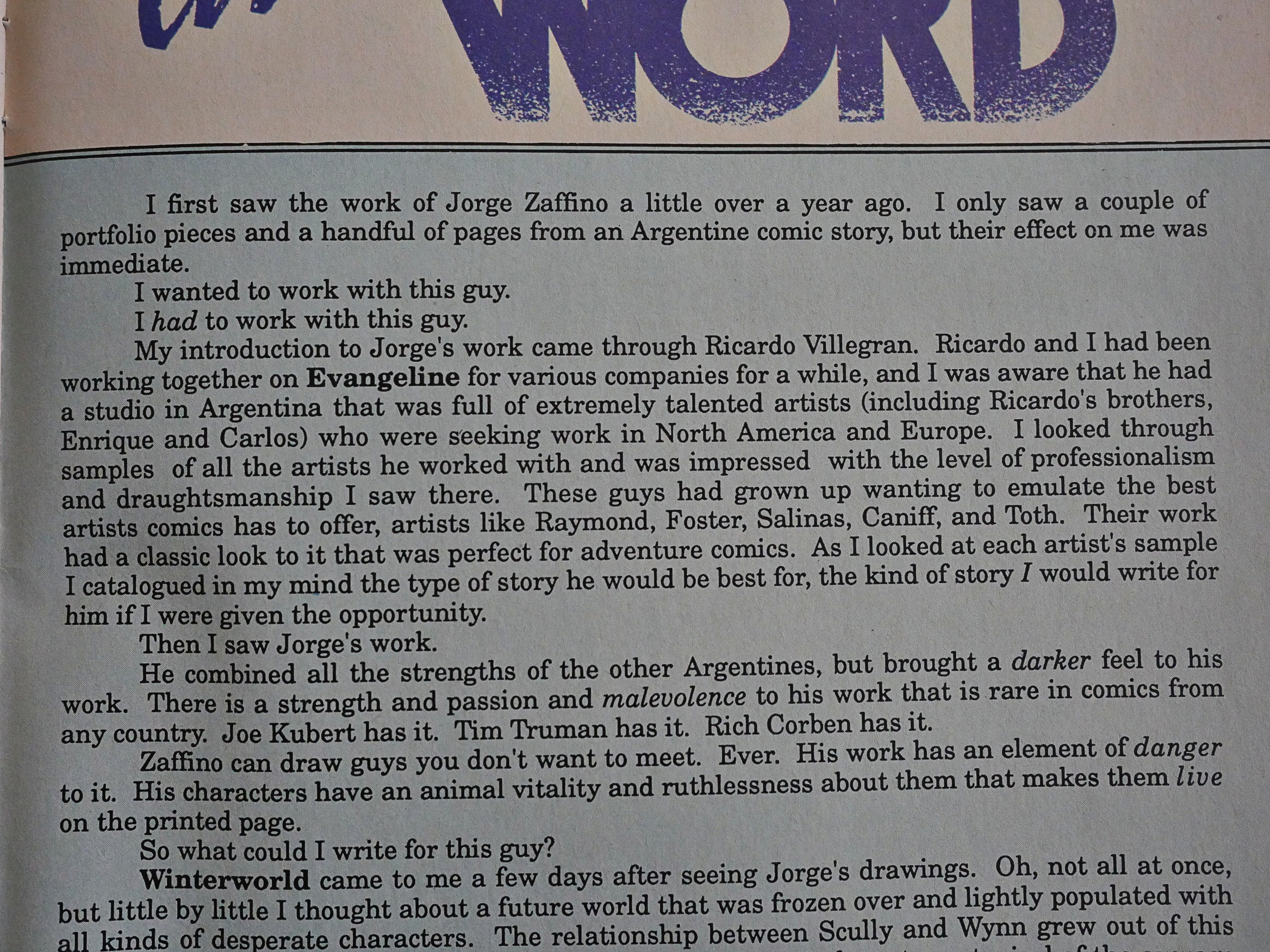Xenon (1987) #1-23 by Masaomi Kanzaki et al.
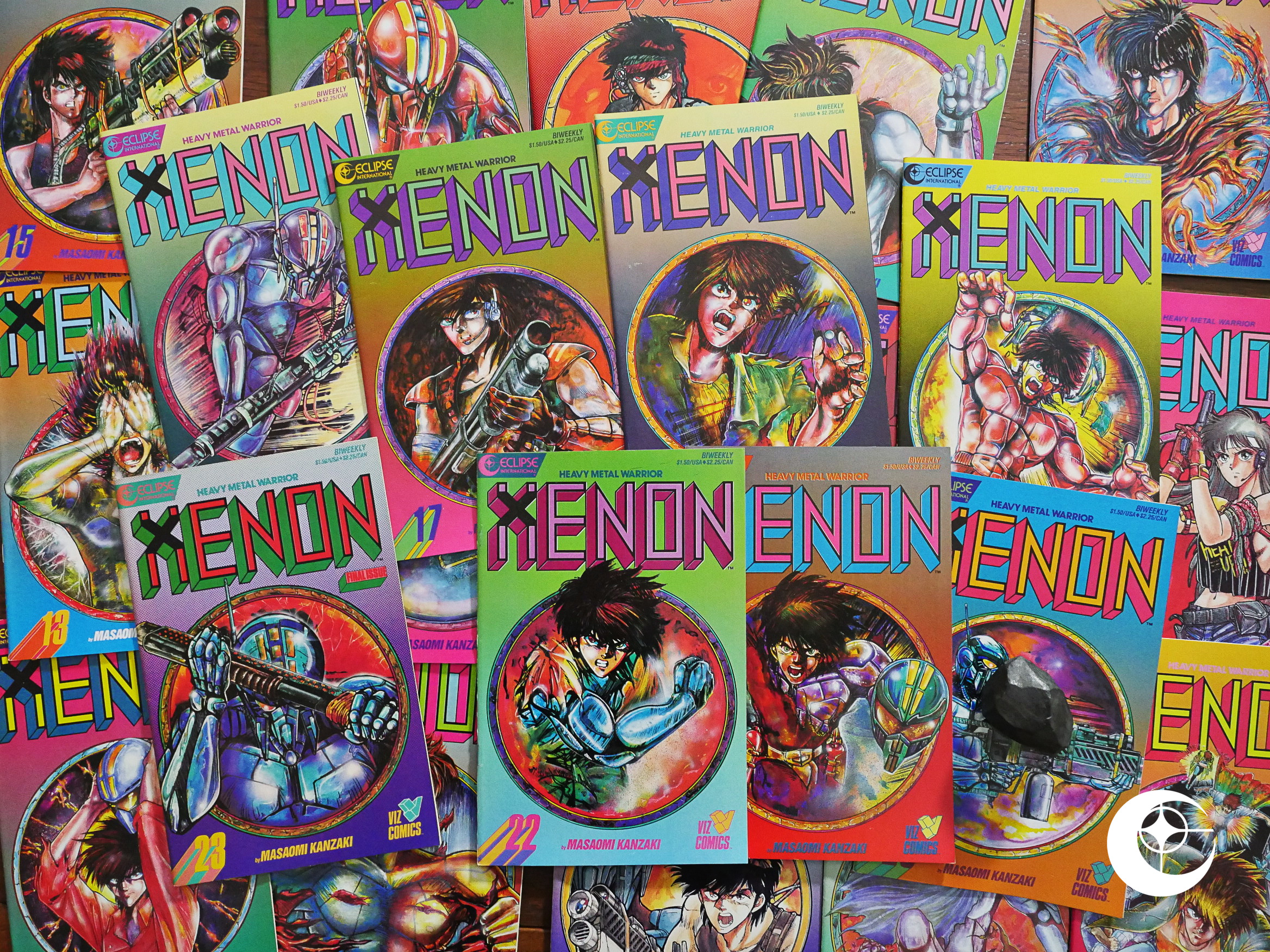
This is the fourth and final bi-weekly Eclipse/Viz reprint series of Japanese comics. This was meant to run only 23 issues, so it wasn’t pulled by Viz like Kamui and Area 88 was when Viz became unhappy with the sales levels provided by Eclipse. In light of what later happened between Eclipse and their next partners in Japanese comics, Studio Proteus, it does raise some questions about what really happened…
But we’ll get to that when we get to 1992. Only mumble blog posts to go!
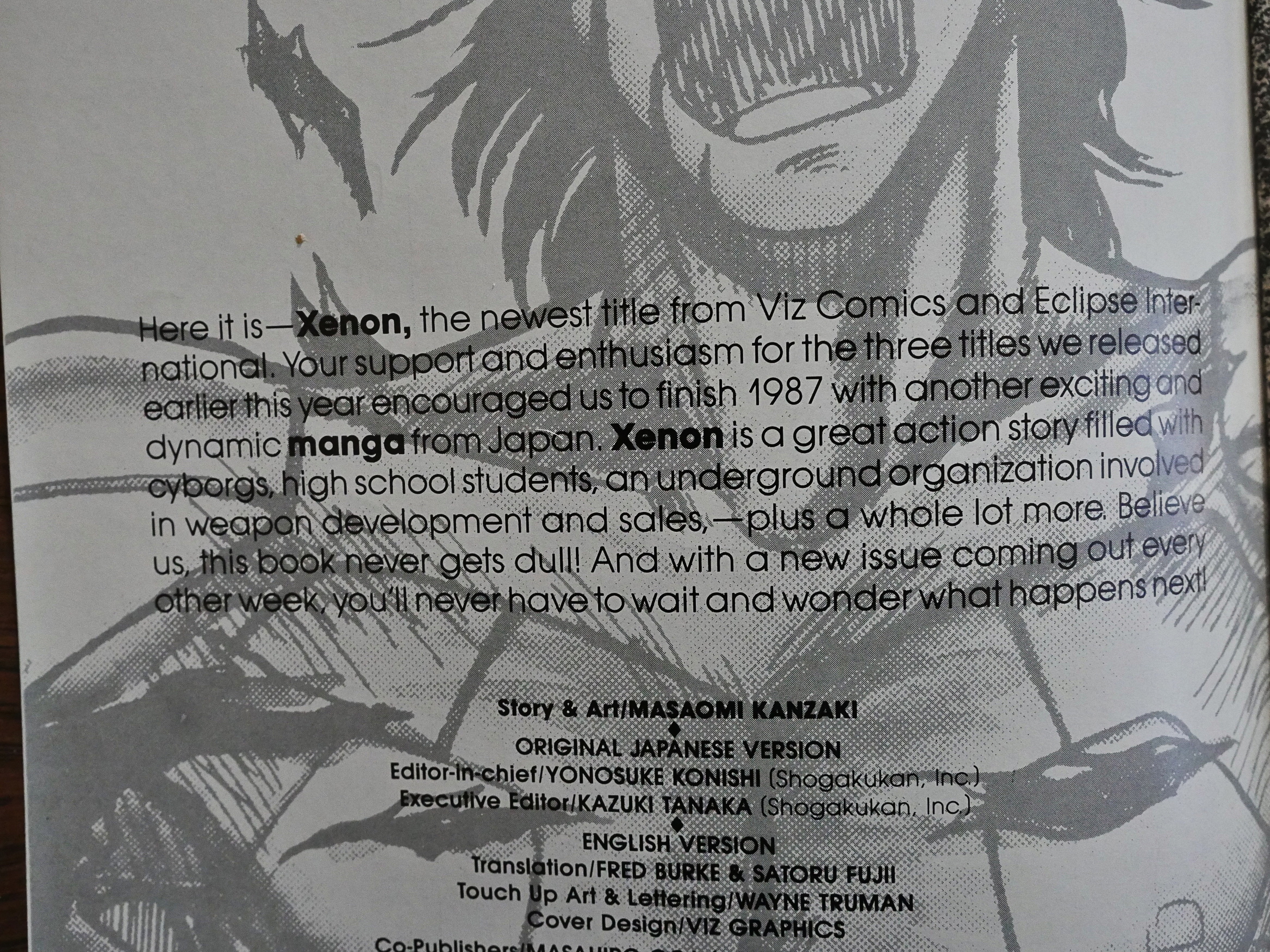
This was launched half a year after the initial three series, and is the most contemporary Japanese of them all, so I’m guessing that Eclipse (and Viz) realised that American audiences weren’t as resistant to foreign culture as they had surmised.
As long as that foreign culture was Japanese, of course.
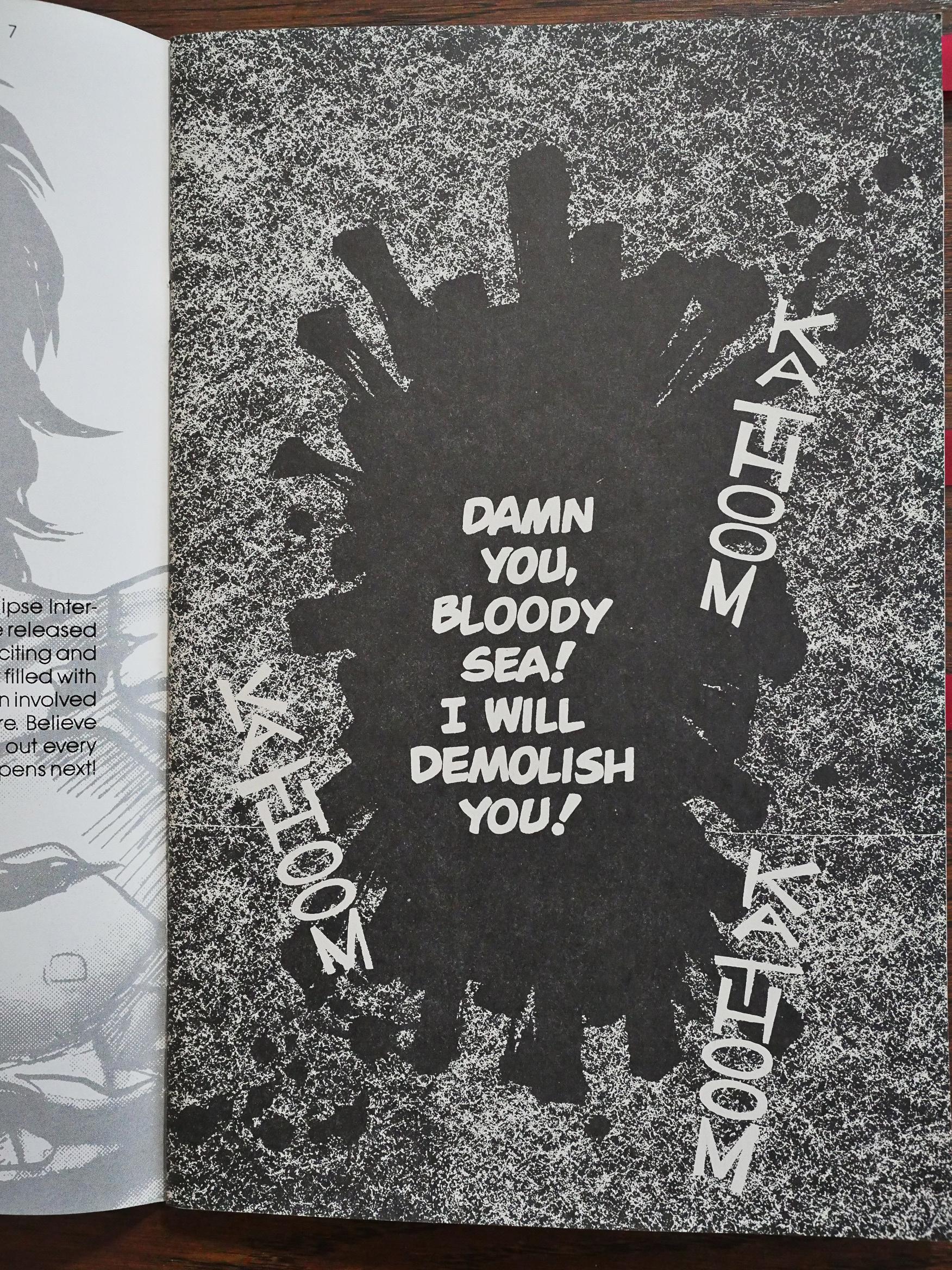
I really like the way this series starts: So completely over the top. That’s the first page…
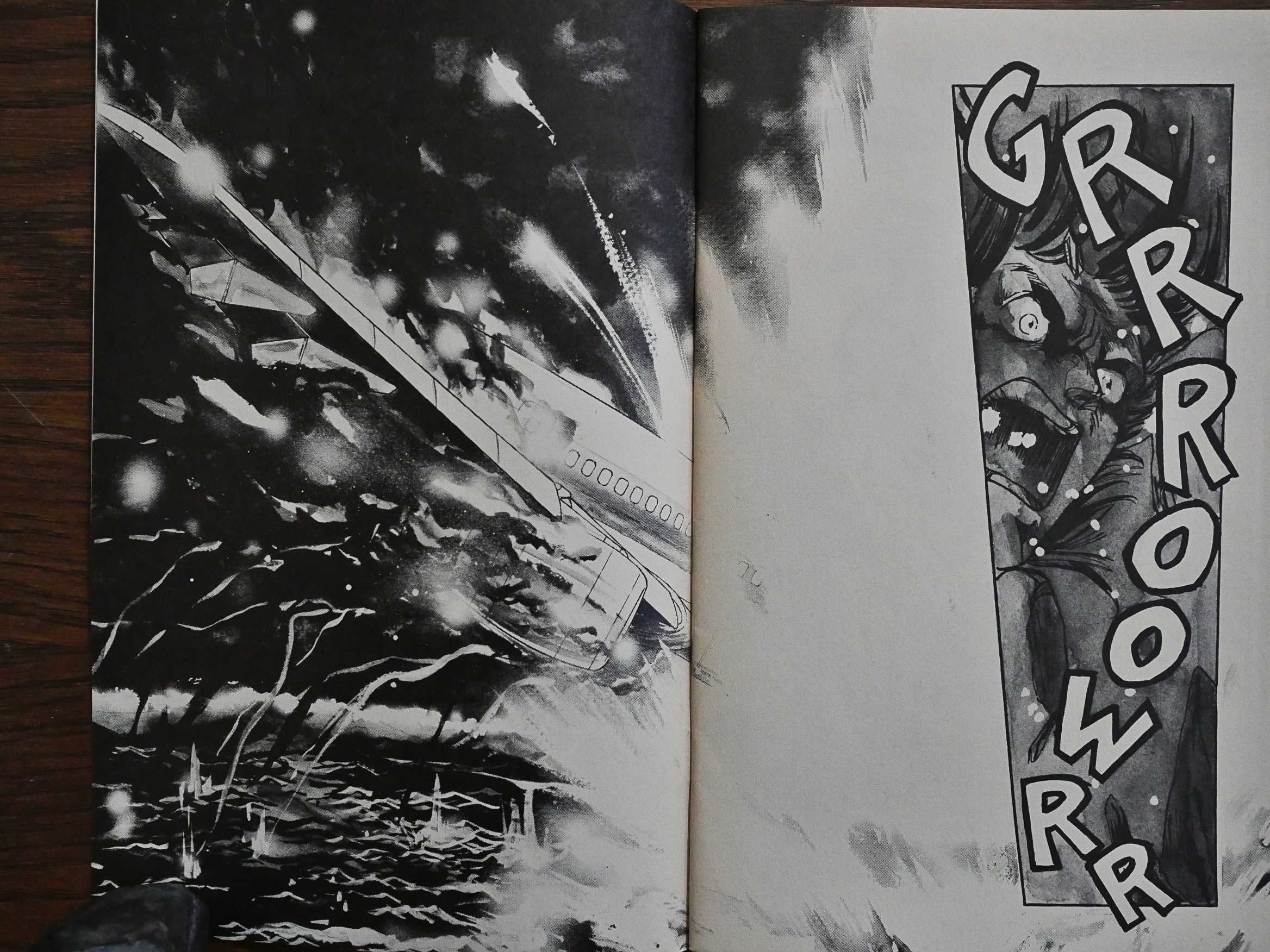
And those are the two subsequent pages. Isn’t that a great, unhinged way to start off a story?
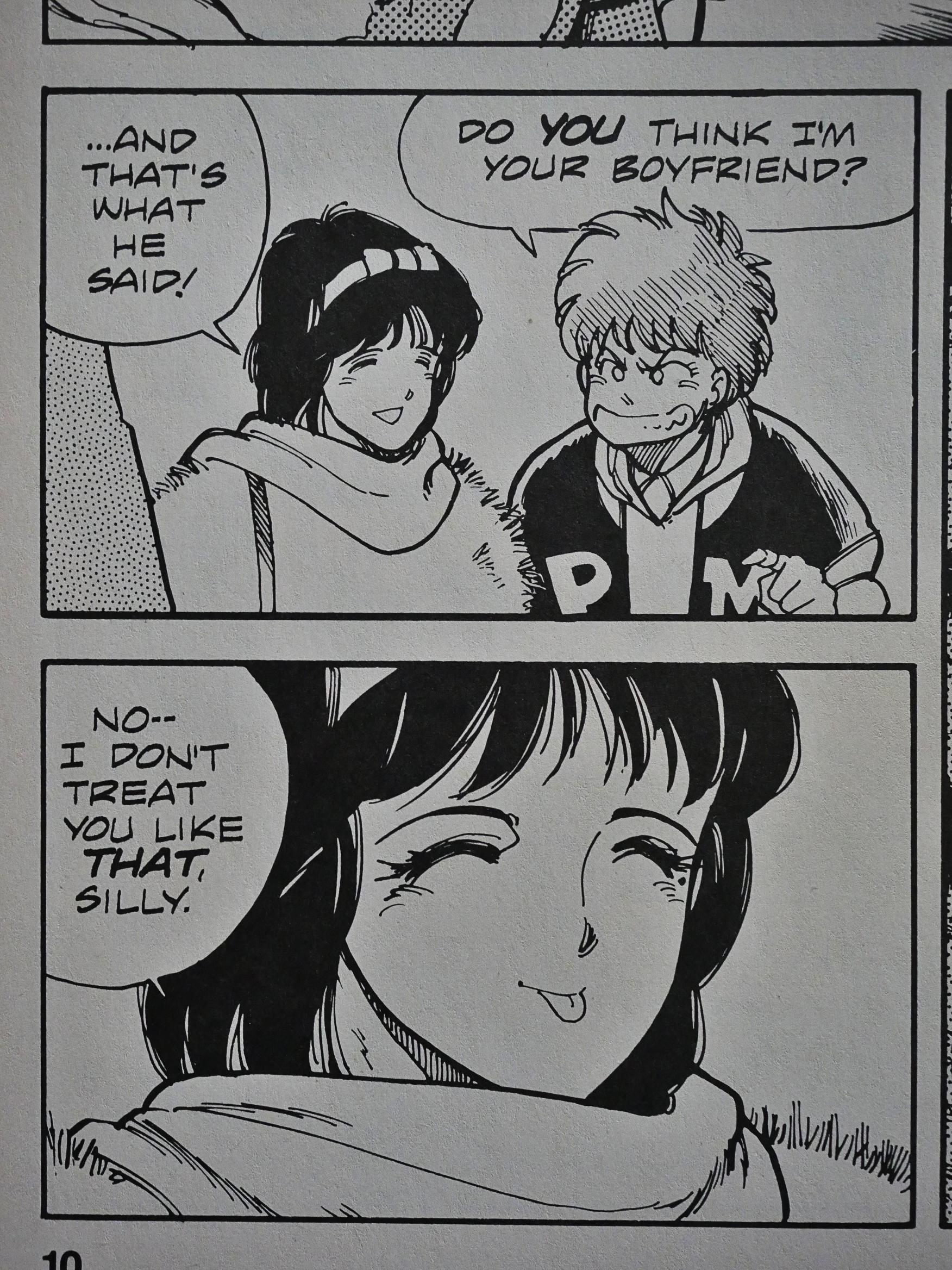
And this is how two of the main characters are introduced; in mid-sentence, in mid stride, and Masaomi Kanzaki manages to delineate their characters that fast. In these two panels, we get that Risa is a boyish, impish girl and that Sonoko is fun, but romantic.
(Yeah, about that “Risa”… For all these four series, Eclipse would insist on translating names with ambiguous L/R (since the Japanese don’t really separate that much) as “R”. I can appreciate the logic, but it just reads a bit racist.)
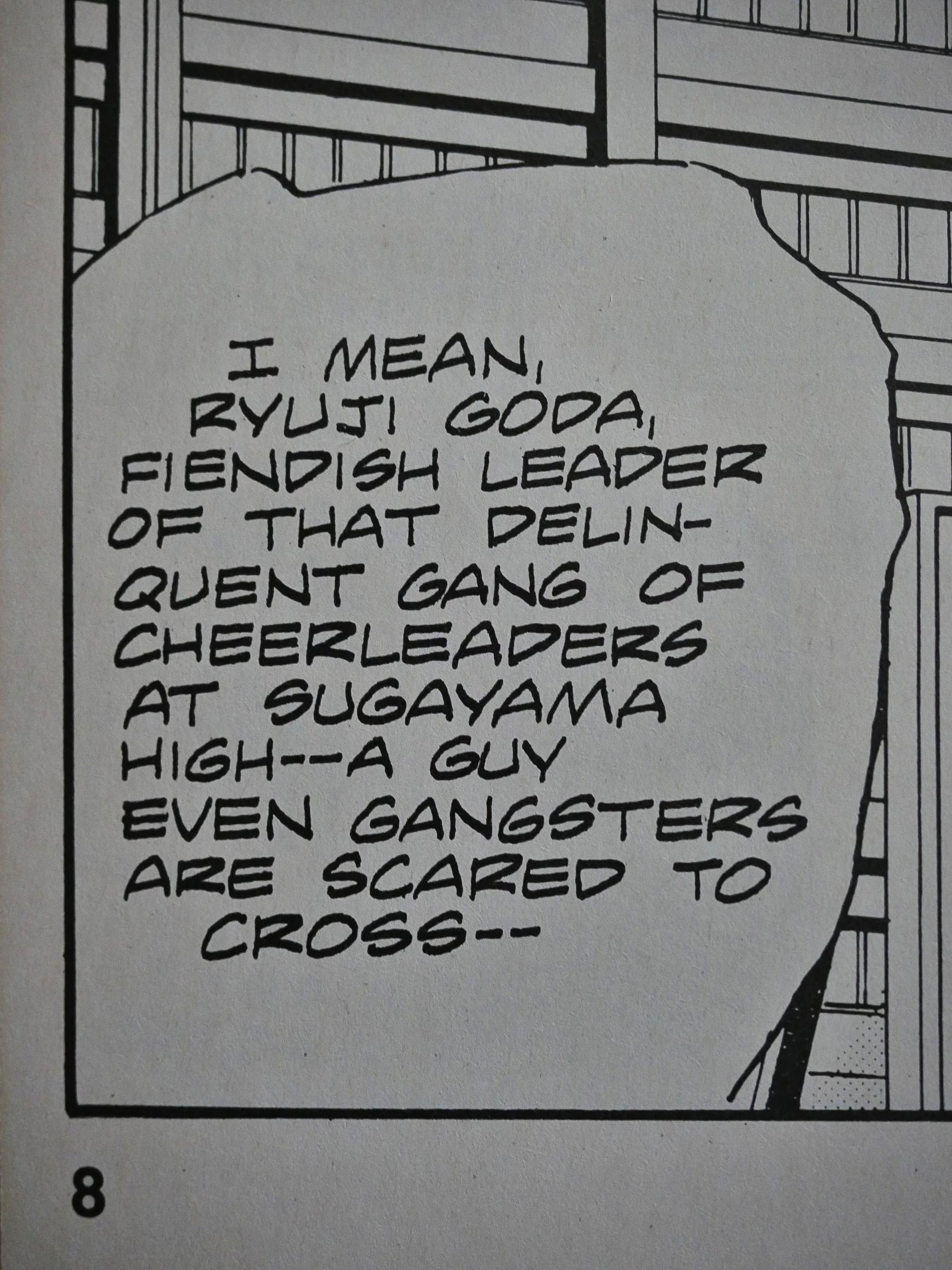
*gasp* A delinquent gang of cheerleaders! It cannot be!
These are the major initial villains, but fortunately they’re expedited toot sweet.
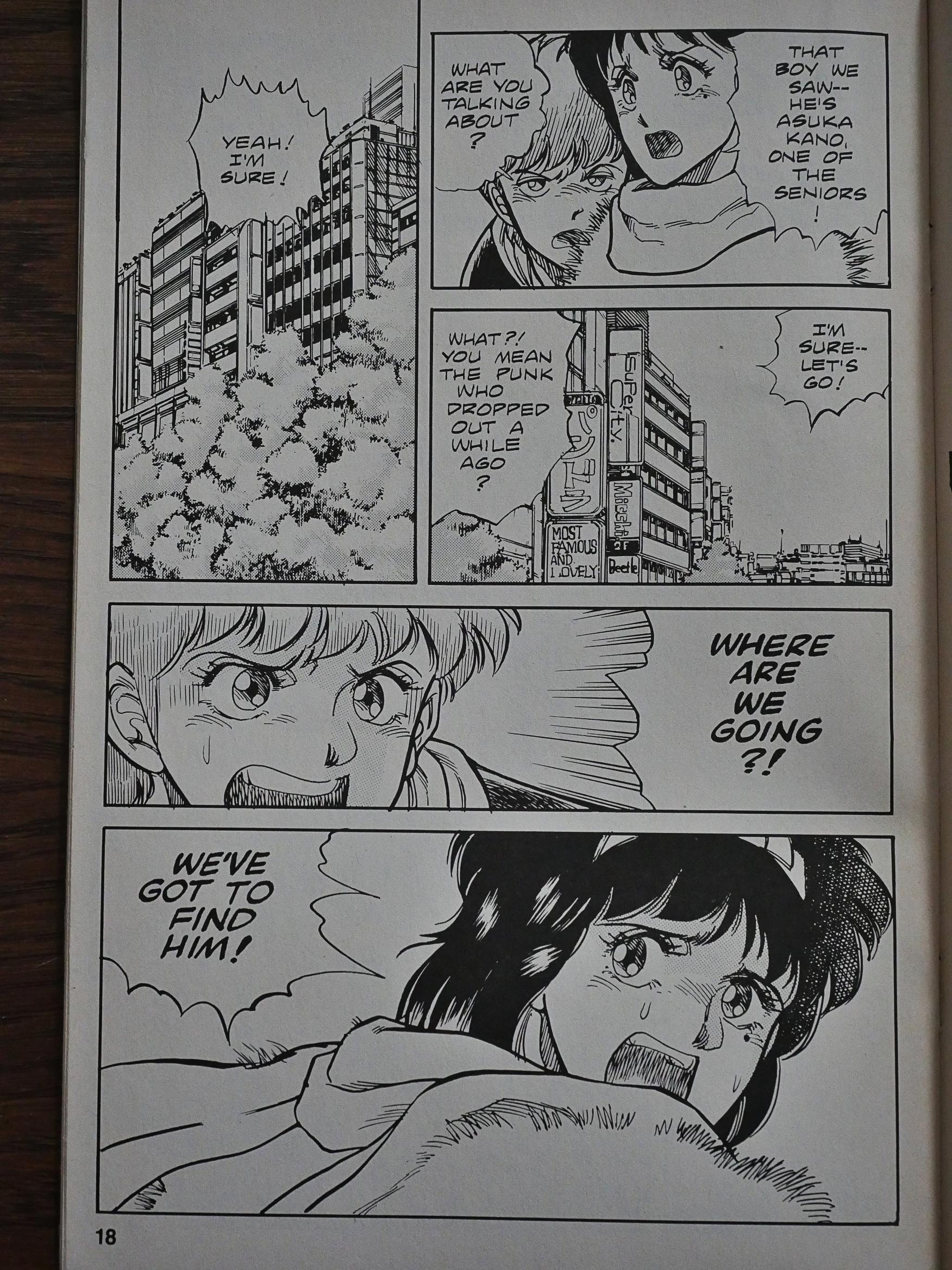
Yeah, it’s a loud series. THERE”S A LOT OF SHOUTING! SO MUCH SHOUTING! SO DRAMA!
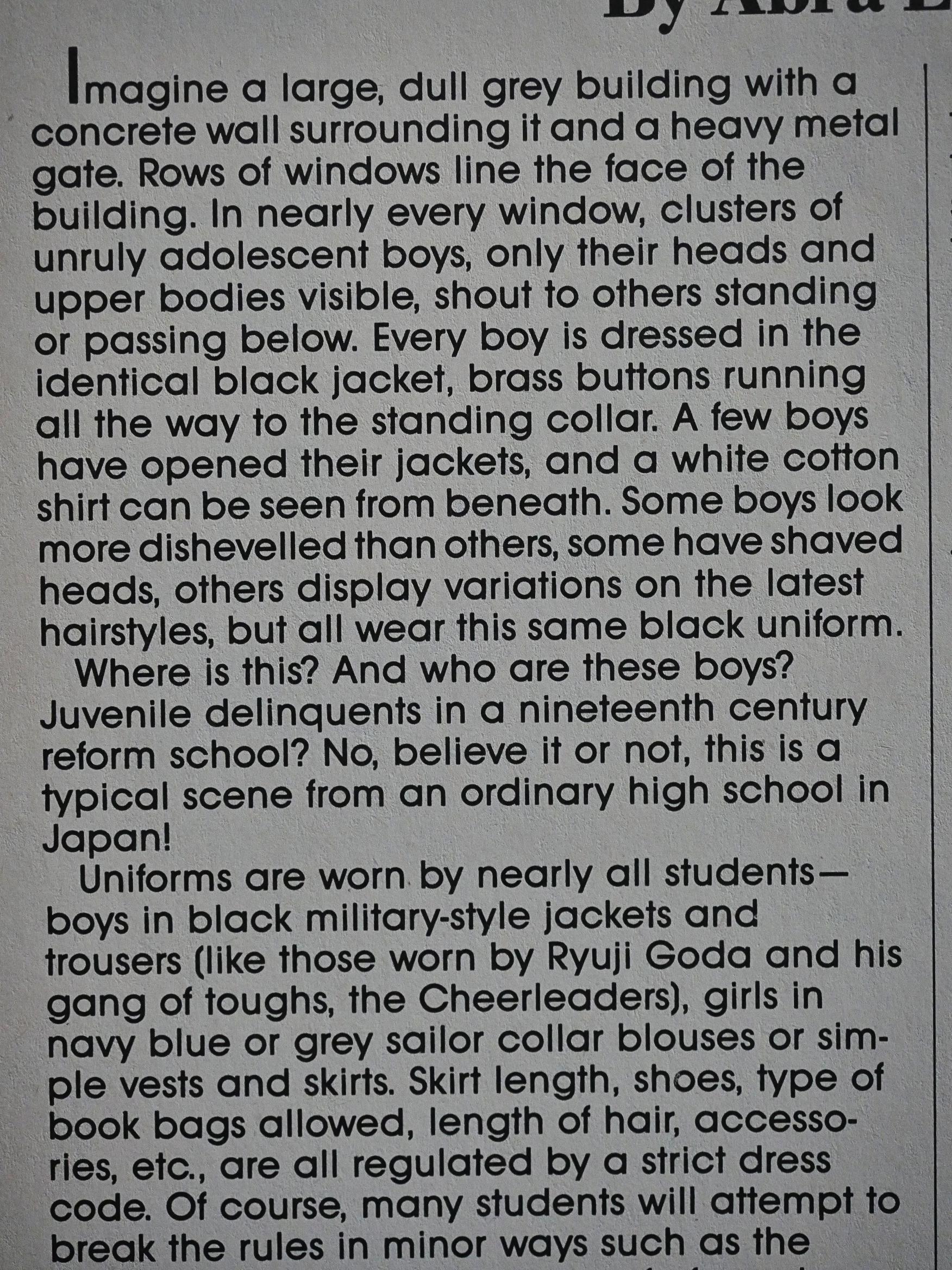
For a handful of issues we get an introduction to Japanese culture, like the apparently shocking fact that school uniforms exist. Perhaps this is more of an introduction into what culture the editors think Americans lack…
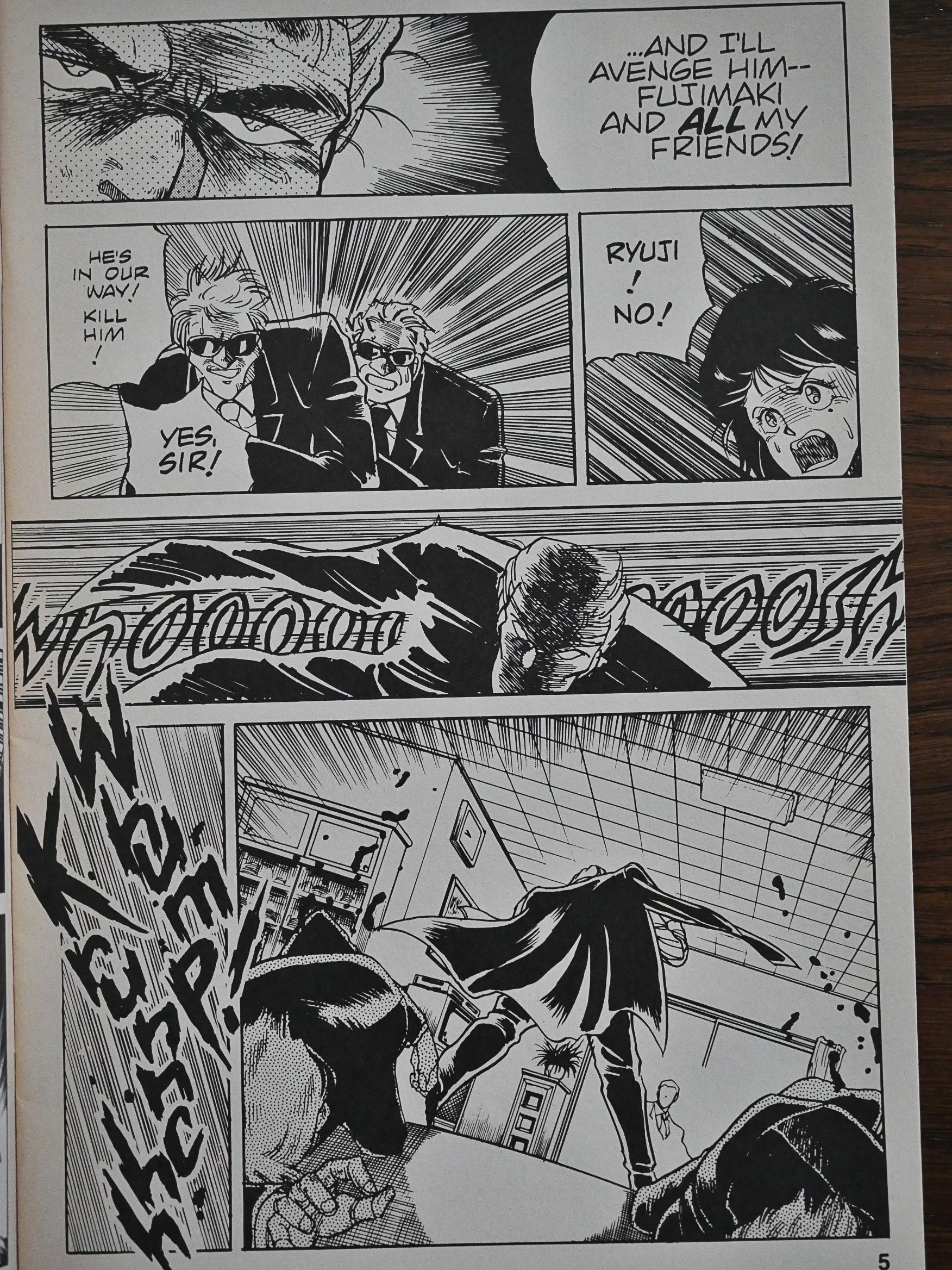
ANYWAY.
There’s lots and lots and lots of action. While the non-action pages are models of clarity and storytelling basics, the action scenes frequently go into “er?” territory. I’m guessing that the guys in the sunglasses rushed Ryuji and then he did some karate or something, but I have no idea why that karate or something would make the blood spatter the air.
There’s a lot of action scenes like this.
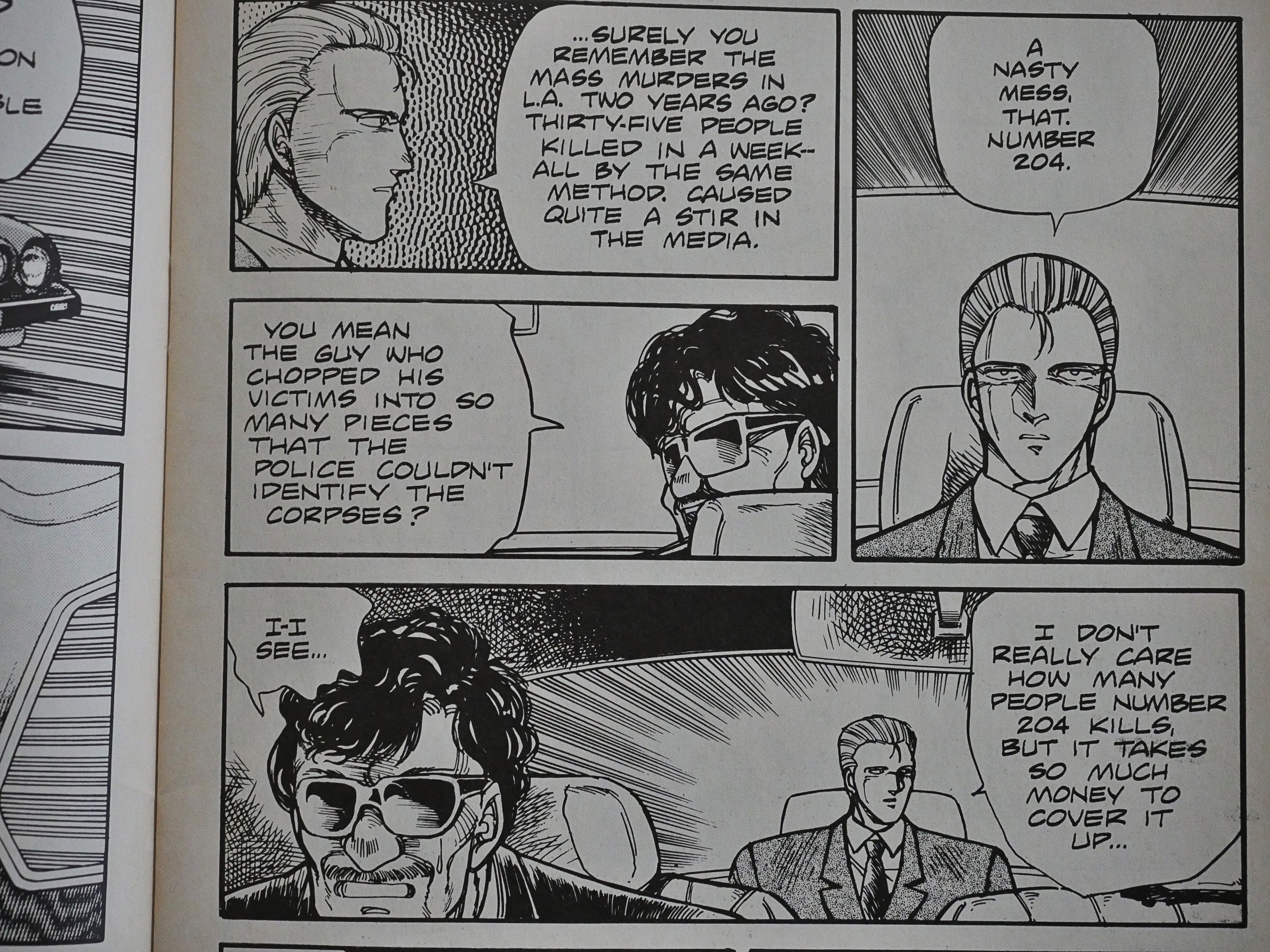
Masaomi Kanzaki has some different modes of drawing. When he’s drawing the kids (i.e., the heroes) the artwork looks quite attractive, but the style he uses for the older people is such a turn-off. Especially the guy with (presumably) white hair up there, with a tiny head on too-wide shoulders.
Virtually all Japanese comics made for children (like this is) is made by studios headed by the person who gets their name on the cover of the collections. I’m wondering whether these awkward scenes were drawn by somebody else while Masaomi Kanzaki concentrated on doing the fun stuff.
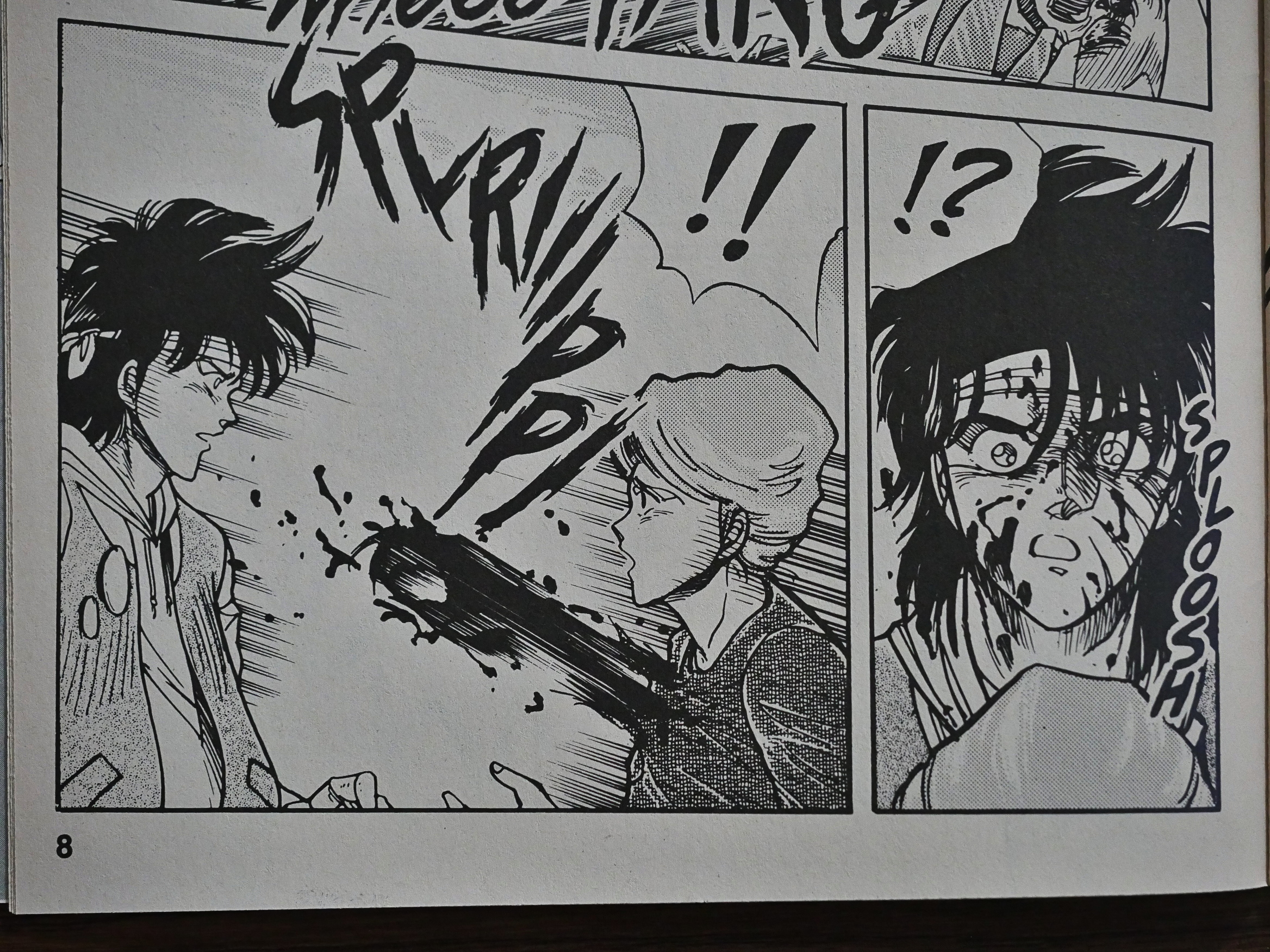
Like fridging Our Hero’s mother to his face. Yes, a few pages later he then vows to go after the evil organisation that killed his mother, so it’s the most basic fridging possible. The entire thing is lazy like that.
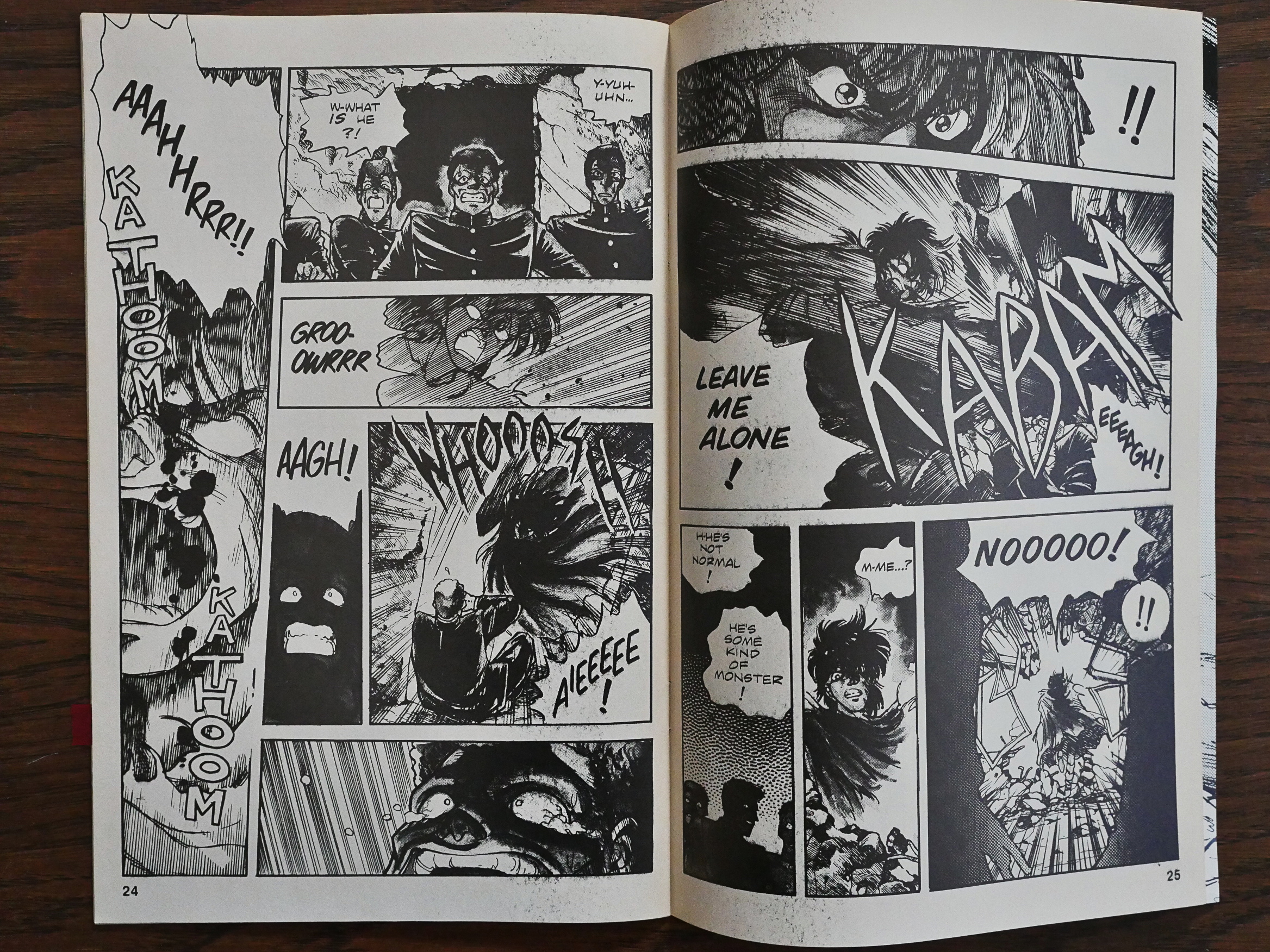
On the other hand, there’s so much chaos to appreciate. It’s barely comprehensive, but it’s just so out there. How can you not like?
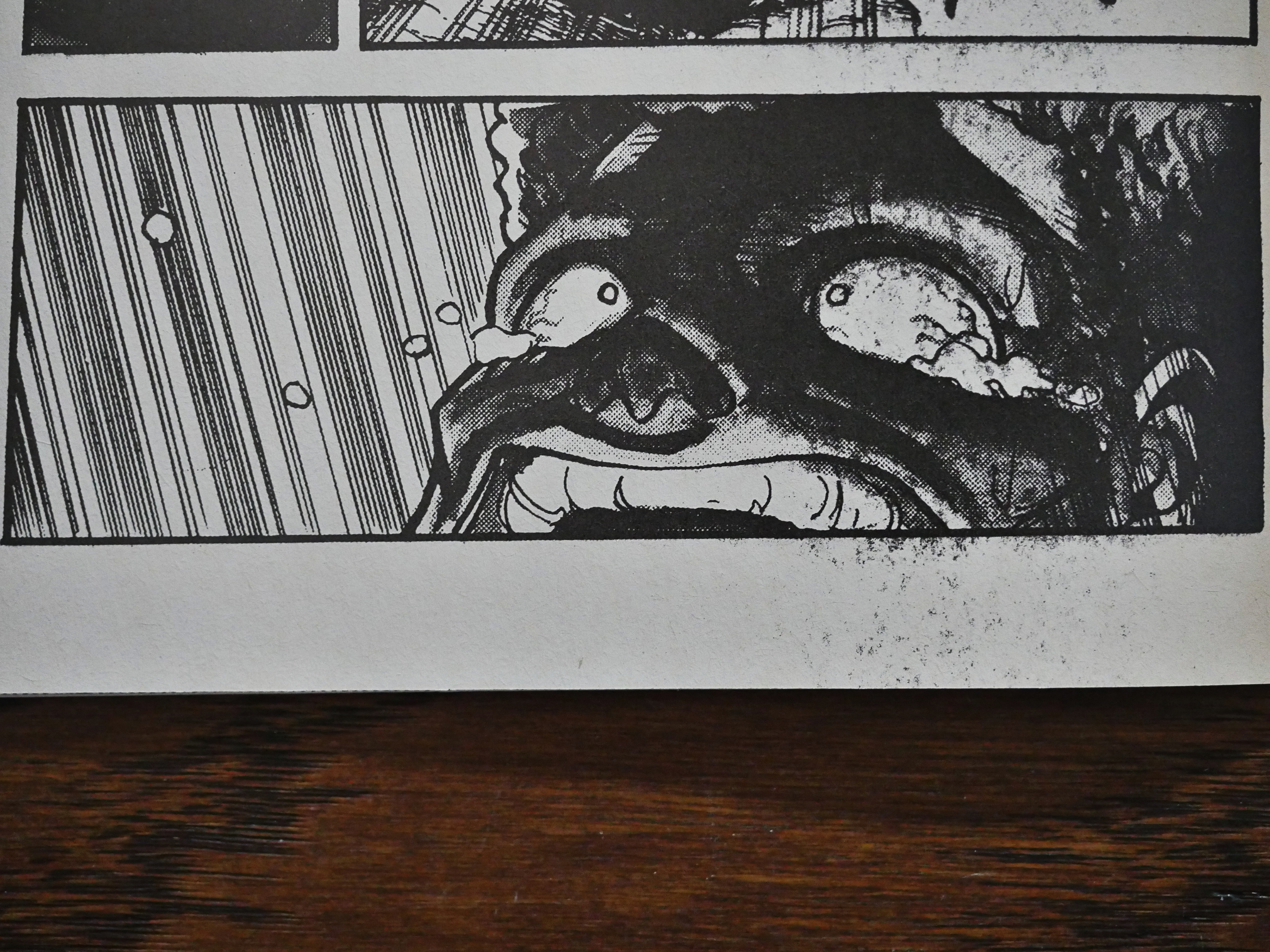
Although that particular page may have been messier than intended… are those smudged greys supposed to be like that or a printing error?
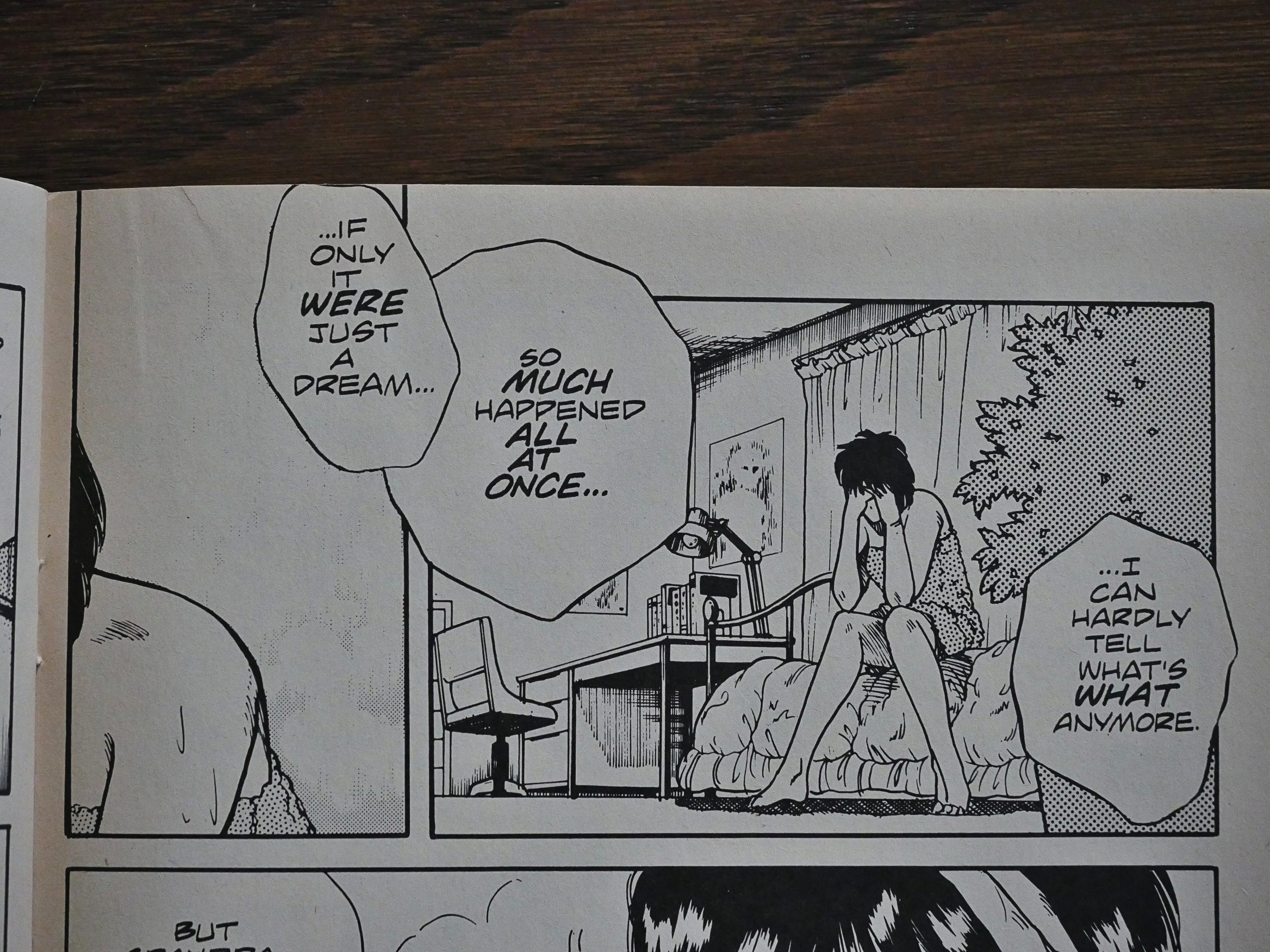
Some storytelling choices are just great. The first panel is incomprehensible: Somebody’s shoulder? But then the next panel reveals what’s going on here, and it just suddenly works. It’s not cinematic, thank Odin; it’s very comics. But weird and fun.
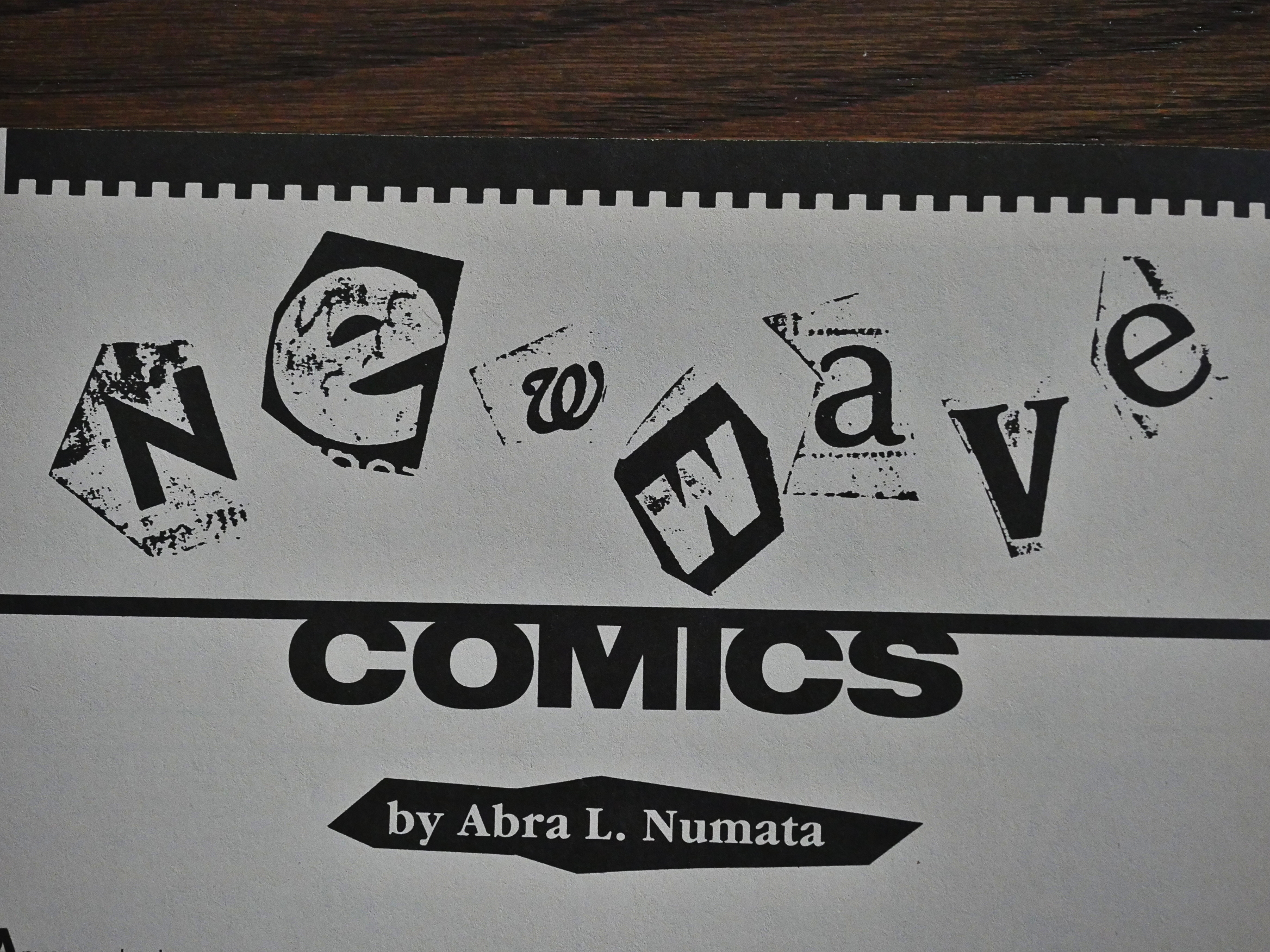
Abra L. Numata writes the best text piece in the series, and it’s about the “new wave” in Japanese kid’s comics (of which this was one, and Akira was another).
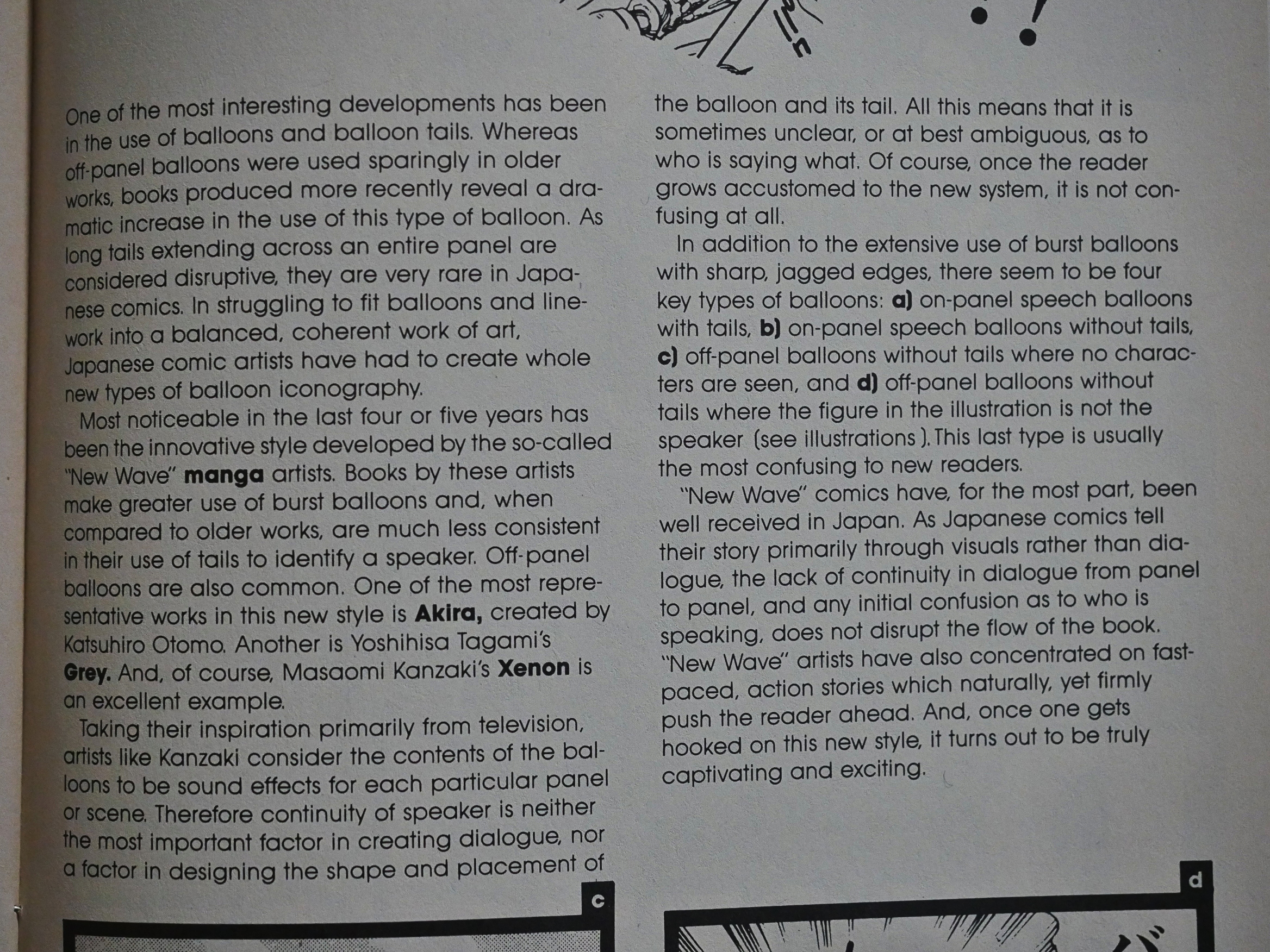
Numata goes into interesting technical details about the innovations of this new wave. I mean, I find it interesting. Instead of talking about “themes” and “plot” and tedious things like that, Numata talks about speech balloons, their placements and the use/non-use of tails.
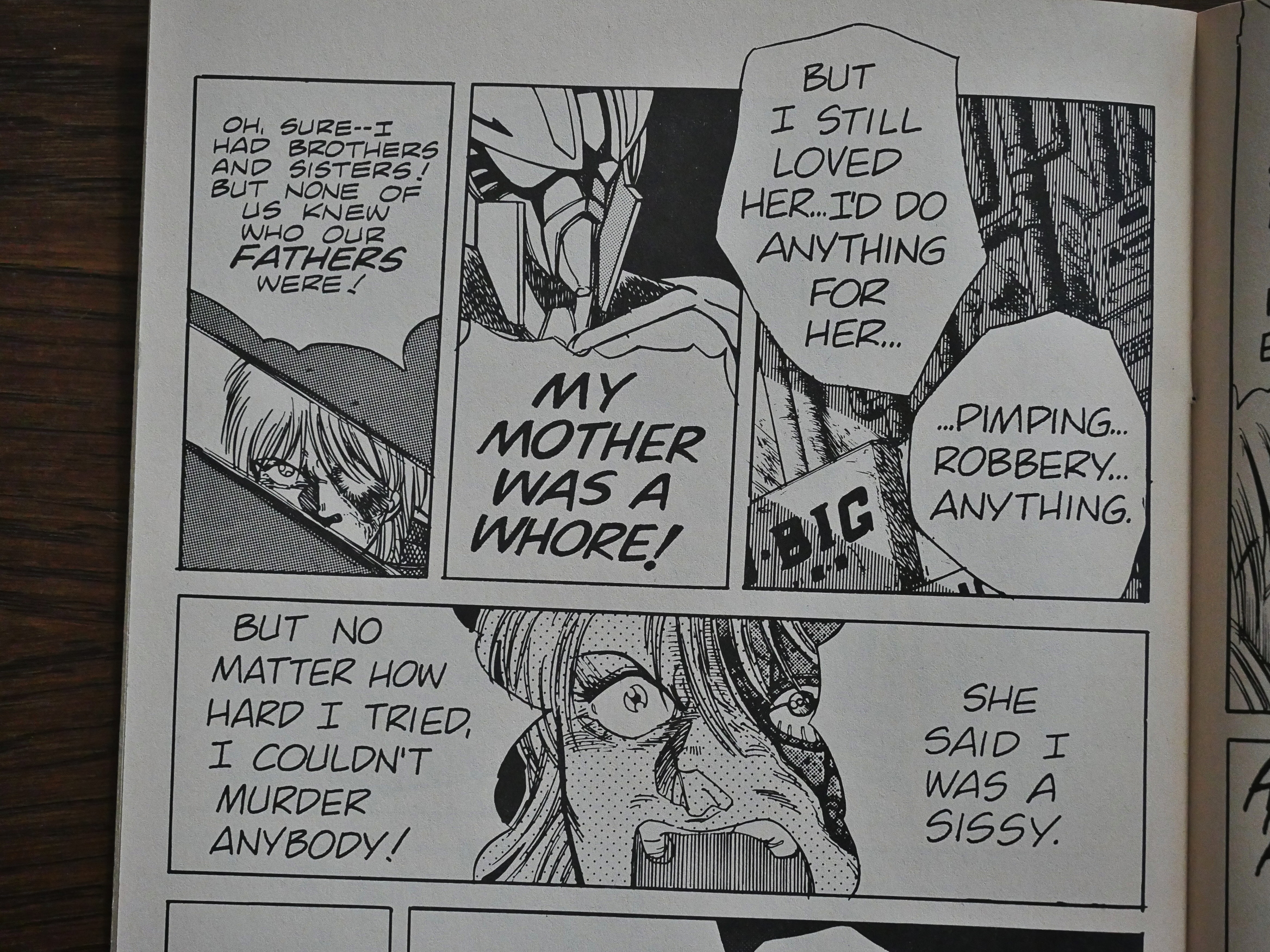
And it’s true: The speech balloon placement is great, and it’s non-traditional. I hadn’t particularly noticed, because Masaomi Kanzaki does the placement very carefully and logically, so as a reader, I was never in doubt who was saying what. Which is often a problem with Japanese comics.
(Above we have the sad background for the first major villain.)
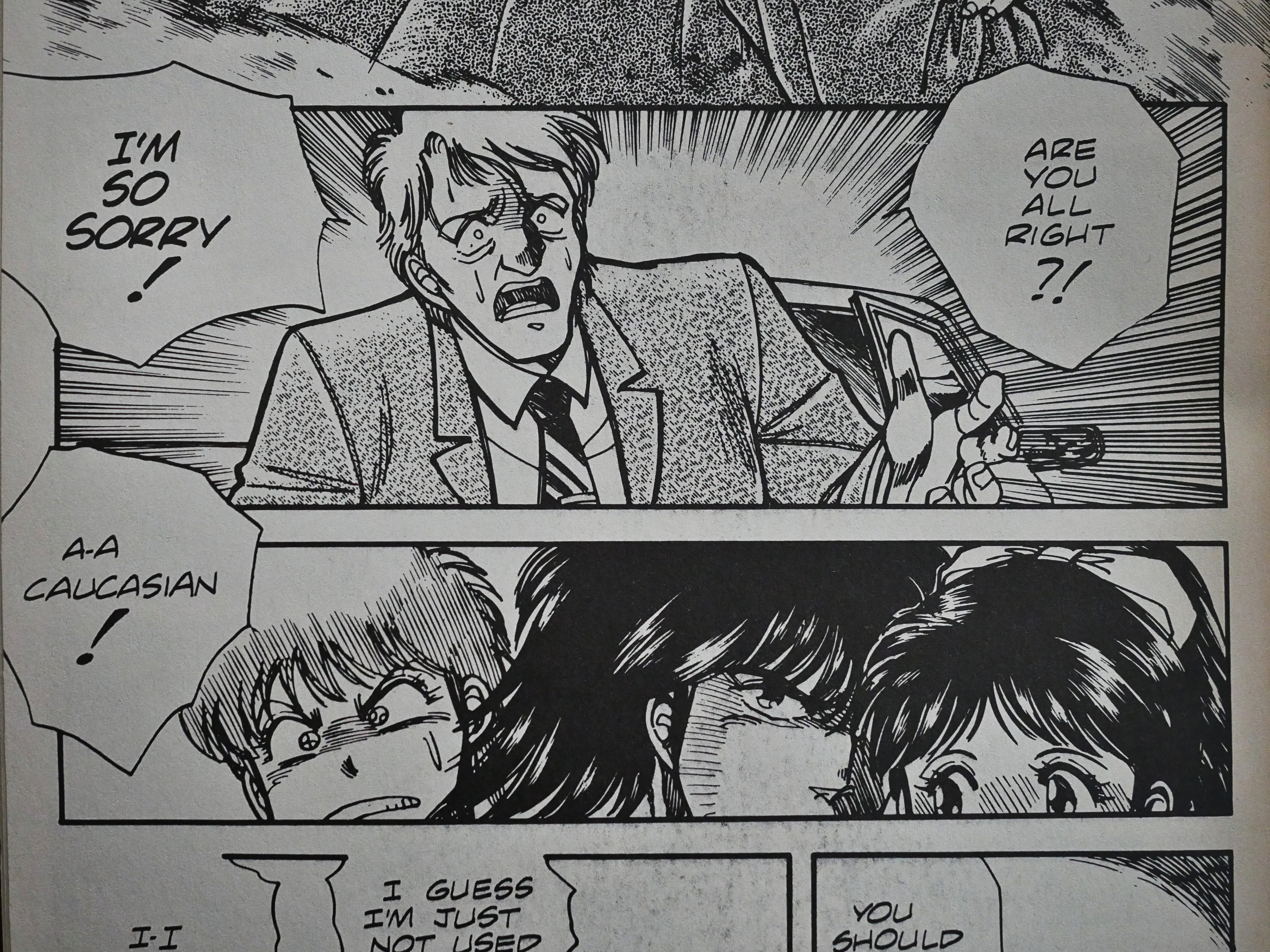
Some parts of the series haven’t aged well.
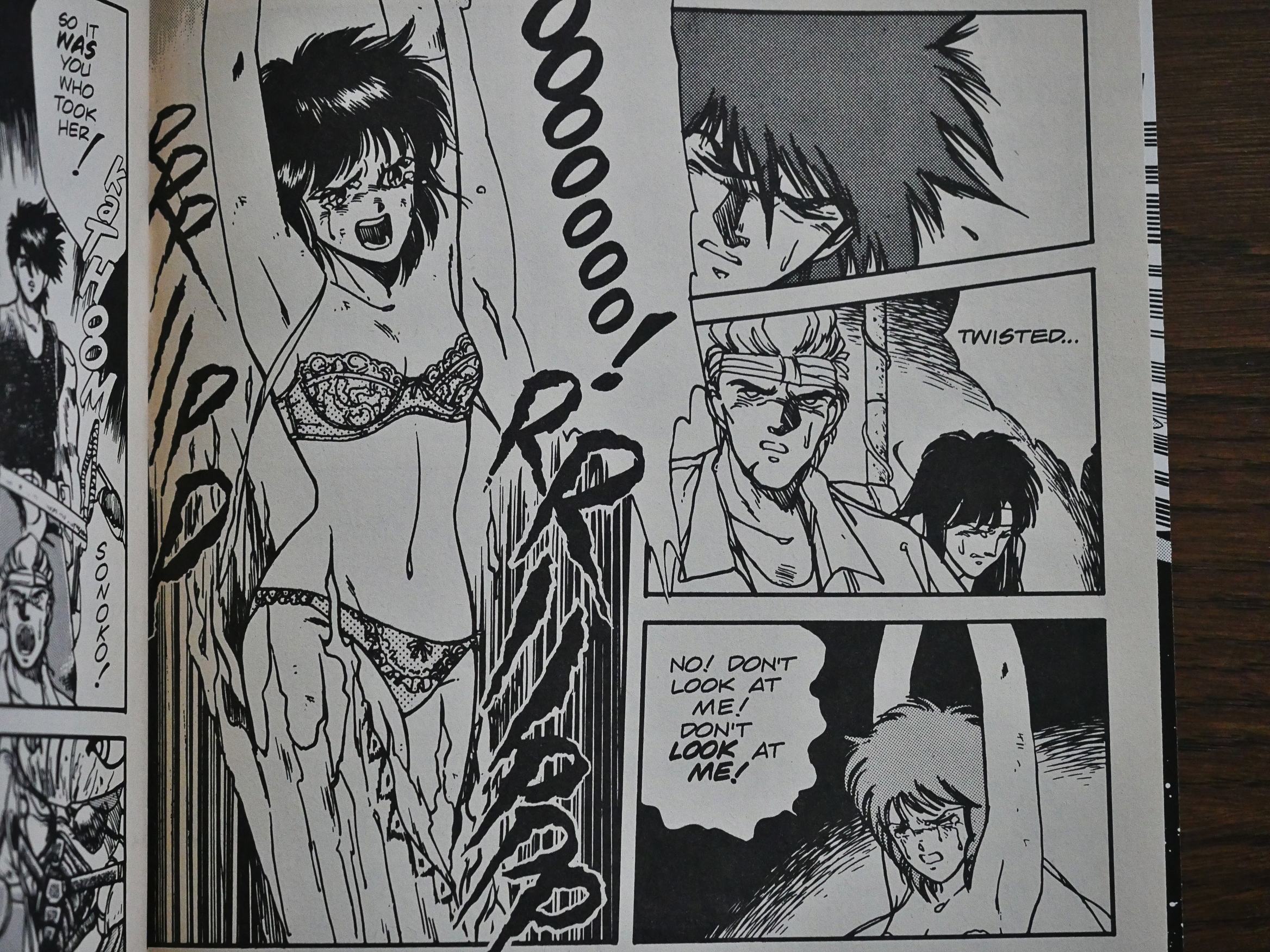
I thought they were going to fridge the semi-love-interest of Our Hero, too, but they just ripped off her clothes and waved her around a bit instead. (To motivate Our Hero.)
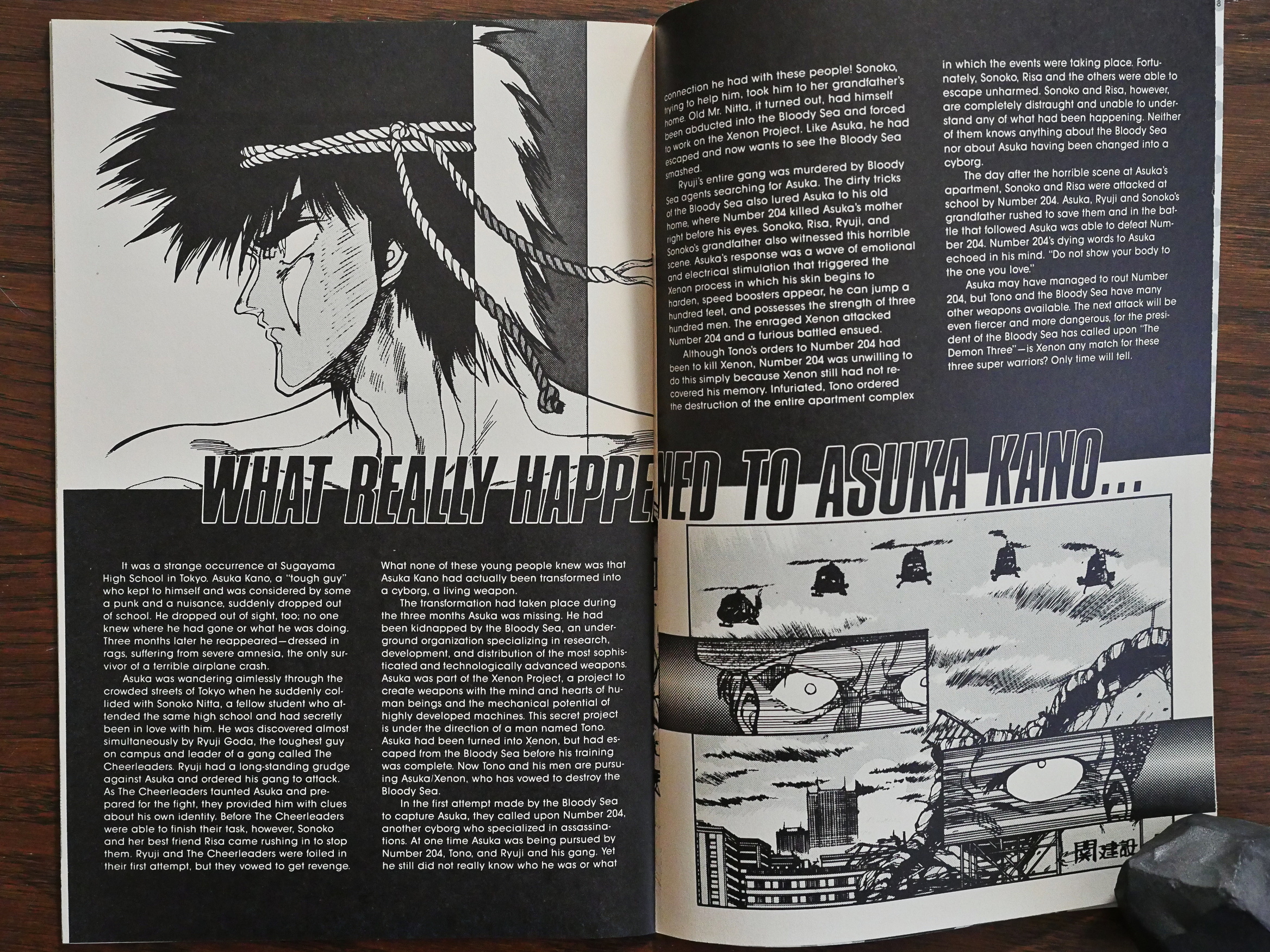
They weirdest text piece in the book is where they basically recap everything that had happened to Our Hero, and speculates on the bits that Masaomi Kanzaki had left out (presumably on purpose).
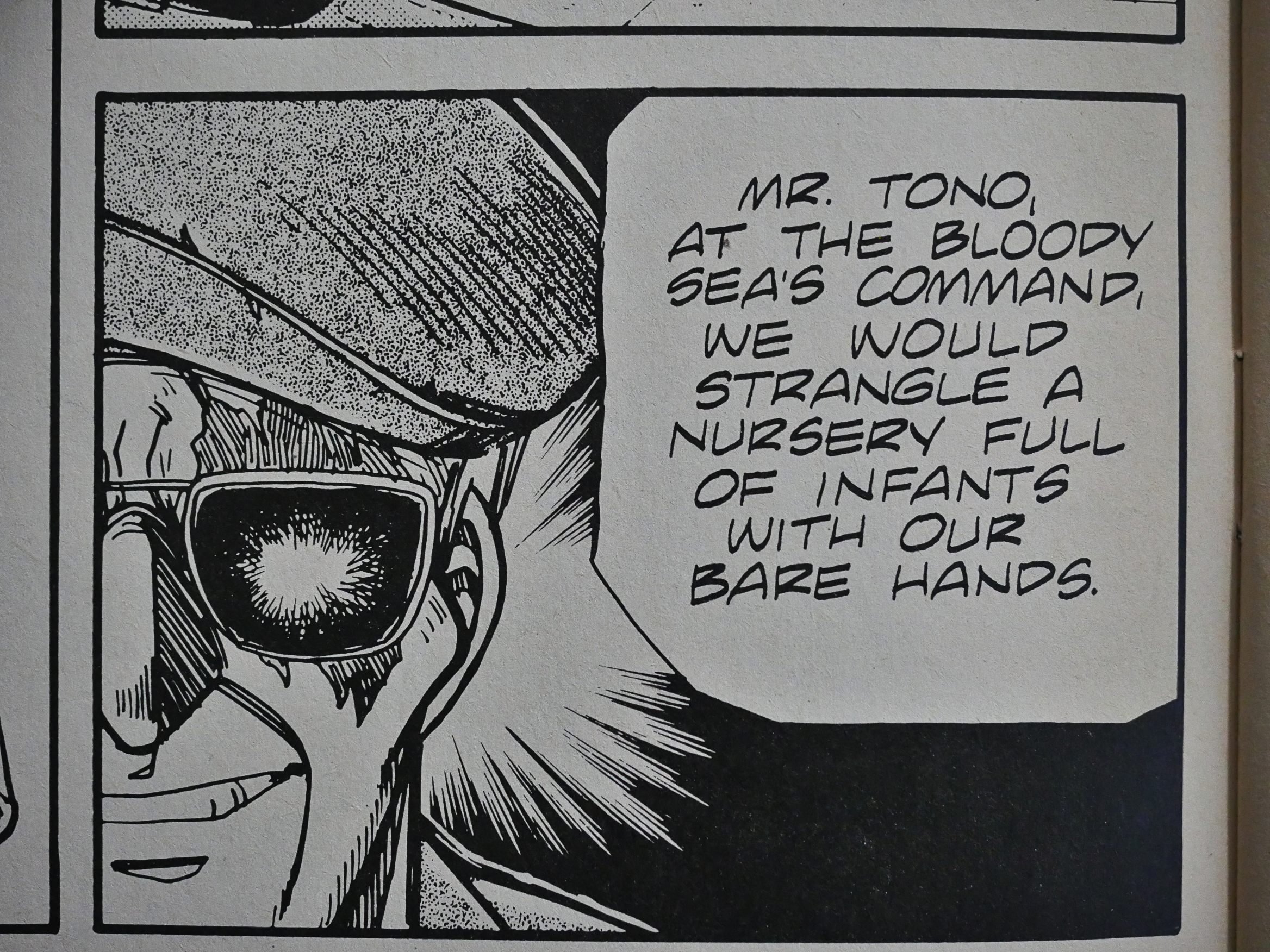
The next major villains dispense with the sob story background for their villainy.
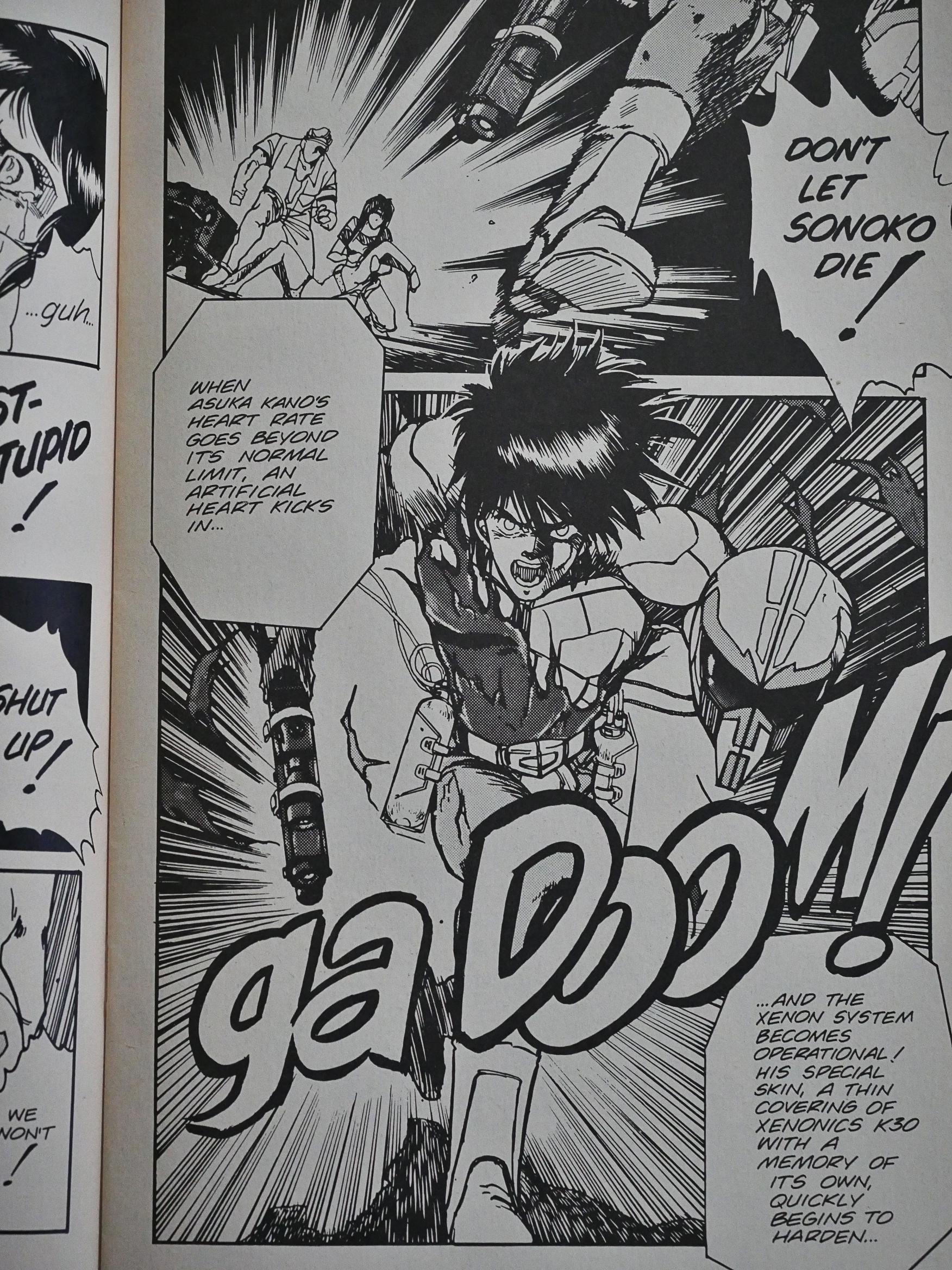
At random intervals during a fight scene, they’ll drop in a page that explains his super-hero powers. I mean, how his cybernetics work. It’s weird.
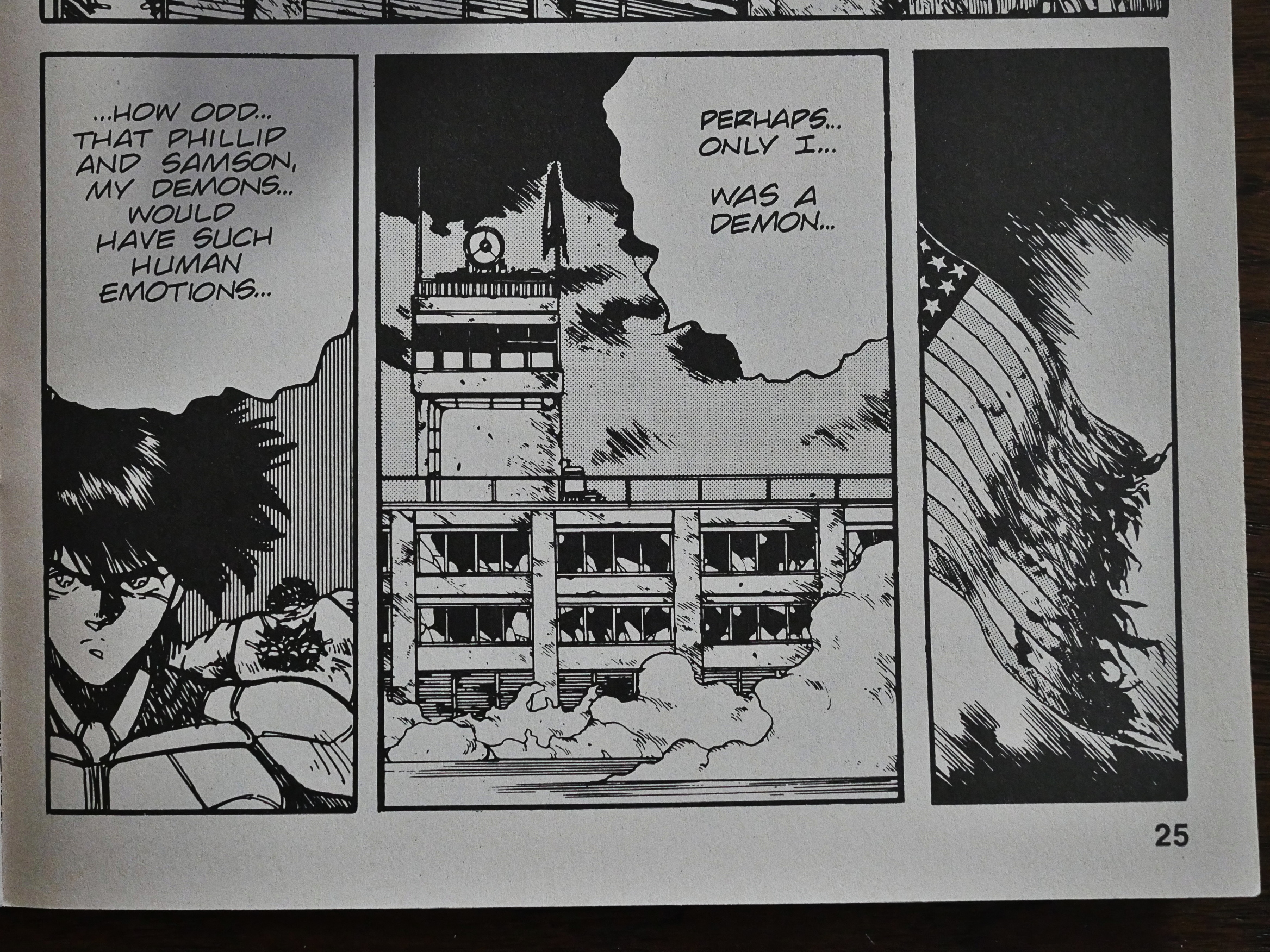
Xenon manages to hit all the required beats for a series like this, including some random scenes of pathos in the aftermath of an awesome fight. I think that’s called “depth”. I mean, by others.
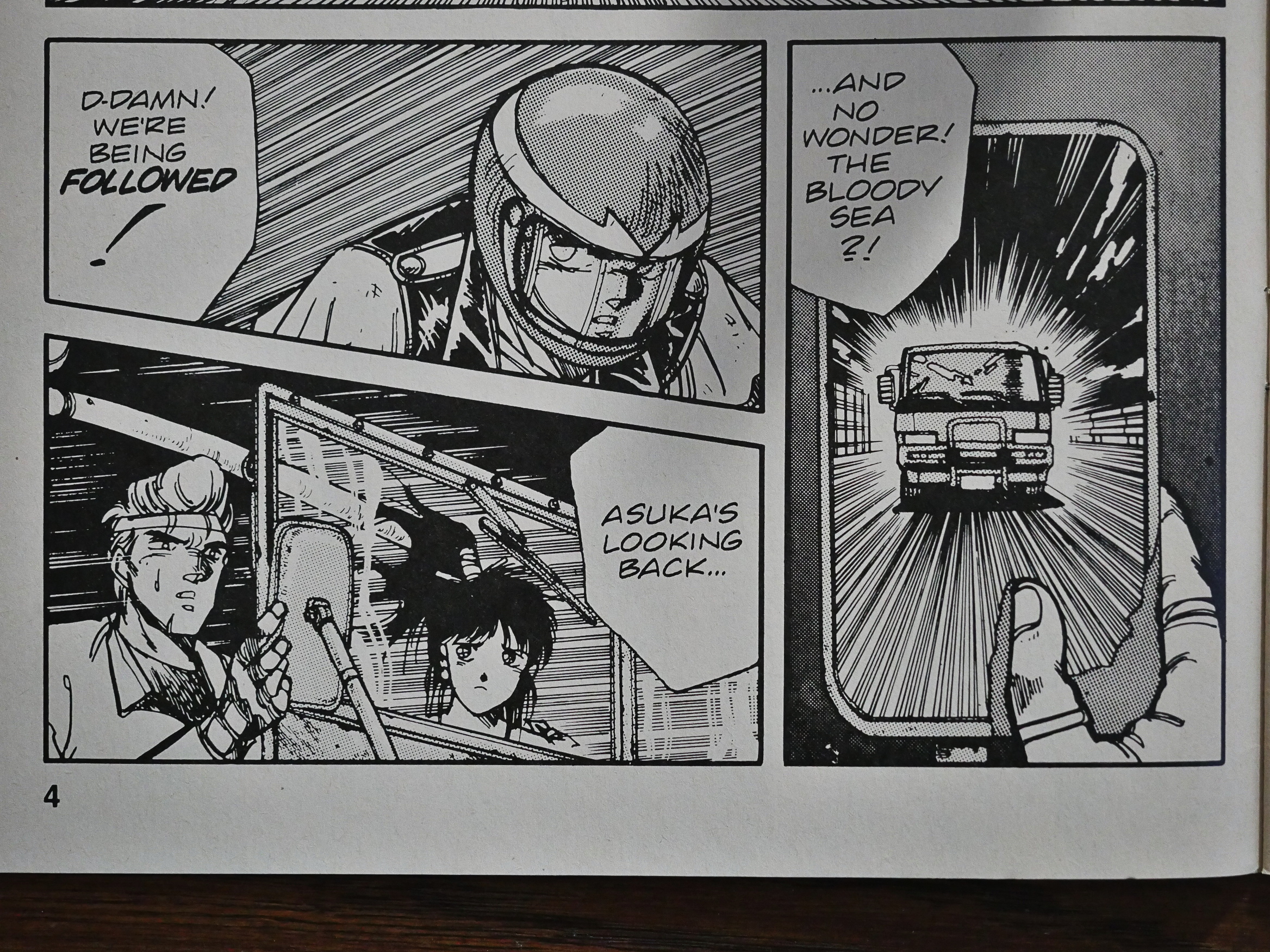
They must be driving in the Bloody Seamobile! Since he could recognise the truck by just glancing in the mirror.
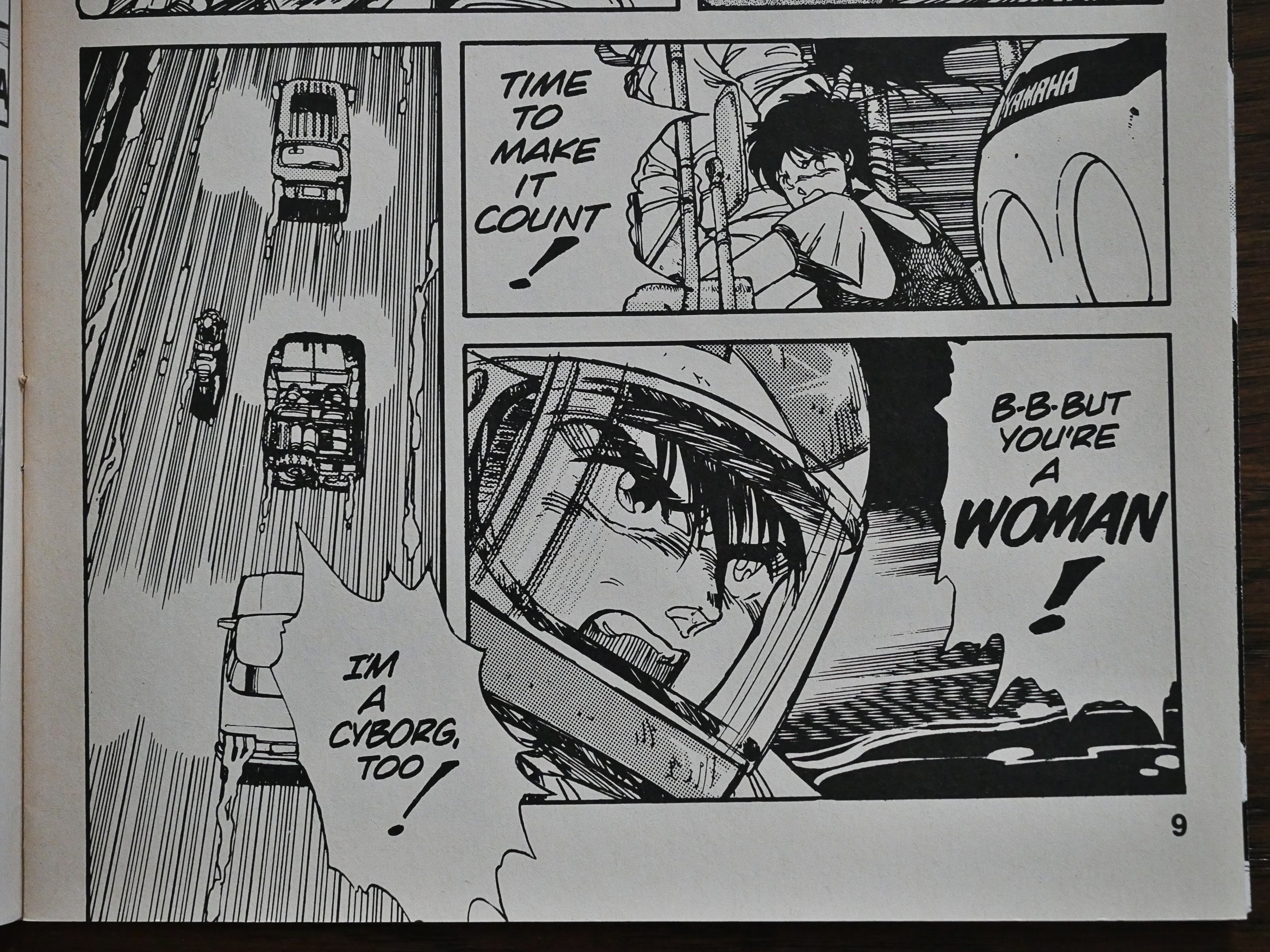
A WOMAN! IT CANNOT BE!
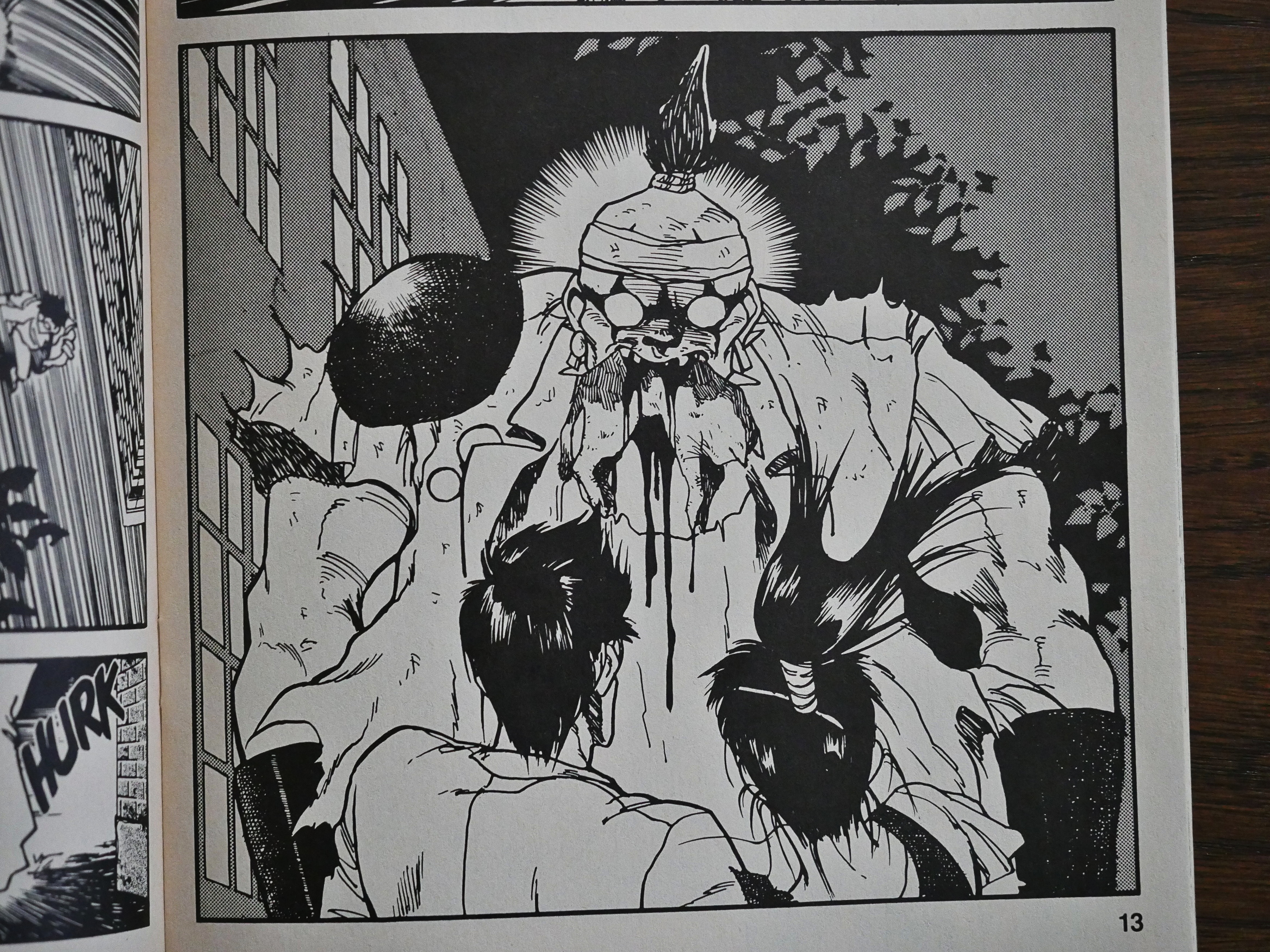
As the series progressed, it got a bit repetitive. We get basically four groups of villains, and this is the best one. (He’s chewing a kitten. Because he’s evil.) But there’s not much in the way of anything interesting going on otherwise, so I totally understand that Masaomi Kanzaki abandoned it after four collections.
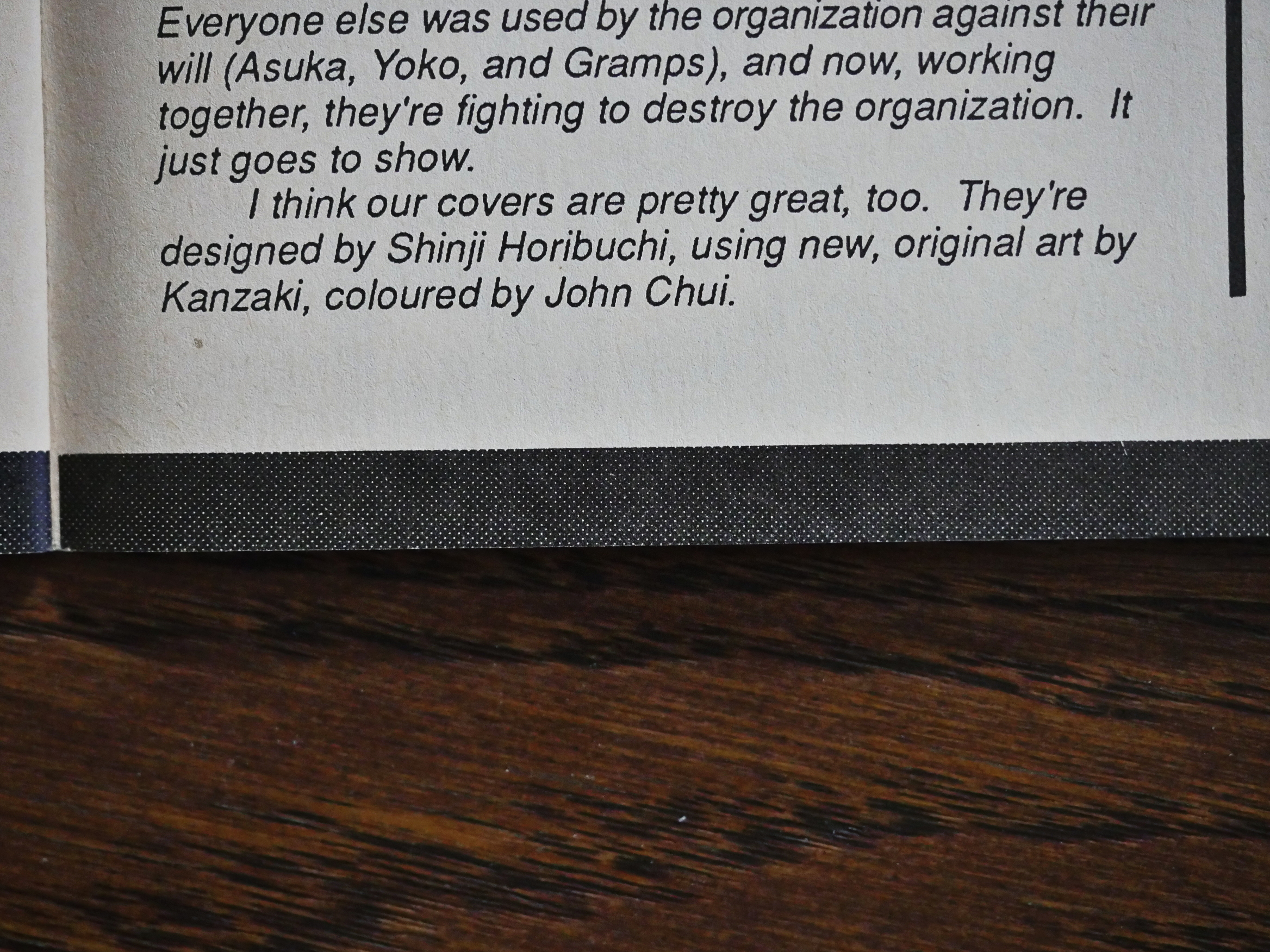
Oh, the artwork was specially made for this series by Kanzaki? It’s the only one of the four Eclipse/Viz series to get that treatment: All the other ones just reused old artwork.
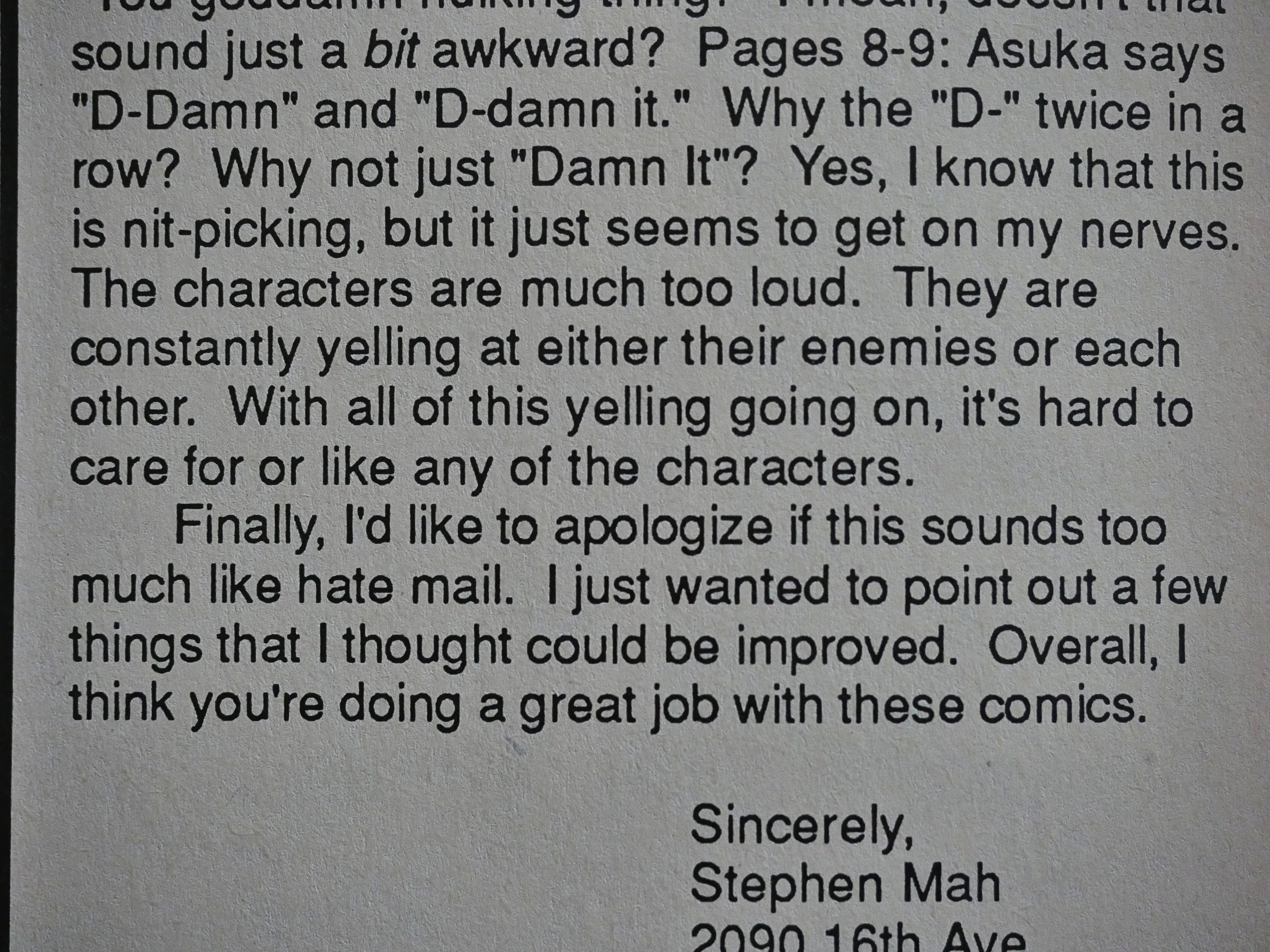
The letters are overwhelmingly positive, but there’s one that thinks there’s too much shouting.
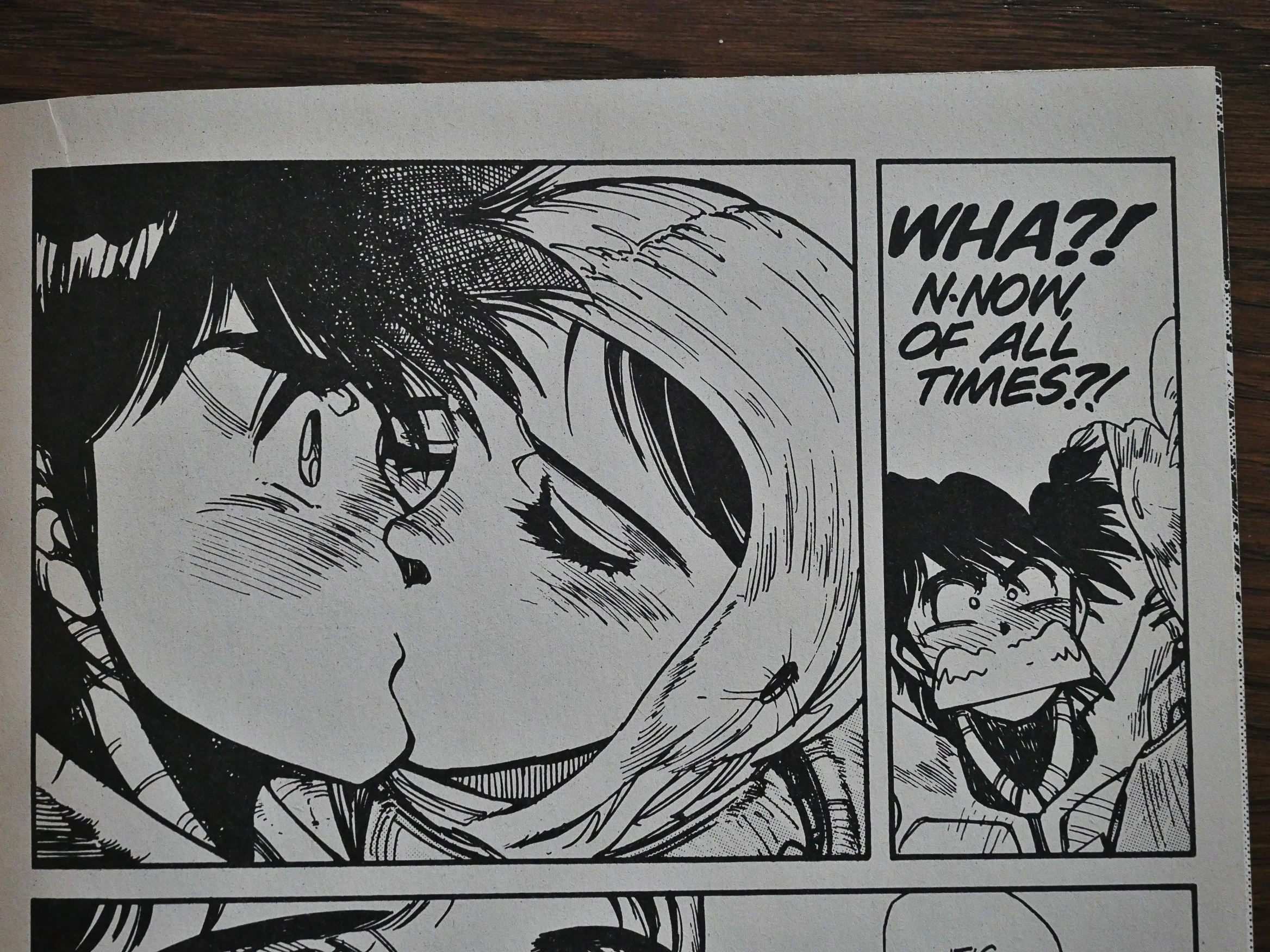
There’s some levity and romance, but they mostly steer well clear of those icky bits.
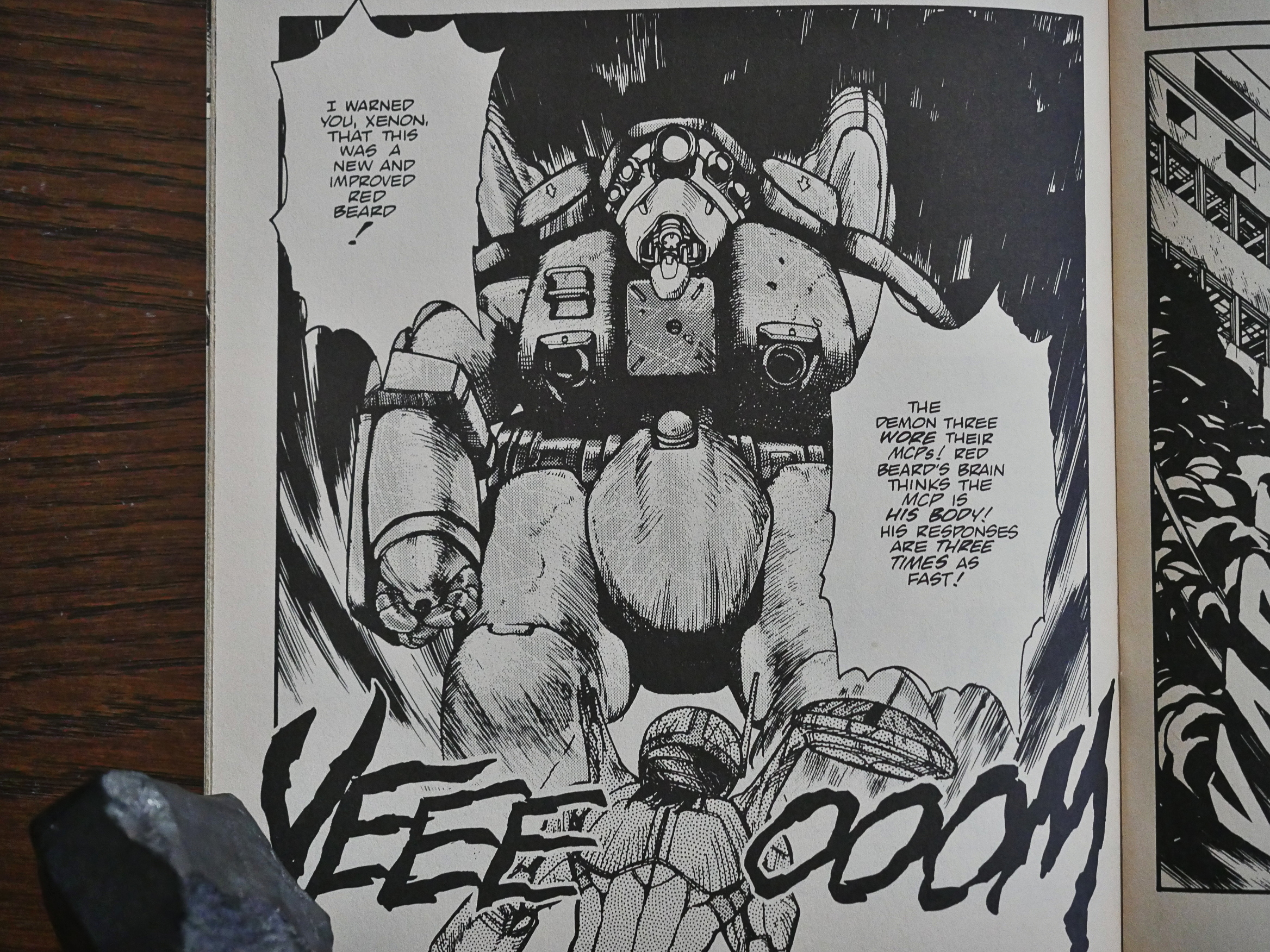
So that we can concentrate on the final boss fight. But isn’t that boss rather Katsuhiro Otomo-like? The earlier villains weren’t, so perhaps Akira was taking off at the time or something… It’s too hot here to do research…
The final issue says “The End”, but it’s not much of an ending. I’m guessing the creator just got tired of it, or perhaps the editor did.
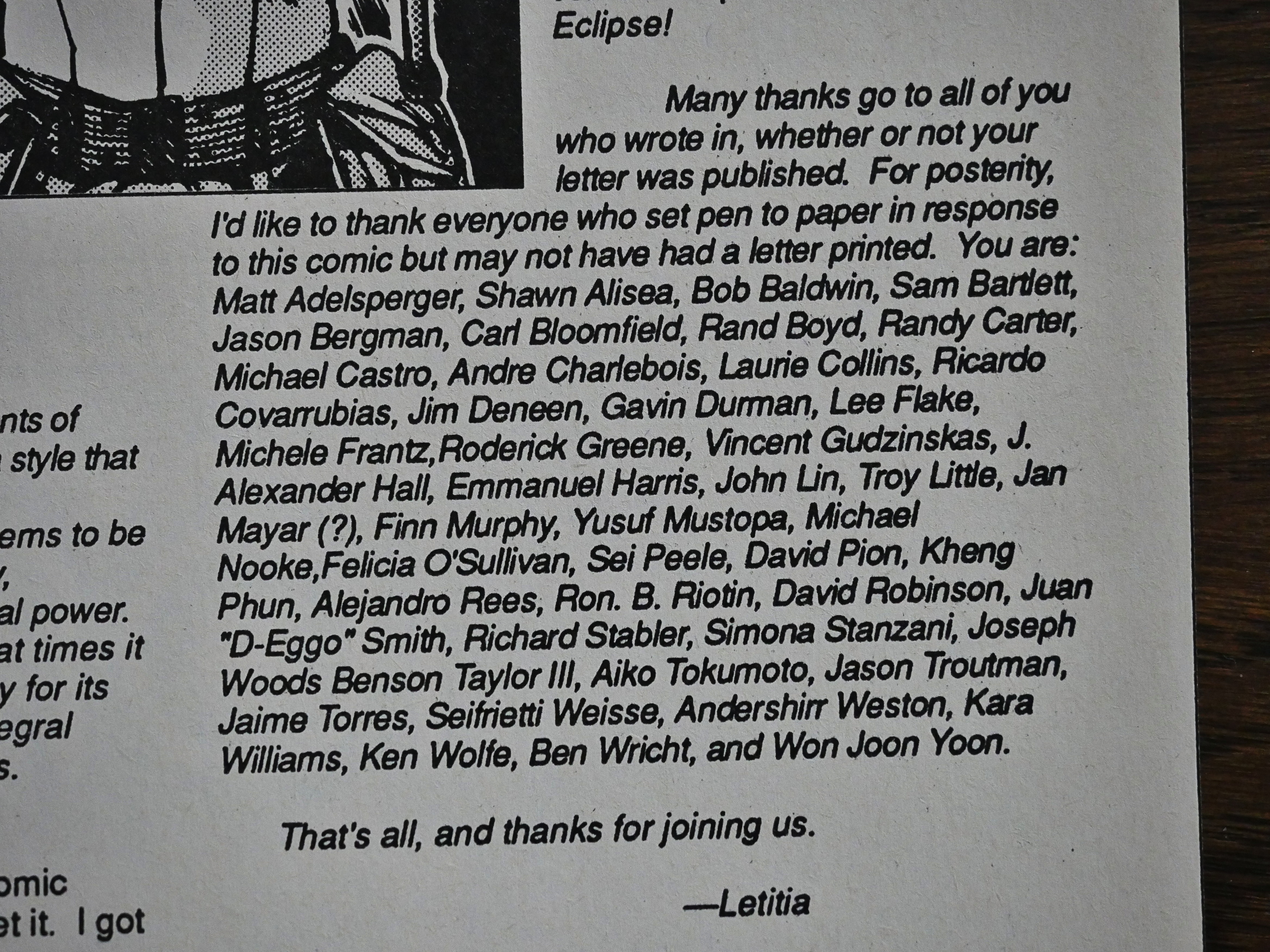
In the final letters page of all these Japanese reprint series, the editor, Letitia Glozer lists all the people who have written in, but not had their letters published. There was only room for a letters page in about every fourth issue, so a lot were left out, apparently.
Viz has reprinted Xenon as a four volume trade paperback series in 2002, and I’m not surprised. I don’t think it’s a particularly good series, but it’s not bad as these things go. And it’s a quick read.
Finding a review proved difficult, but I found this Italian one, which I quote via Google Translate:
“I’m glad I fell in love with a man named Asuka Kano!”
With these words the young Sonoko heartened our protagonist in the last chapter of the series. And in this sentence we find one of the most beloved torments of Japanese iconography: the cyborg and the struggle of this being, halfway between man and machine, for the affirmation of its human side. Kikaider, Kiashan, Hiroshi of Jeeg Robot … the list goes on for pages.
Perhaps this is why the Xenon manga , which appeared on the mythical “Zero” magazine in the nineties, permanently settled in the hearts of many Italian readers.













